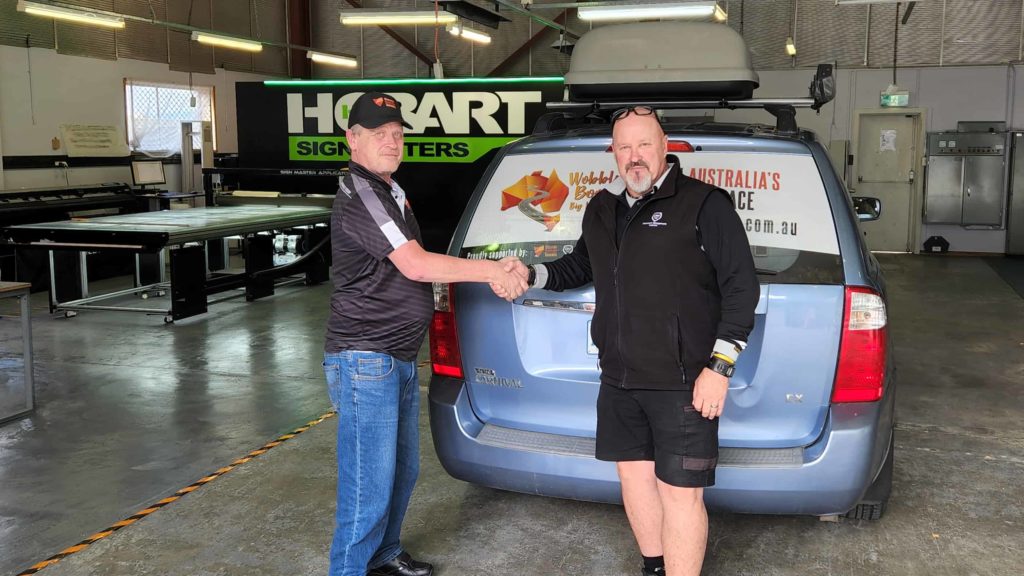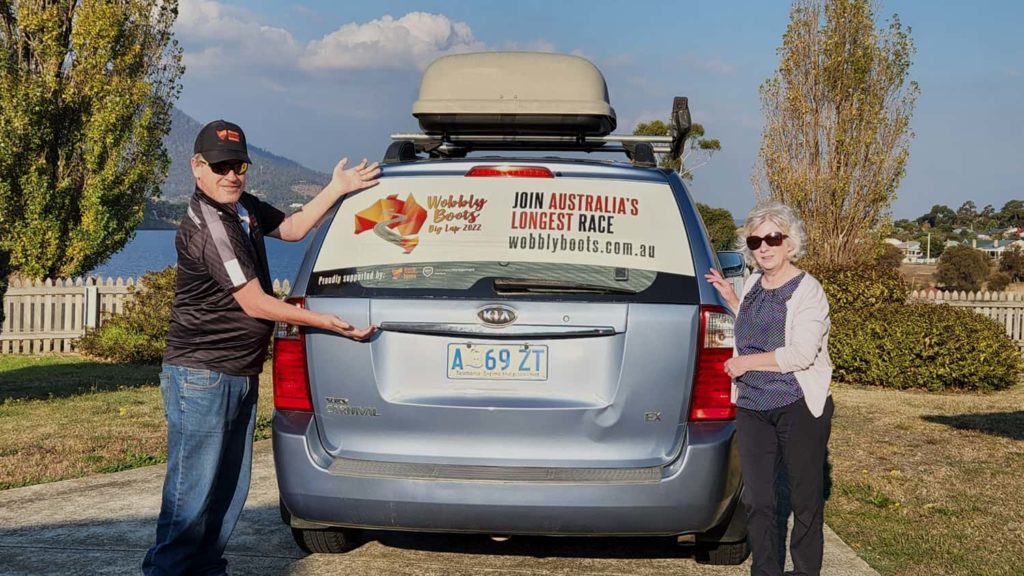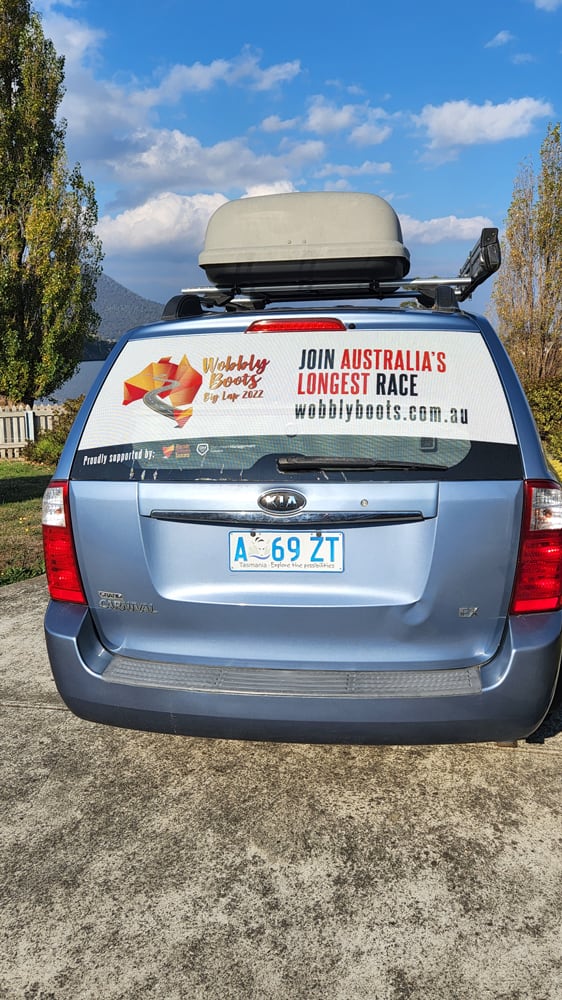Bega is a picturesque town nestled in the Bega Valley Shire on the Sapphire Coast of New South Wales, Australia. Surrounded by rolling hills, green pastures, and rivers, it enjoys a location that’s both scenic and agriculturally productive. The area’s fertile soil and mild climate make it ideal for dairy farming, which has been the backbone of Bega's economy and identity for well over a century.
As we approached the town centre from the north I couldn’t help thinking Bunnos, or the hardware store equivalent a while back must have had a fire sale on Poplar Trees and the locals took full advantage.
Bega itself is a bustling small town with a few art deco buildings mixed in with mainly historic buildings dating back to the late 19th and early 20th centuries that reflect its long-standing agricultural roots.
But we were there for the cheese.
The Bega Cheese company has deep ties to the town's history and development. Founded in 1899, it began as a cooperative of local dairy farmers who aimed to make the most of their milk production by pooling resources. This cooperative structure allowed the farmers to share in the profits and enabled Bega Cheese to grow steadily while retaining its strong ties to the community. Originally, Bega’s cheese was crafted in small batches that highlighted the rich flavour of the local milk, soon establishing a reputation for quality that spread throughout Australia.
The gold standard for me has always been the completely acccessible and immersive experience at Ashgrove Cheeses in Northern Tasmania so I was expecting big things from Australia's largest cheese company. I left underwhelmed and disappointed.
Sure they covered the accessibility basics - disabled car spot (1 in a large car park down a hill), disabled toilet in the carpark and a large access ramp into the building but that's where consideration for mobility impaired people ended.
The good stuff, the museum and heritage display - the reason we were there - was up a quite steep staircase on the second level and completely inaccessible to people with mobility issues.
Like a few places we've encountered during our journey, accessibility stopped at the cash register, I could access the cafe, souvenirs and produce for sale ok - but the interesting stuff gave me the choice of risking a major fall by climbing and then descending a large staircase to see it or forgetting it and having a coffee while Kathy went upstairs to check it out. I chose the latter.
The coffee was ok but it came with a huge slice of self congratulation as an unavoidable promo video looped through on a big screen telling a story of how one man's vision took a successful co-op formed by farmers in 1899 and took it to a billion dollar plus turnover by privatising and expansion over the last 20 years or so.
I found it annoying really - it was the only thing I wished was upstairs! Much more suited for a private viewing room, leaving me to enjoy my coffee in peace.
I was expecting to enjoy some cheese at Bega but instead left with a sour taste in my mouth
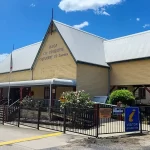
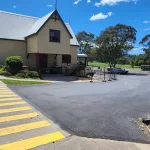
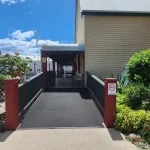
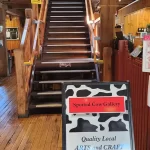
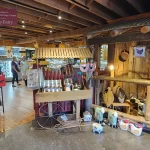
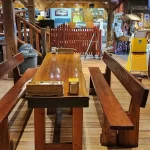
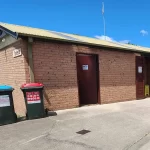
Mataranka
About an hours drive south of Katherine lies the town of Mataranka. It’s a small town, less than 400 people, but is steeped in colonial history and is home to perhaps Australia’s best known Thermal Pool and Hot Springs.
I first heard of Mataranka decades ago when I read Jeannie Gunn’s classic Australian Novel, We of the Never Never, then watched the subsequent film in the early 80’s. Both the book and film painted a fairly bleak picture of the region, particularly in the uneasy relationship between the European settlers and the local indigenous population.
As we rolled into town mid afternoon on a Sunday I was interested to see if things had changed in the ensuing 100 years or so.
First impressions aren’t great, a couple of roadhouses, a pub, café and supermarket occupy the western side of the 300 metre or so commercial strip of the Stuart Hwy. Most of them with prominent security grills on windows and fences and don’t feel the least bit welcoming. More utilitarian – come in, don’t cause trouble, complete your business, leave.
The eastern side of the highway is well maintained greenspace and carparks, halfway along which is the world’s largest man-made termite mound. Why? I think to myself as we pass it. But of course, by this point of our journey, we’d seen millions of termite mounds, large and small and had long ceased to wonder at the architectural skills of the industrious insects. The notion of a man made one seemed surplus to requirements.
On the lawn opposite and 80 metres or so down from the hotel there’s a collection of people, around a dozen or so - sitting, waiting, watching. A couple of them asleep, the rest in a rough circle passing a bottle around. One notices me looking and offers a lazy wave as we drive by.
Back outside the pub the local constabulary is checking licences of entering patrons, enforcing take away alcohol limits and dealing with intoxicated patrons. I’d be subject to the same ID checks later when I went back into town to purchase a bottle of wine for Kathy. Once inside the manager is in a heated expletive laden discussion with an inebriated patron while serving me and, after checking my licence again, expresses surprise that I only want a standard size wine bottle – not a flagon. Seems there’s still some issues.
Accommodation options are limited – there’s the pub, the Mataranka Homestead Tourist Resort out near the hot springs and The Territory Manor Motel and Caravan Park which we opted for. Shady spots under trees, live entertainment and a laid-back vibe.
The entire site was nice and flat and I had no difficulty moving around the park but once again encountered the bane of my Northern Australian experience – a raised amenity block. This one was particularly difficult – only three steps but no handrails and wide doors that opened outwards. To enter I would have to walk up the steps, open the door slightly, move back down the steps to give the door enough room to open fully then struggle back up the steps. Because of the width of the door I couldn’t reach from the top step to grab the door and close it behind myself. Back to surreptitiously peeing behind trees and sponge baths!
Bitter Springs
Nestled in the Elsey National Park just a few kilometres east of town across Roper Creek, the town’s biggest draw is the Mataranka Thermal Pool and Bitter Springs.
On the short drive in, the red dust, water starved lawns and ubiquitous termite mounds gradually give way and you arrive at a true oasis, startling to me considering the contrast to the hundreds of kilometres of inhospitable land surrounding it that we’ve driven through.
While the thermal pool itself is man-made, the surrounding environment is entirely natural, with towering cabbage palms providing shade, and the nearby Roper River adding to the peaceful atmosphere. A wide flat concrete path winds a couple of hundred metres through a hybrid of gum tree laden Australian scrub and lush palm forest until you eventually arrive at the Thermal Pool.
Metal steps allow access to the water but one glance at them and I know that whilst I can probably get in easily enough, getting back out would be a problem. Accessibility for the paths, car park and surrounds A+ - access to the water, the main attraction, D-
Kathy jumps in and I content myself for an hour or so wandering around the surrounds, talking some photos and chuckling at people floating down the gentle current of the Bitter Springs on anything that floats, before heading back up the path and doing it all over again - The world’s slowest carnival ride. The prepared, or at least those in the know, had pool noodles aiding them while several made do with improvised mini rafts of eski lids or inflated silver goon bags, some of which I reckon weren’t empty before they started.
All in all, I can recommend a visit to this beautiful place if you are passing through Mataranka for the location alone. Accessible car parking, wide flat concrete paths with plenty of seating and accessible amenities in the carpark.
My experience was diminished however by the lack of accessible entry and exit to the water for those with mobility issues. I hope this will be addressed by them in the future.
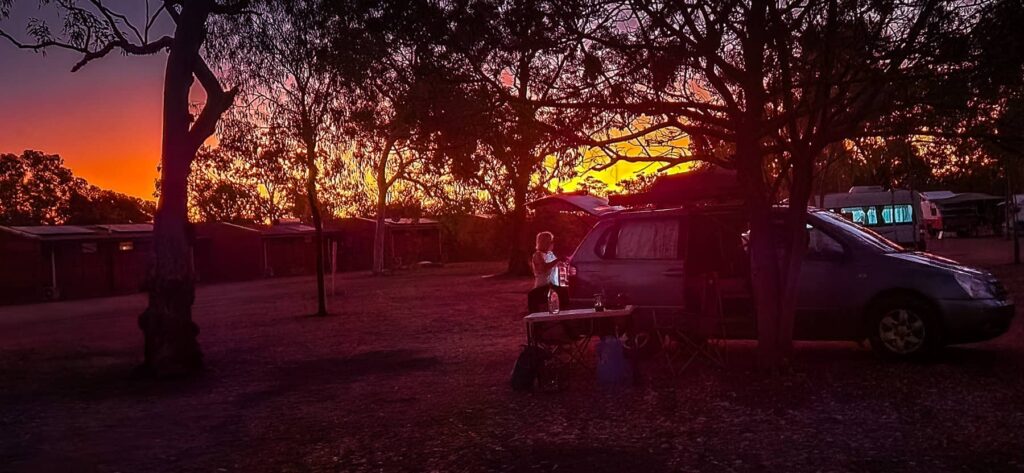
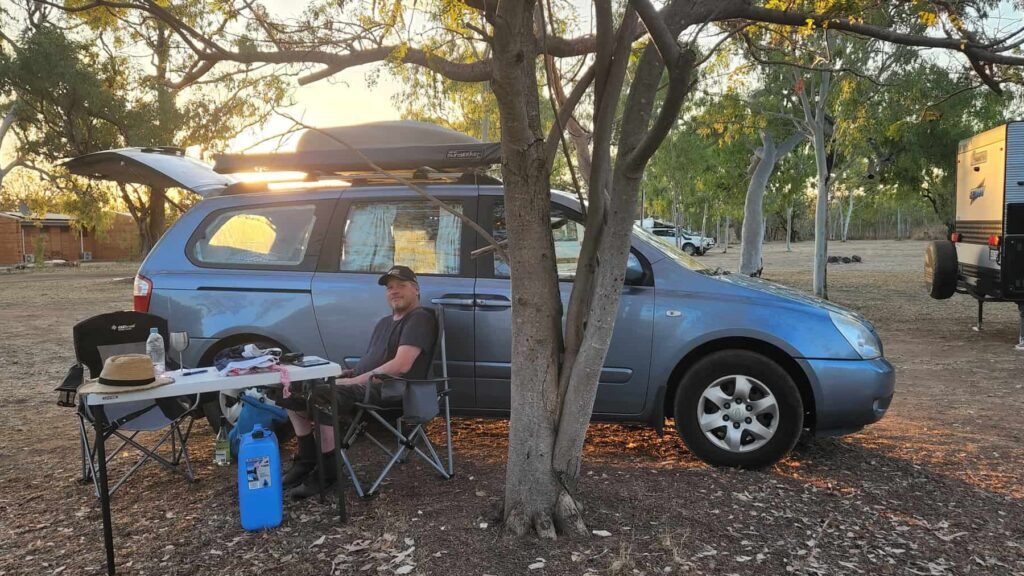
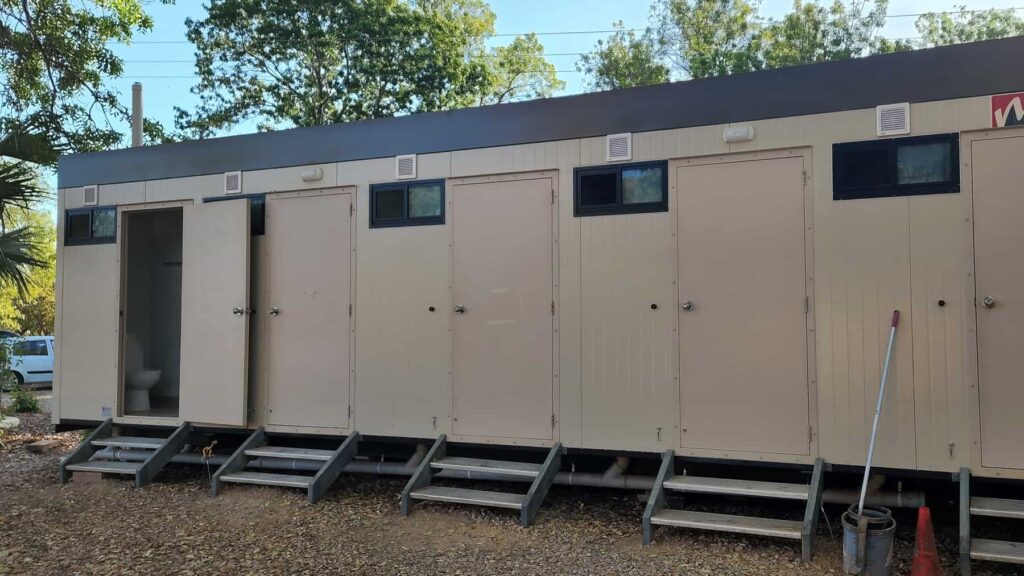
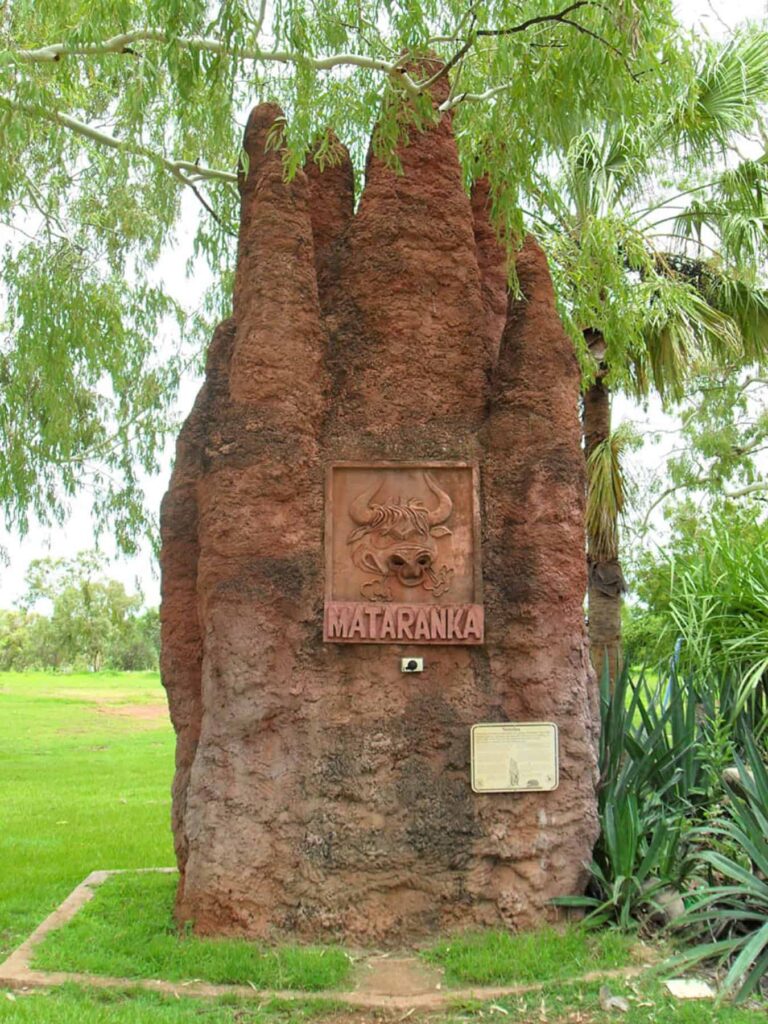
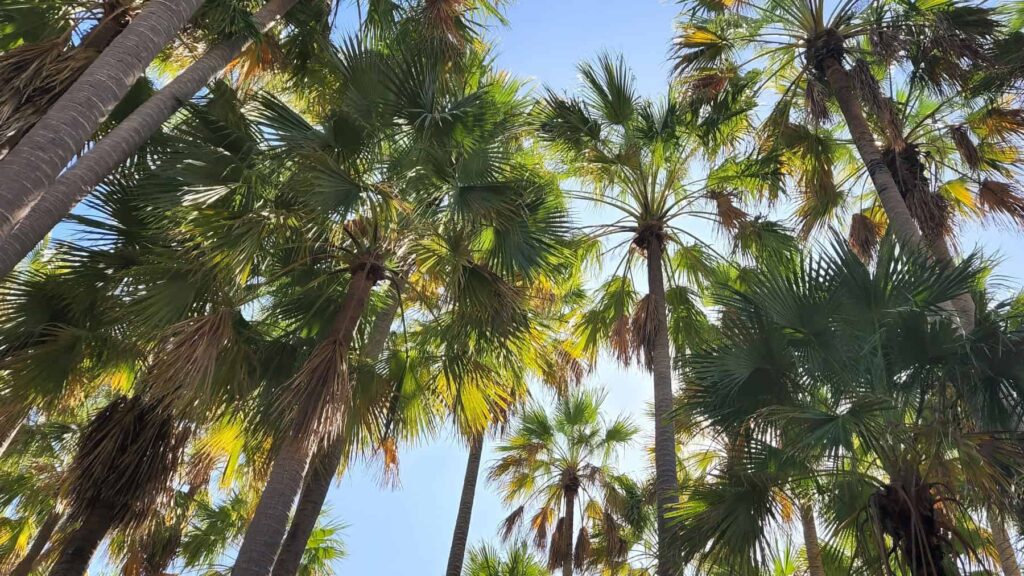
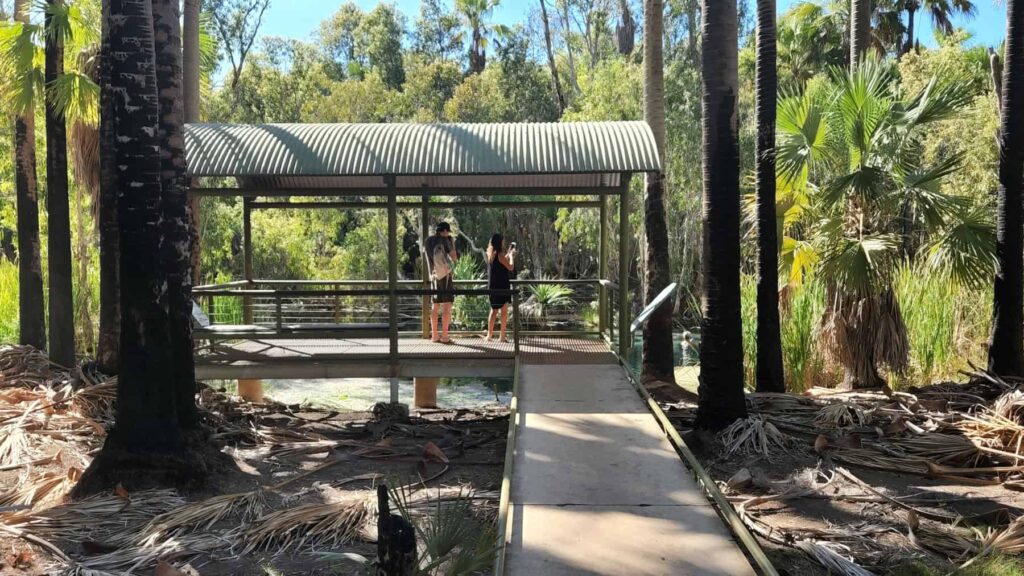
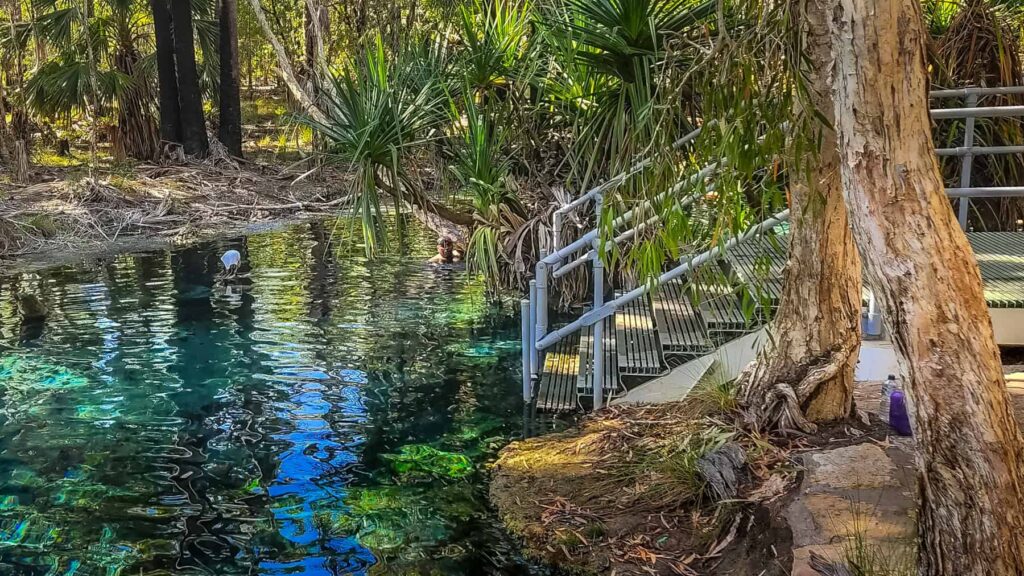
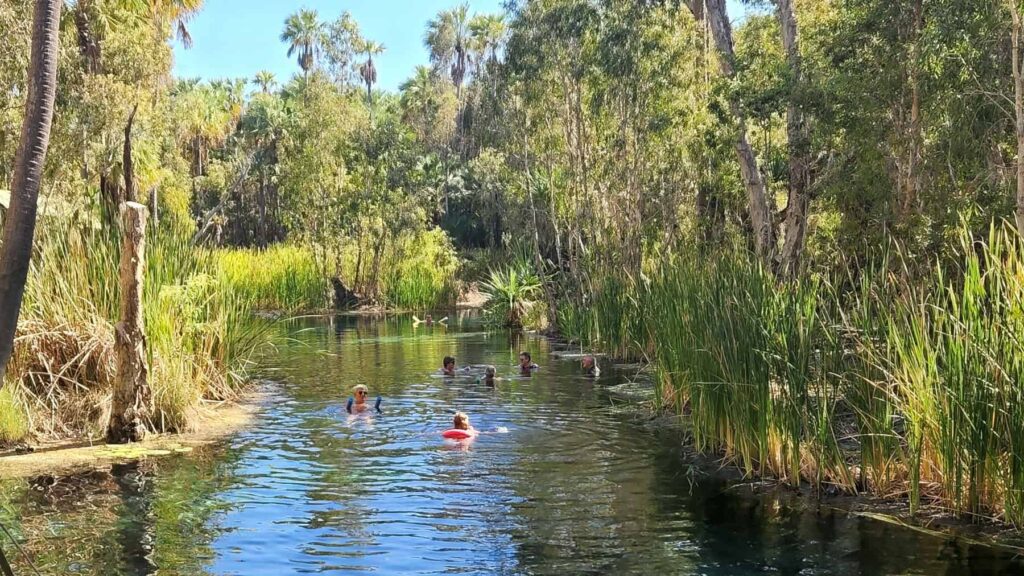
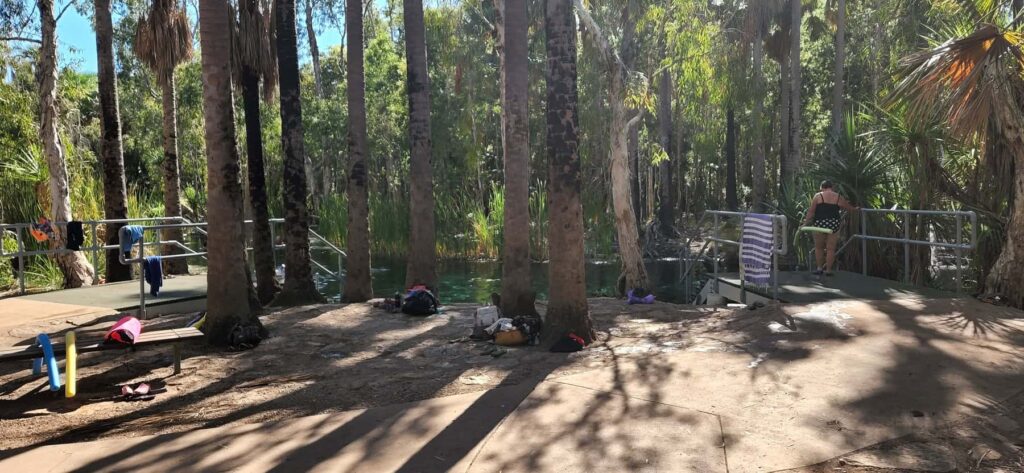
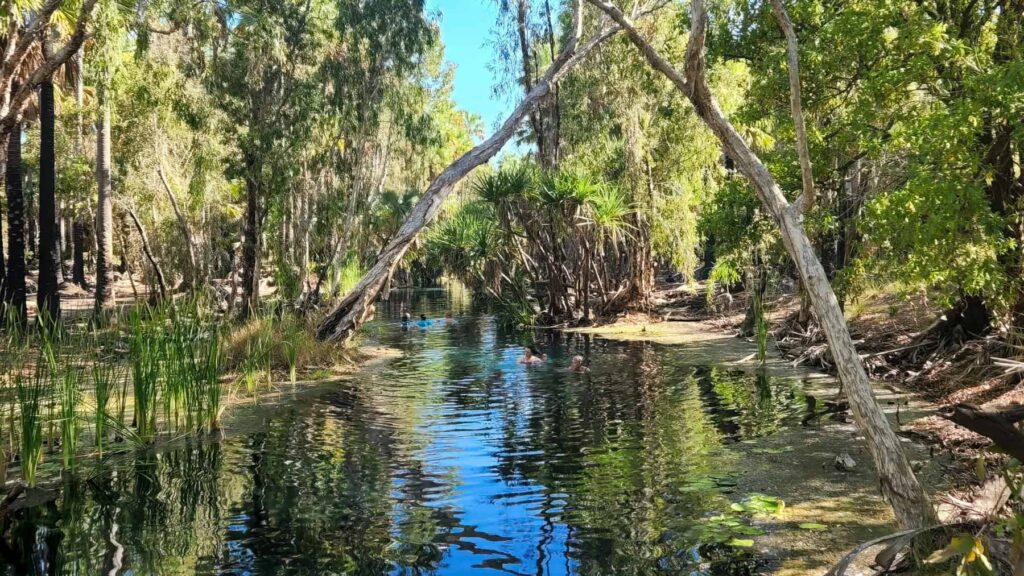
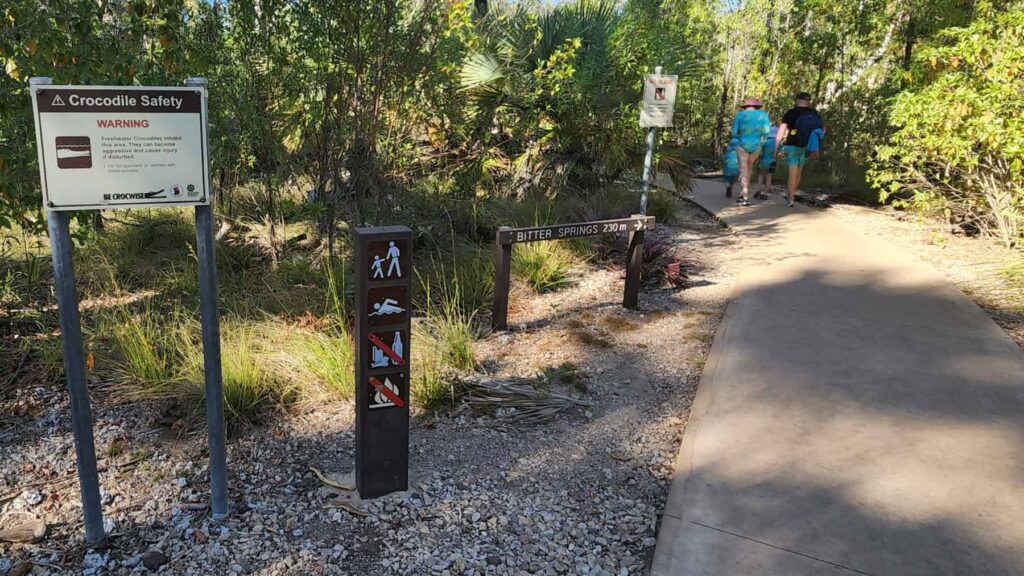
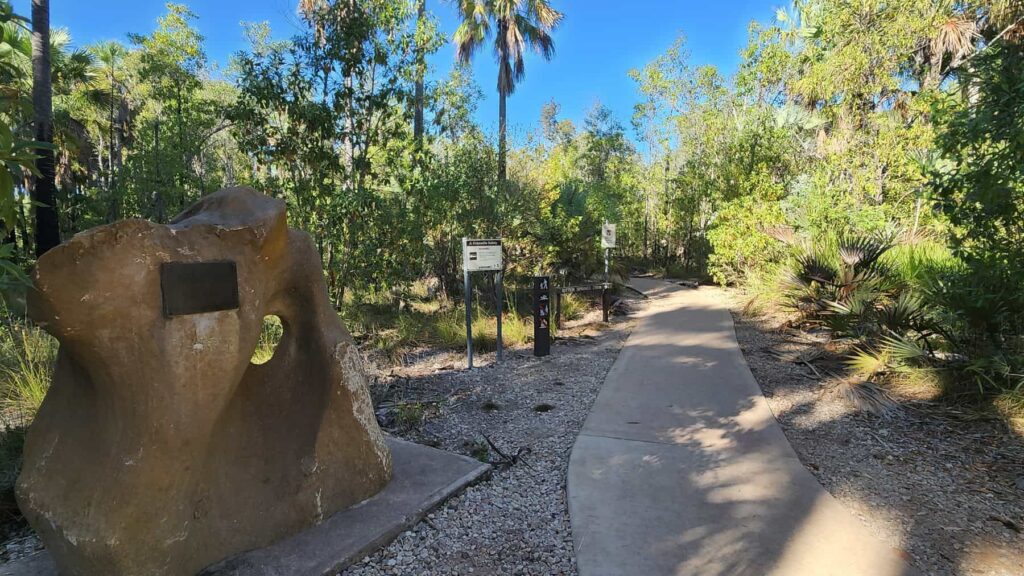
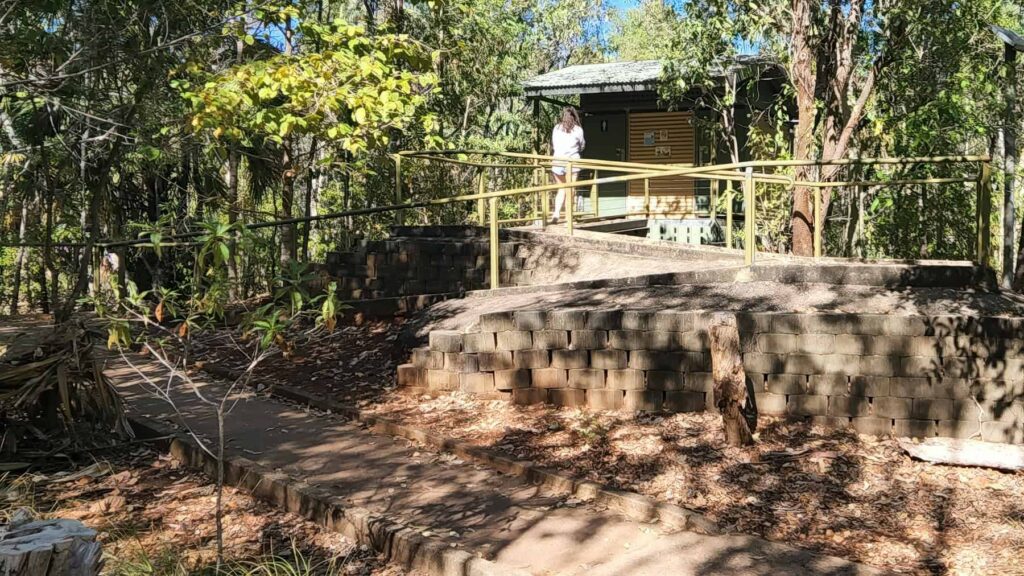
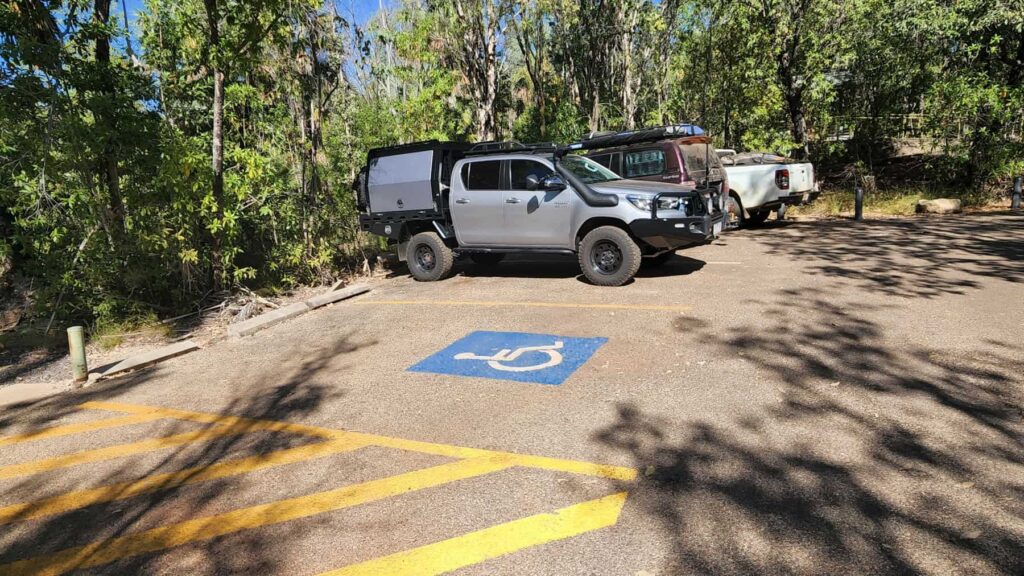


With our way north to Parkes from Narrandera stymied by persistent rain and subzero overnight temperatures, we decided to move Canberra up in the schedule and spend a couple of nights in a warm hotel room in the heart of our nation's capital. A leisurely drive through Wagga Wagga and Gundagai had Parliament House in view by late afternoon so we did a drive by, waved to Albo from afar under the careful gaze of the Federal Police, did a quick tour of Embassy Way and headed to the Hotel for a bit of R&R.
The next morning we headed to The Australian War Memorial, a place that's long been on my bucket list. My generation thankfully, unless one has chosen military life as a vocation, has never endured large scale conflicts and the horror and hardship they have wrought on our forebears. I had expected goosebumps but was not prepared for the waves of emotion that washed over me as I moved though the exhibits, onto the Wall of Remembrance and the Tomb of the Unknown Soldier.
Countless stories of shit scared young men and women, some individually and some collectively, staring down that fear and acting decisively and heroically in the face of overwhelming danger to themselves fires your imagination. This isn't Boy's Own stuff or the Biggles Comics that I read voraciously as a child, these were real people, living in horrendous conditions doing extraordinary things for a cause that they believed in and for their mates. Especially their mates.
Far from glorifying war, this place honours those young men and women, who gathered together from all over our country and went off to war in a place far, far from home and didn't return. I reckon that deserves more than a few goosebumps.
Next on our list the following morning was the National Gallery of Australia, after checking out Old Parliament House and the Tent Embassy.
There are over 150,000 works of art at the gallery but I was only interested in one of them really - Jackson Pollock's Blue Poles.
Gough payed $1.3 million for it in 1973 which caused a furor at the time but on current value of over $350 million I reckon he did ok! I confess I don't really get it, I mean it looked ok to me, kind of pleasing in the way it visually comes together but I don't see what the fuss is about.
We spent a few hours wandering through the gallery, the architecture was interesting - reminiscent of MONA in places and like MONA some pieces I loved and some were - well meh.
I enjoyed the couple of days we spent in Canberra, our visit coincided with the swearing in of our new Cabinet so there was a buzz in the air and a feeling of optimism that we picked up on which was a surprise to me given we were fleeting visitors.
Accessibility: As you'd expect both the War Memorial and National Gallery have gone to great lengths to make ALL of their displays accessible to all mobility impaired people, Parking, access and toilets are disabled friendly.
On to Parkes now for bucket list item 3 the dish, via Bathurst so the Carni will get a spin around Mt Panorama with Kathy J at the wheel.
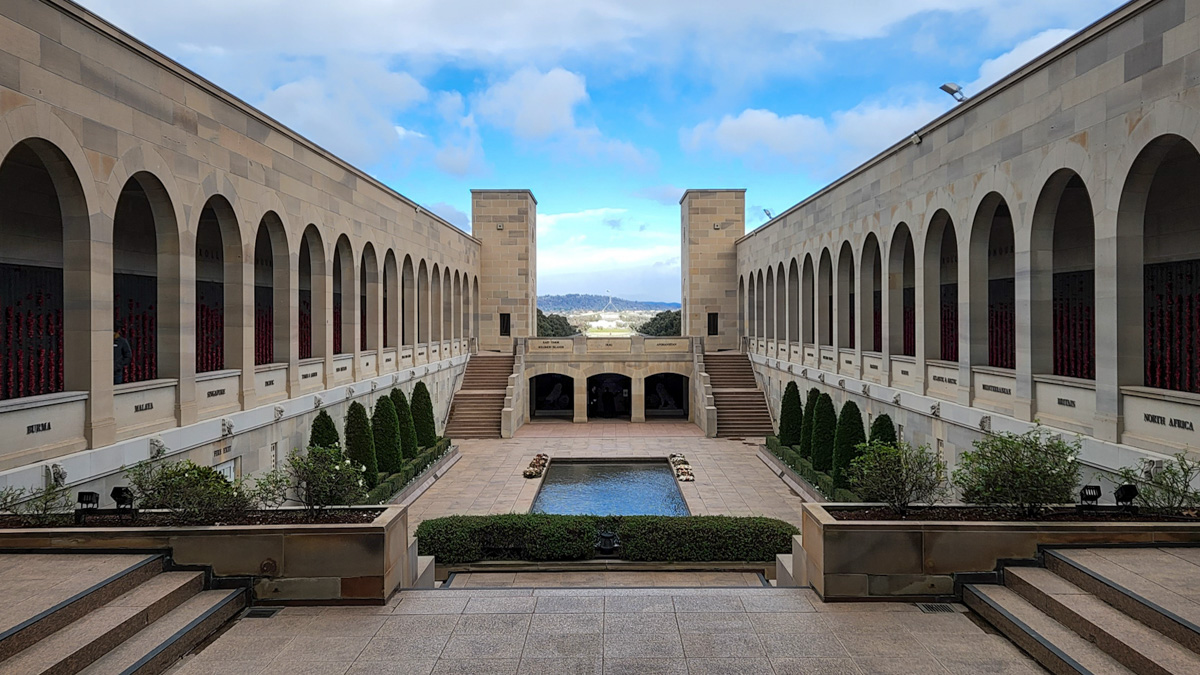
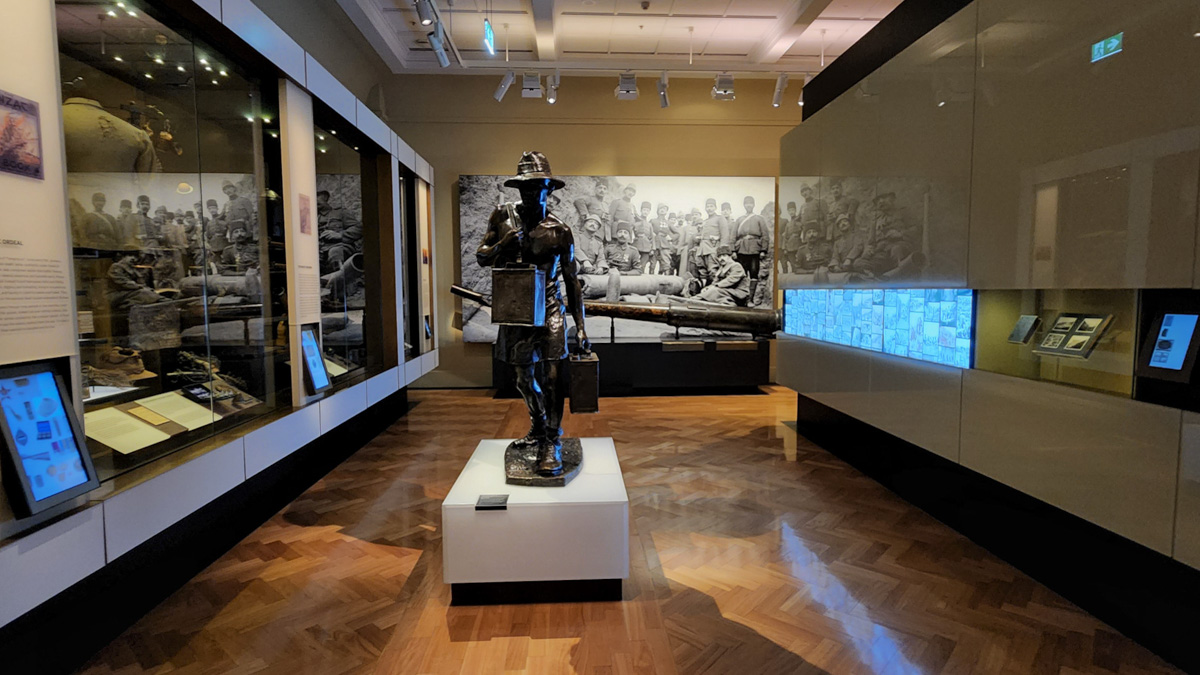
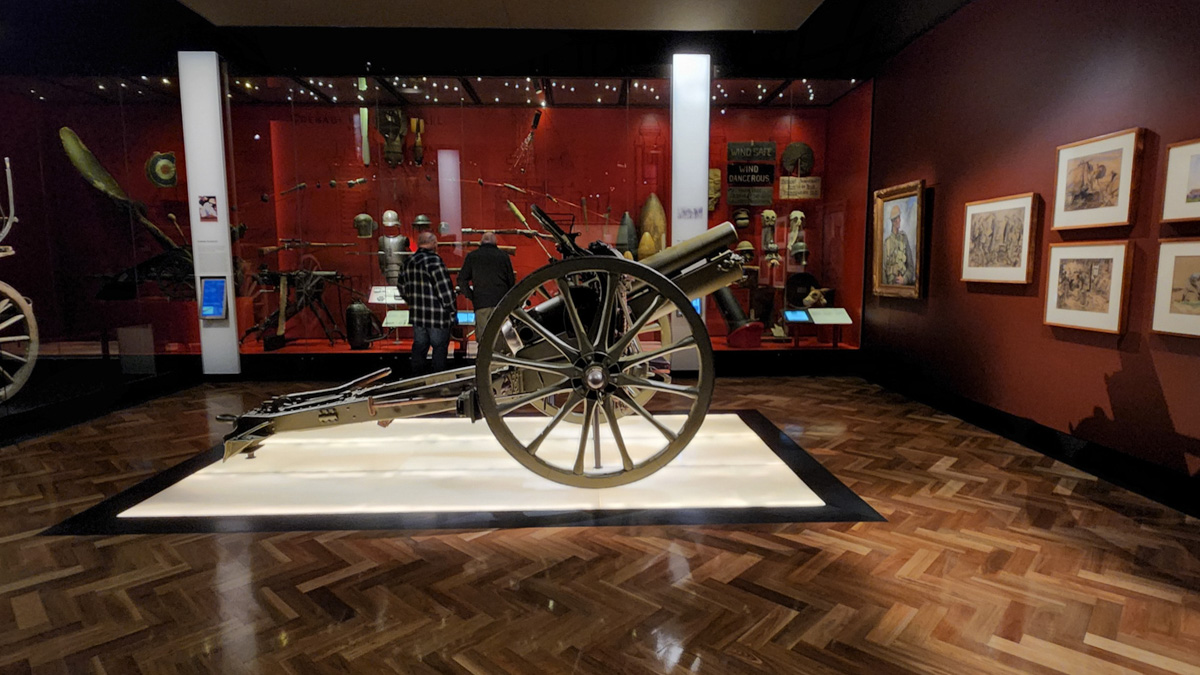
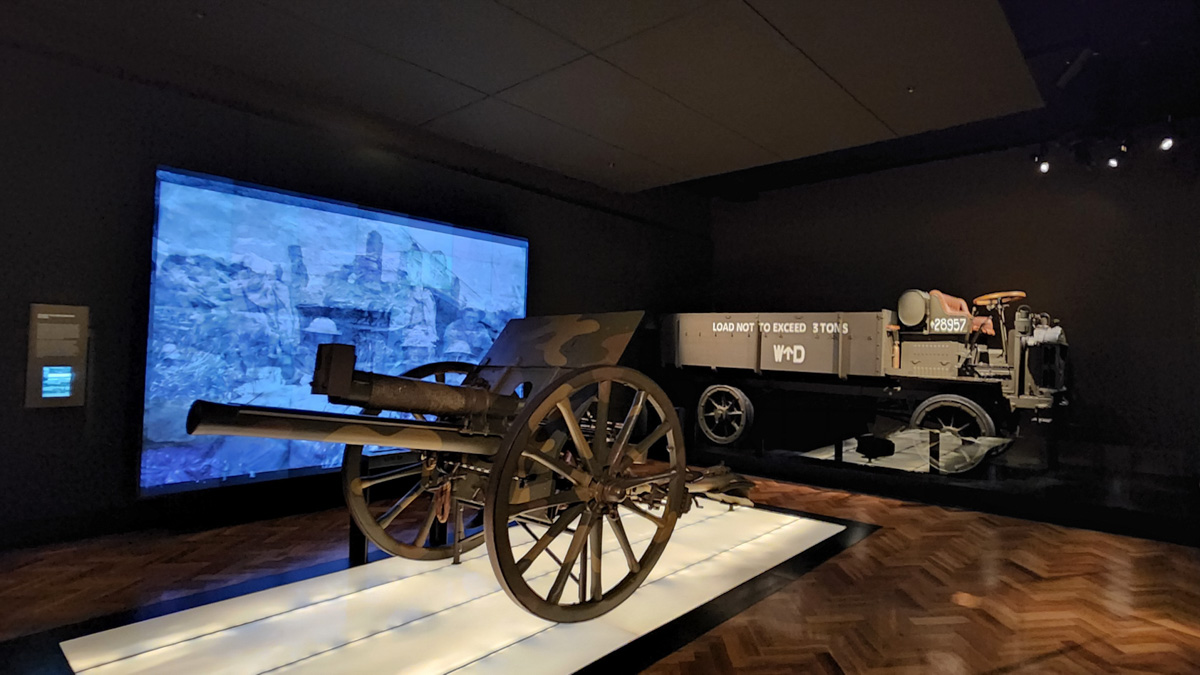
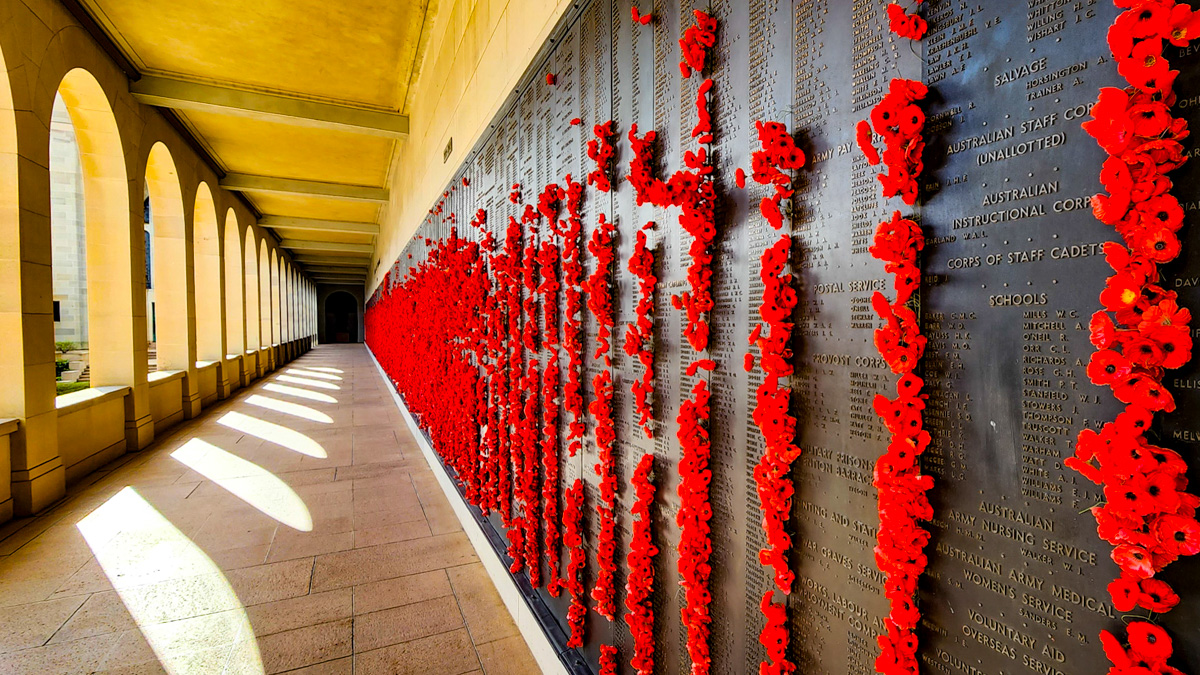
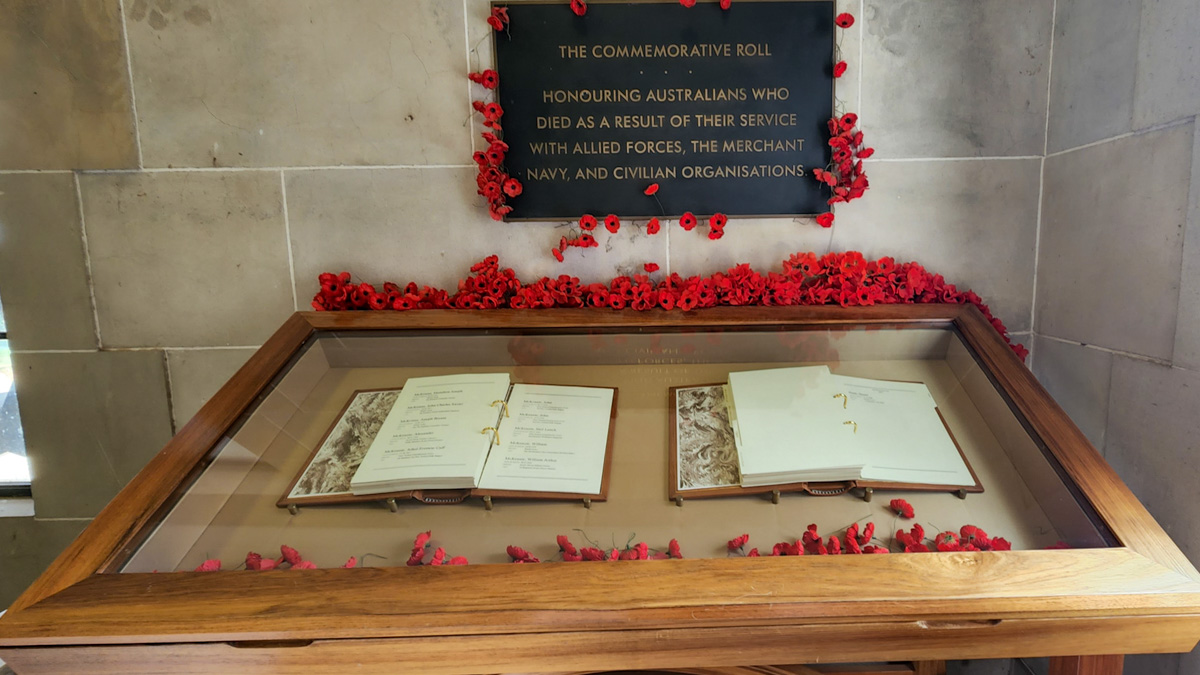
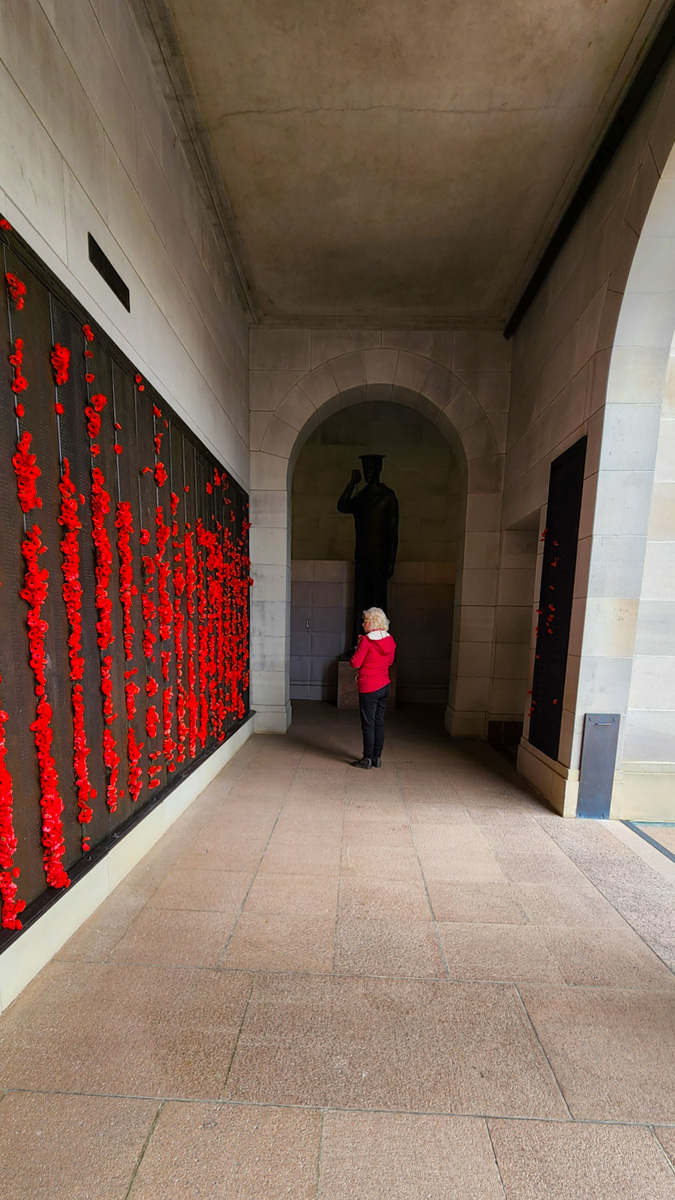
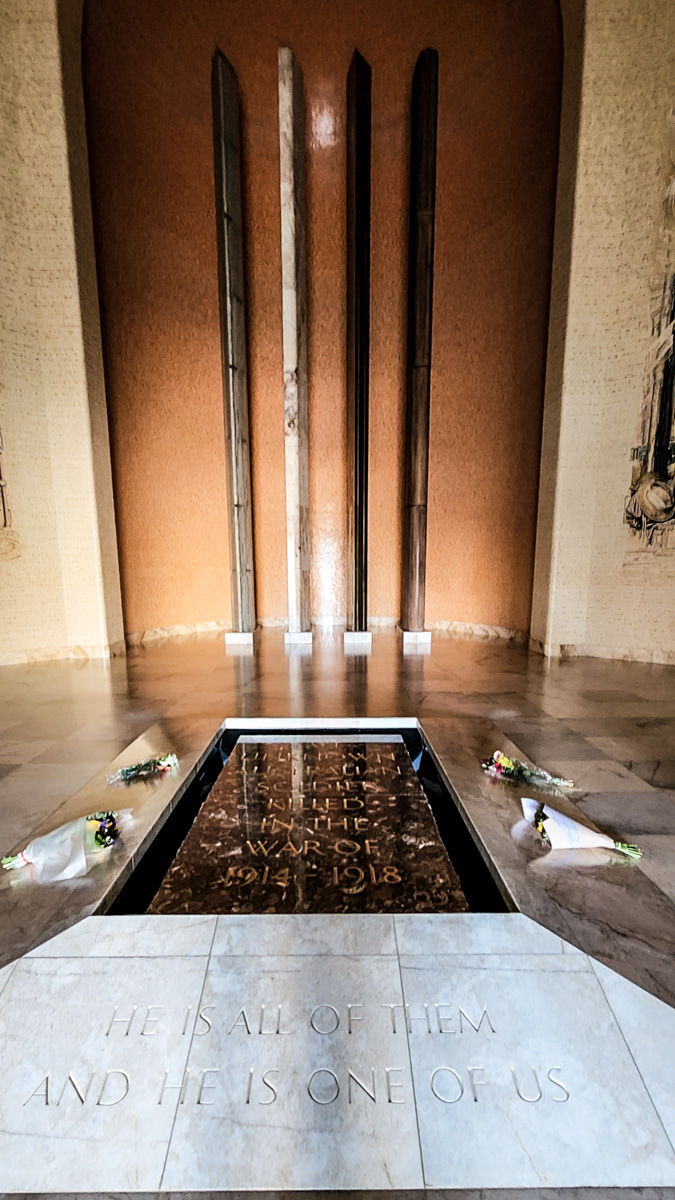
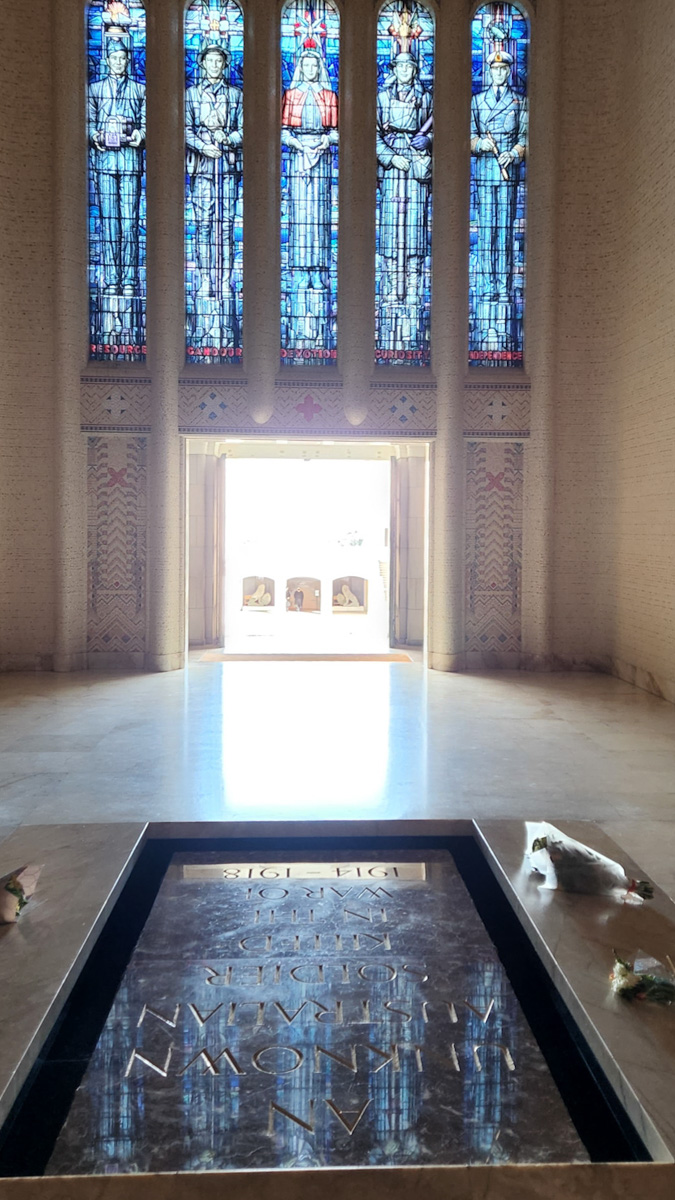
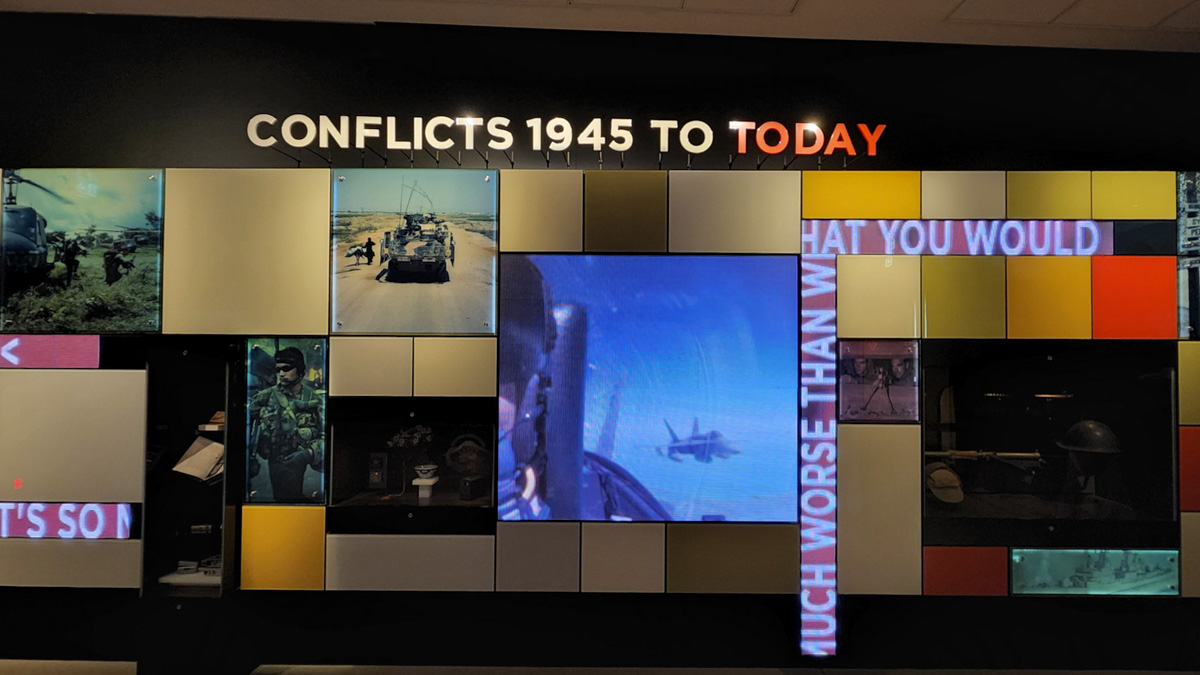
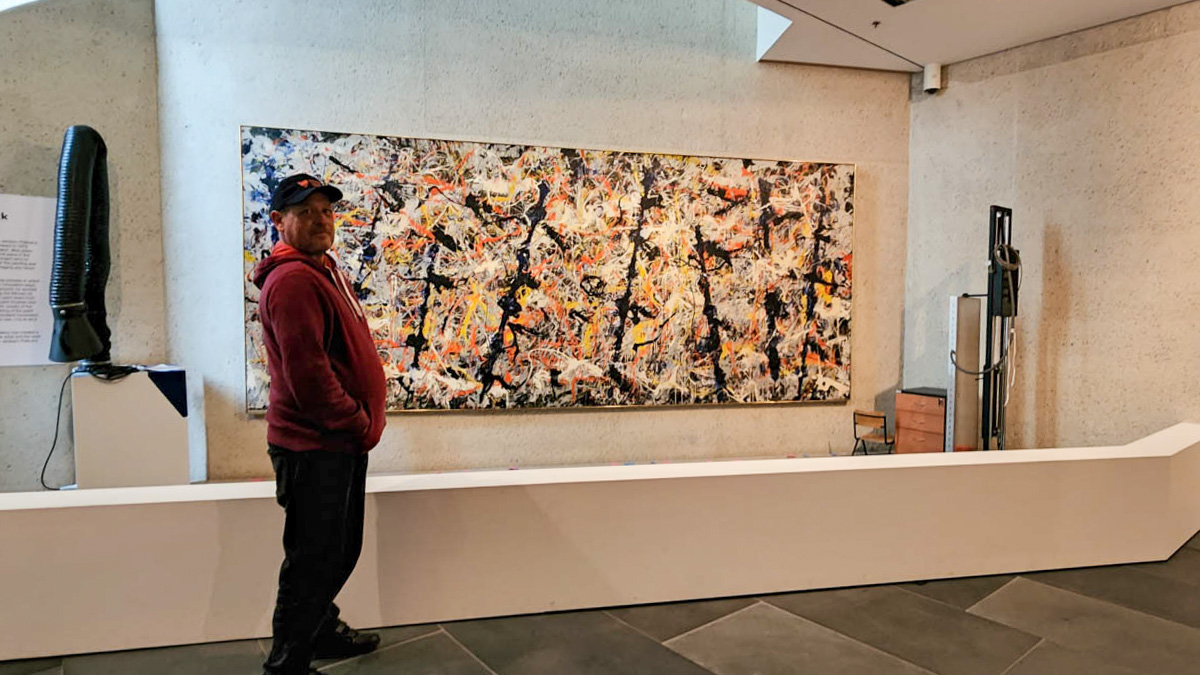
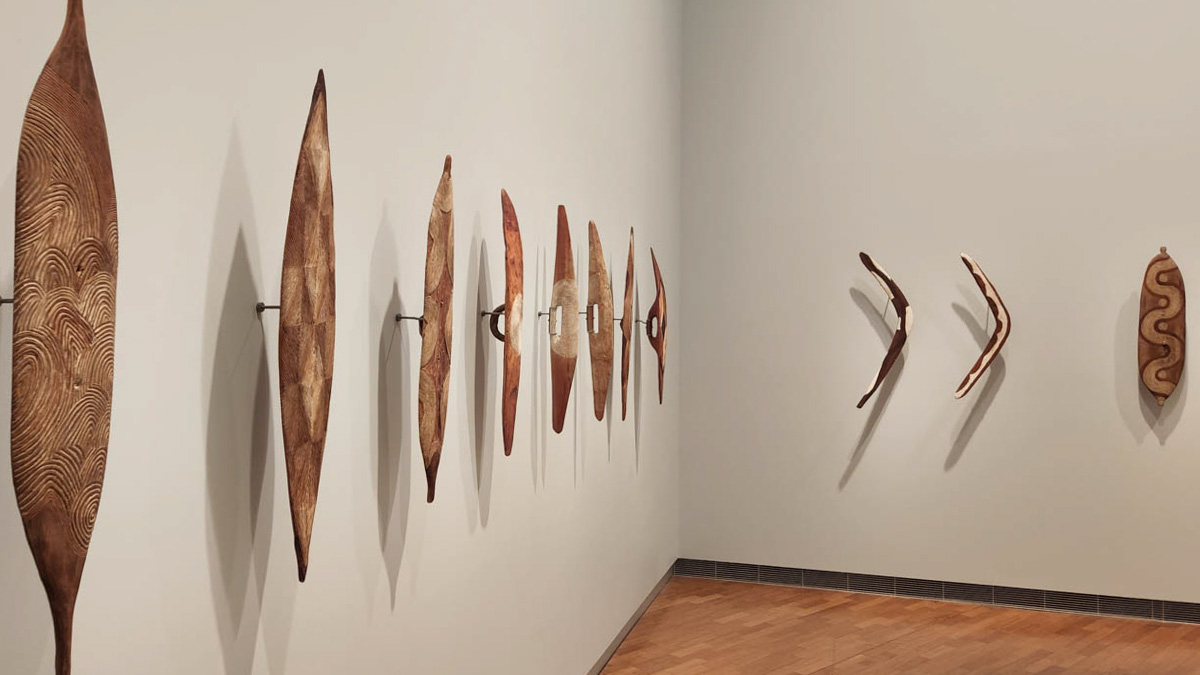
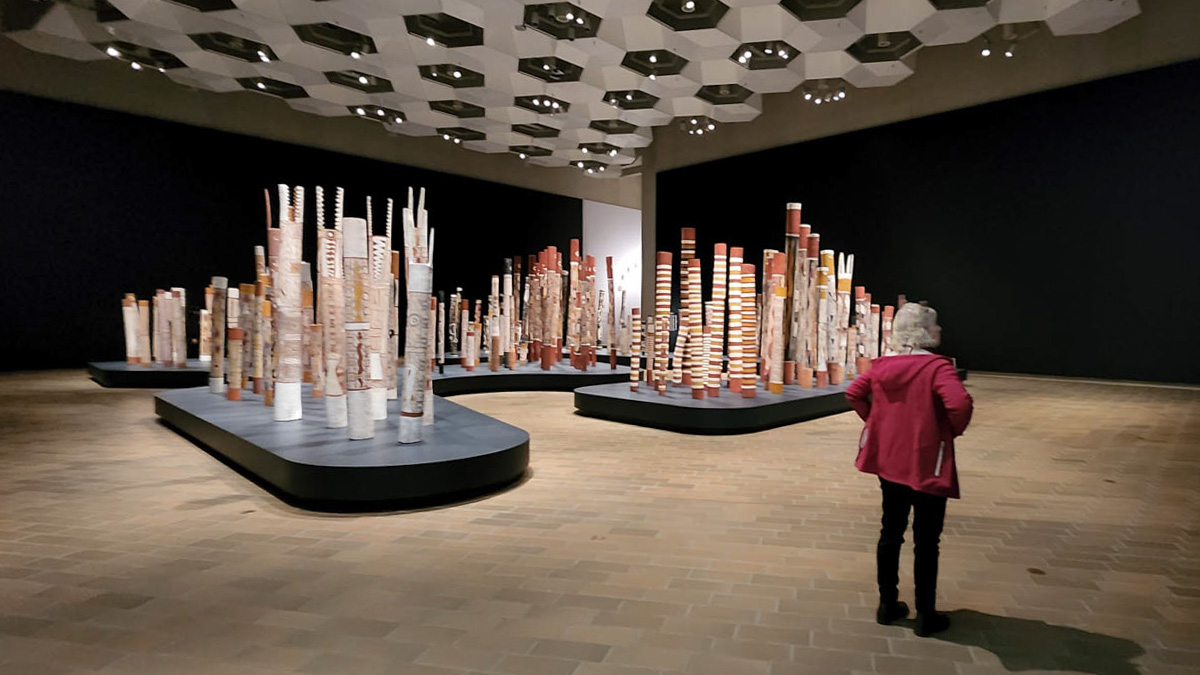
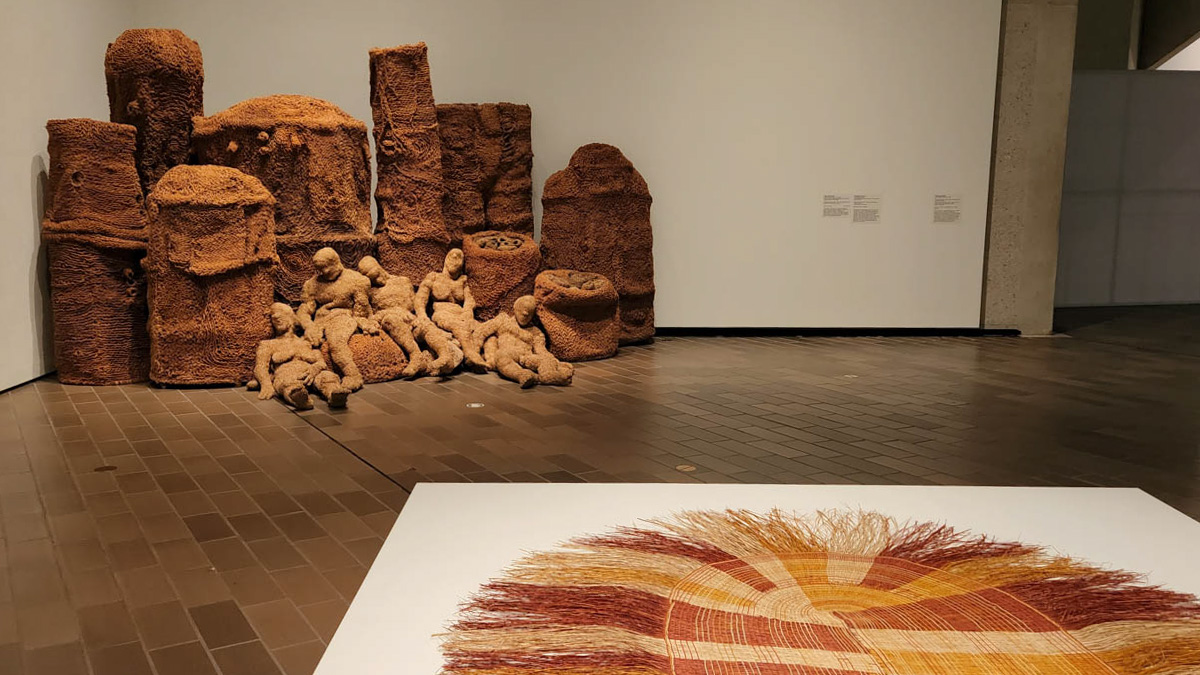
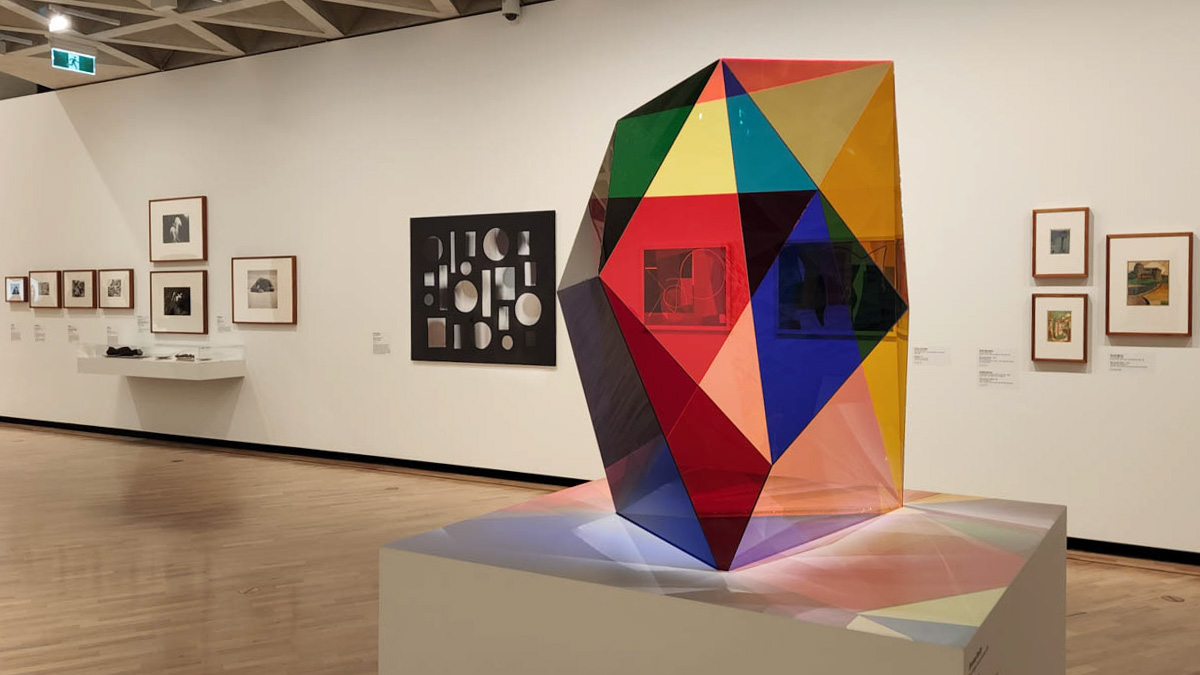
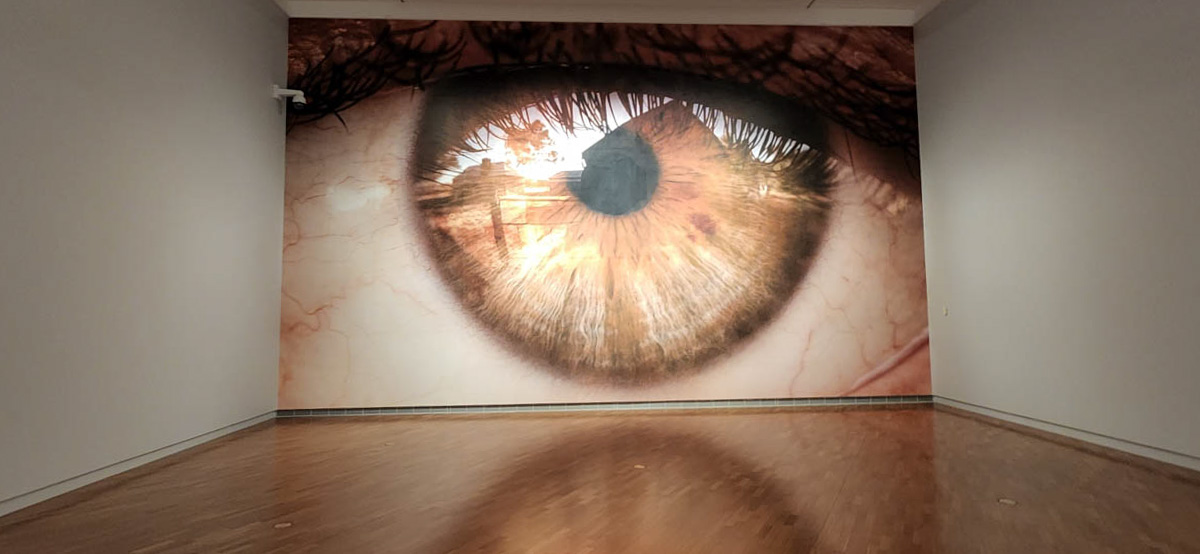
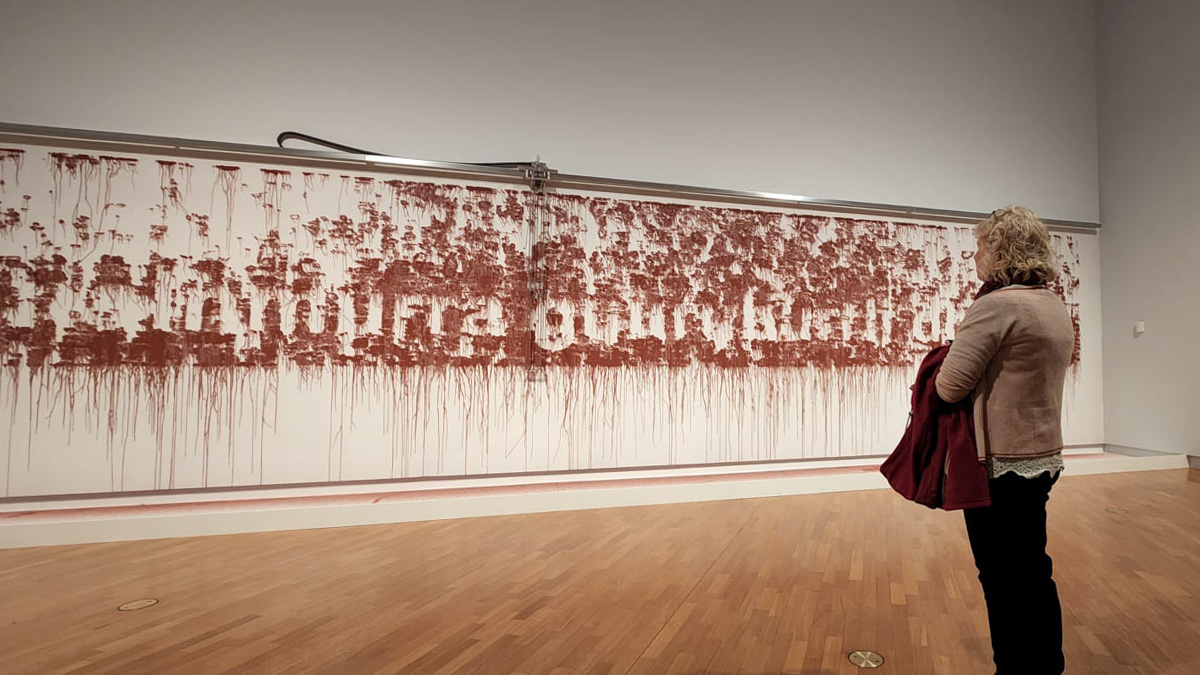
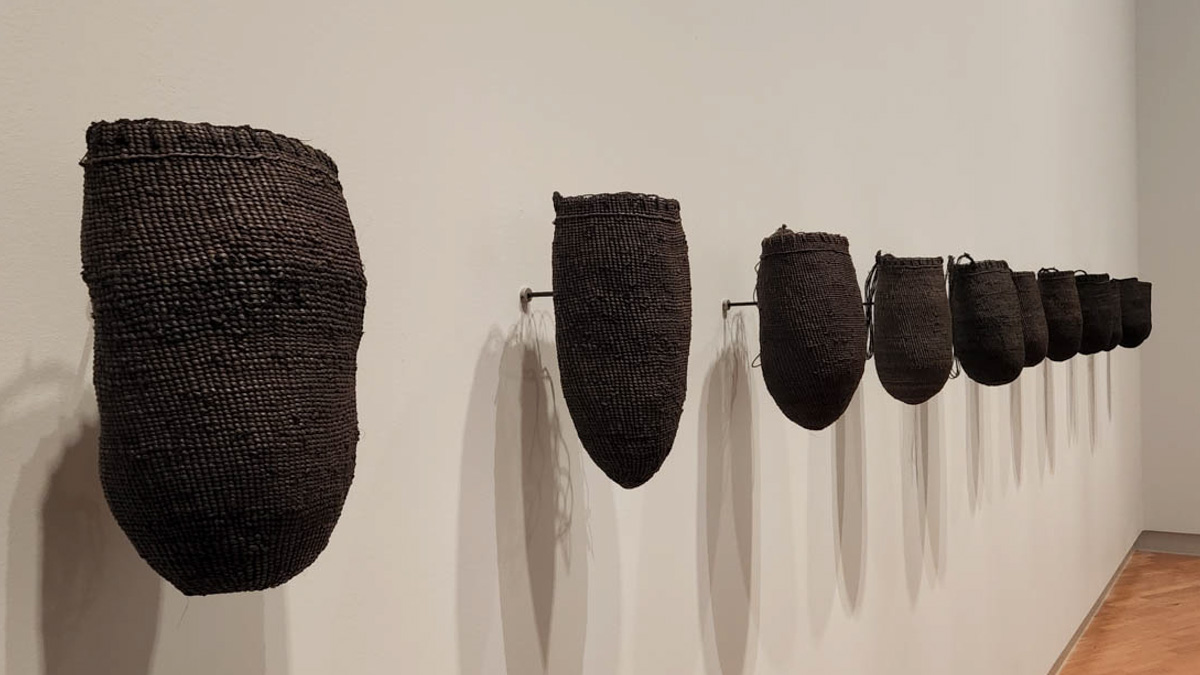
I remember the first time I saw the Murray River and the feeling of disappointment that washed over me when I realised it was nothing like the expectation my imagination had conjured up as a boy, reading about Australia's mightiest river. Driving from Adelaide to Sydney with a large chunk of the journey following the river I was expecting, somewhat naively I now realise, for the drive to be alongside the scenic course of the river with verdant, tree lined , gently sloping banks defining the watercourse like the upper Derwent in my native Tasmania.
The truth was, the river was rarely seen. Even when close to it it was in a canyon for the first 300 or so kilometers of the journey and after that only reappeared like a David Copperfield illusion as you entered one of the towns along the way, only to disappear again as you reached the town limits.
I knew it was important and brown, I'd developed a teenage crush on Sigrid Thornton and had seen enough episodes of All The Rivers Run to understand the river had historic significance but I much preferred my imaginary version to the real thing.
But that was a long time ago and I'm a reformed man. I've since visited the Murray several times, including spending perhaps the most peaceful week of my life navigating part of it with friends on a houseboat. I'd never got to spend time in two of it's major centres though - Swan Hill and Echuca until Kathy and I set off on our wonderful Wobbly Boots adventure.
If the Carni was a paddle steamer this would be called a voyage of discovery. The bustling town of Swan Hill was great but for me the Pioneer Village was it's epicentre. An authentic look at decades of local history drawing on the lifeblood of the river to fuel it. From the rustic 19th century beginnings with dirt streets and makeshift buildings, through to the 'modern' conveniences and architecture of the1930's this place takes you through a journey and leaves you with a sense of just how important the river was to Australia's development and expansion.
There are optional attractions - a ride on the paddle steamer Pyap which I really enjoyed but the Heartbeat of the Murray laser show that night was spectacular. See my notes at the end about accessibilty though, they're not for everyone.
The drive from Swan Hill to Echuca highlights the importance of the river for large scale agriculture. We were amazed as we passed endless Almond, Olive, Grape and Orange plantations. They stretched over the horizon in every direction, all dependent on the river that we knew was there but once again couldn't see.
If Swan Hill was bustling, then Echuca was manic! It's a much bigger town than I expected but once again we gravitated to the old wharf area and the river. The visitor centre doubles as the entry to the old wharf and has lots of interpretive boards highlighting the history of the town and the role the Murray has played in it's development.
There are several paddle steamer cruises to choose from and the wharf itself has a working steam engine display with a friendly engineer to chat with about days gone by. Whilst it's not on the scale of the Pioneer Village at Swan Hill, Echuca's wharf offers visitors a different perspective and a great look at the river itself. While we were there we saw Paddle Steamers come and go and a variety of smaller craft - from tinnies to an army duck.
We've moved on now to continue our big lap but our Murray River experience has left a lasting impression.
Accessibilty:
Swan Hill Pioneer Village - the village itself is accessible with disabled parking, access ramps and toilets. The older parts of the village have dirt streets which may be difficult for wheelchair users if softened by rain. The Paddle Steamer Pyaf is not accessible at all. The Heartbeat of The Murray is an after dark experience and all patrons follow a guide with a torch to a grandstand. Those with balance issues, like me, may struggle as it is quite dark.
Echuca Wharf: Fully Accessible entry, toilets and ramps. Didn't go on a paddle steamer cruise but like Swan Hill's Pyaf I would think mobility impaired people would find entry and movement around the boat very difficult.
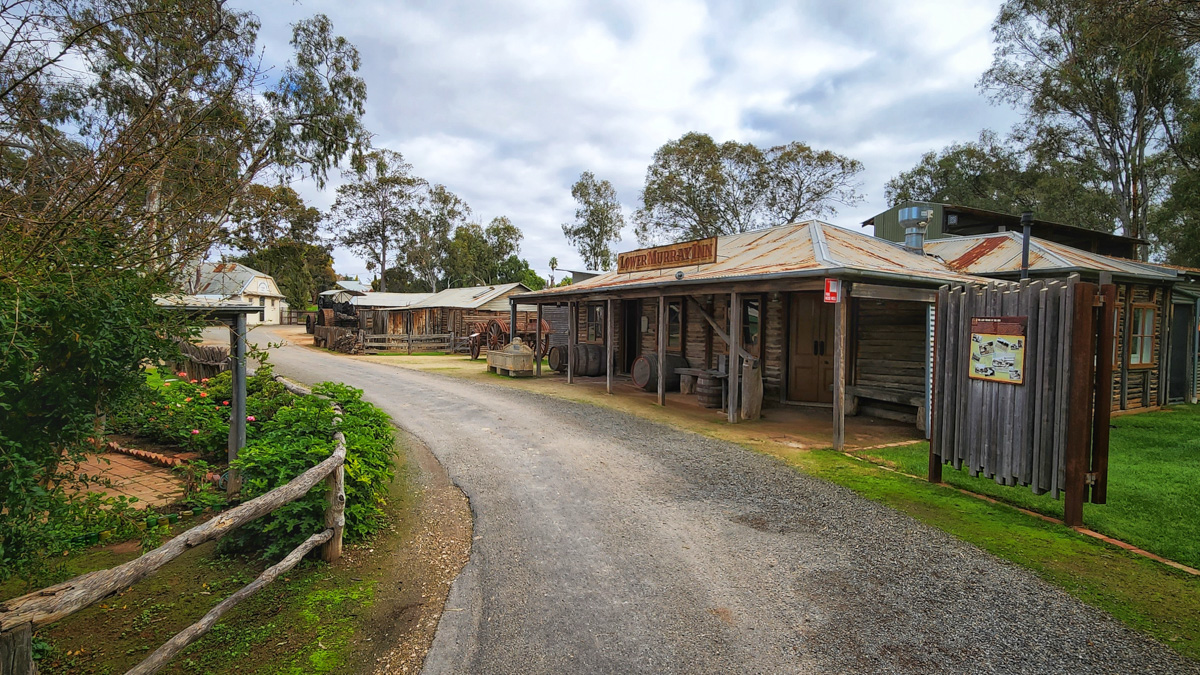
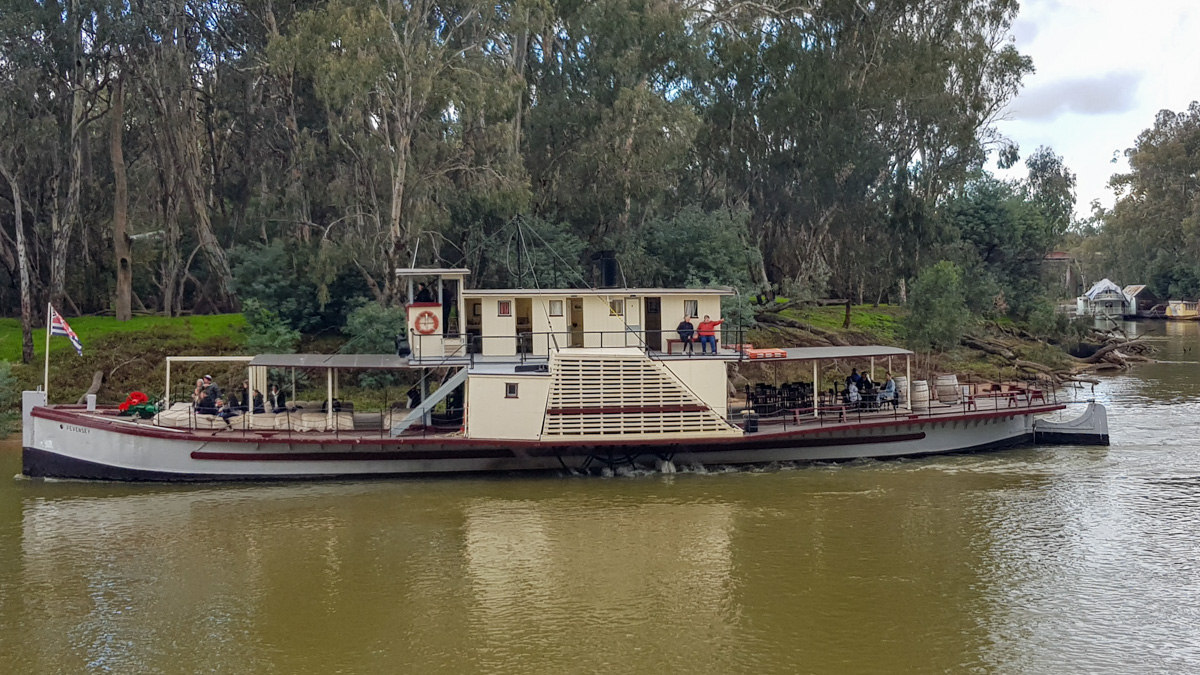
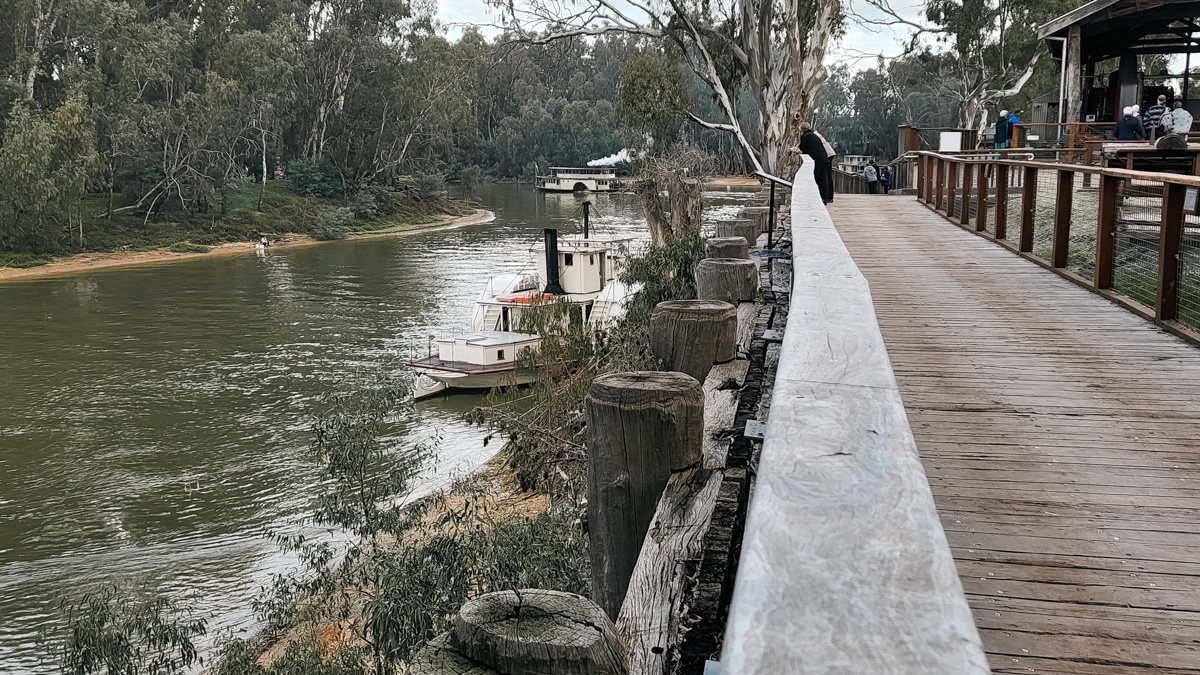
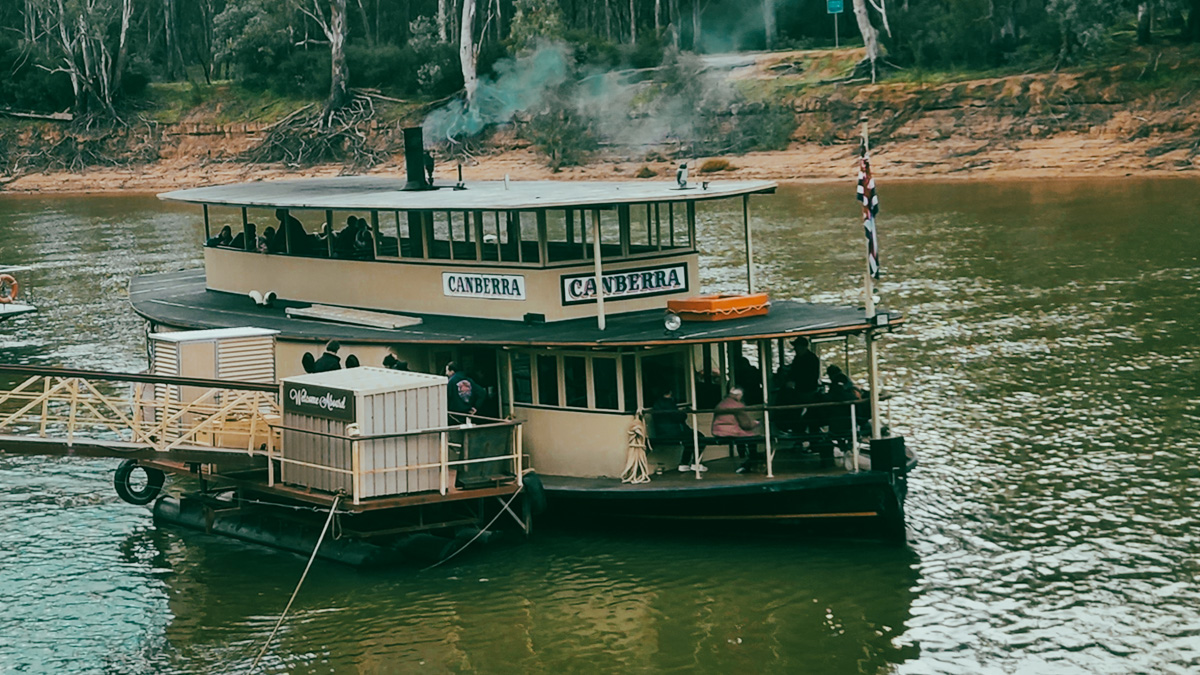
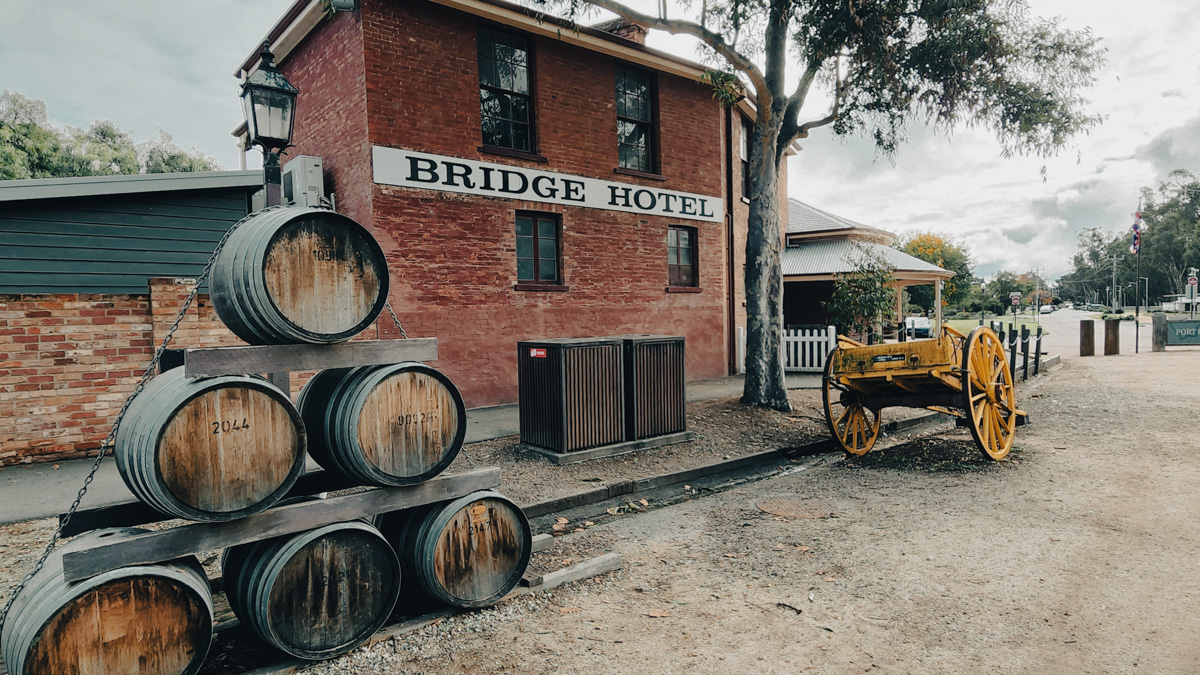
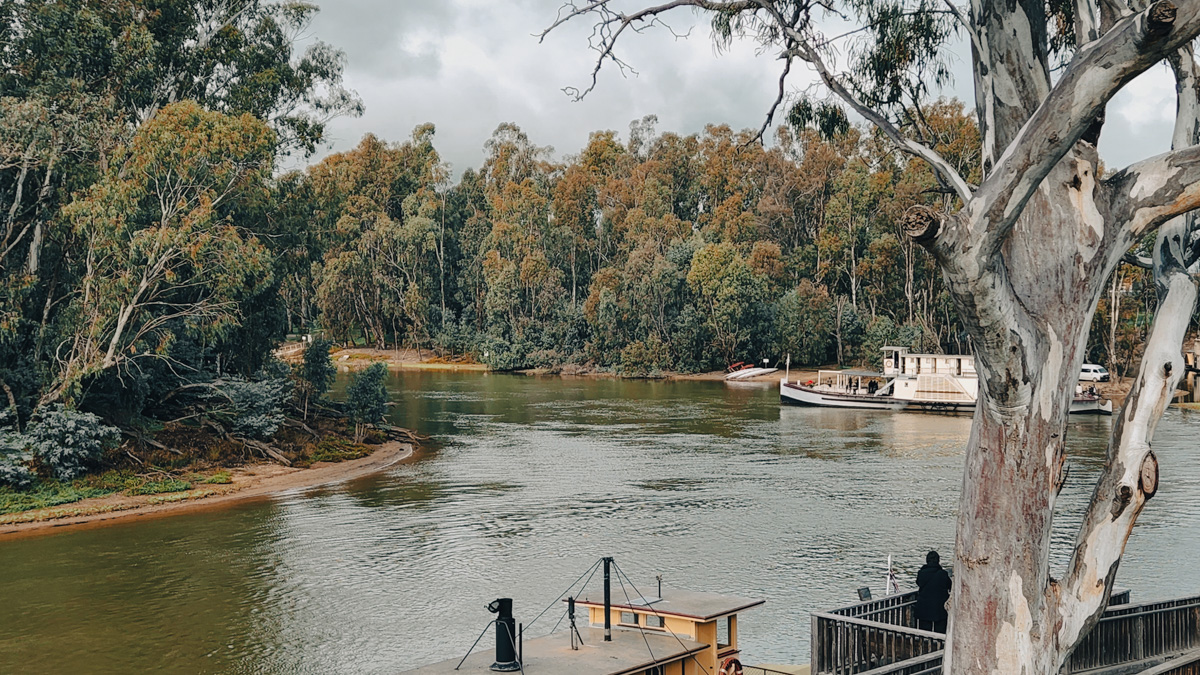
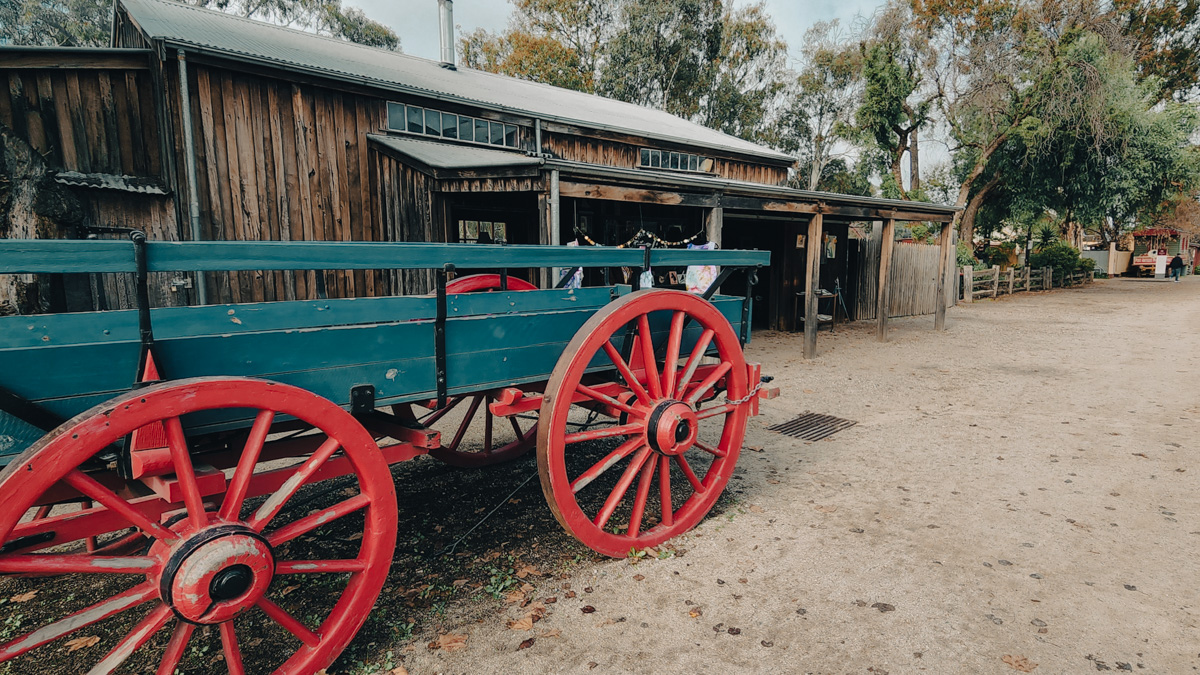
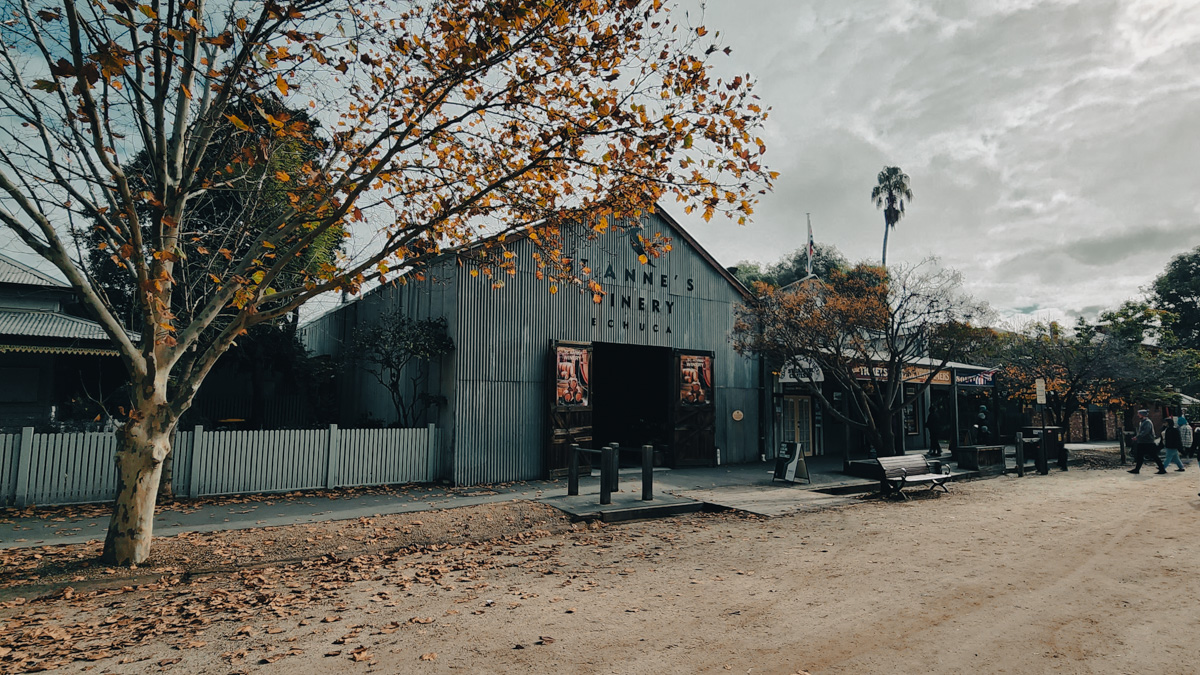
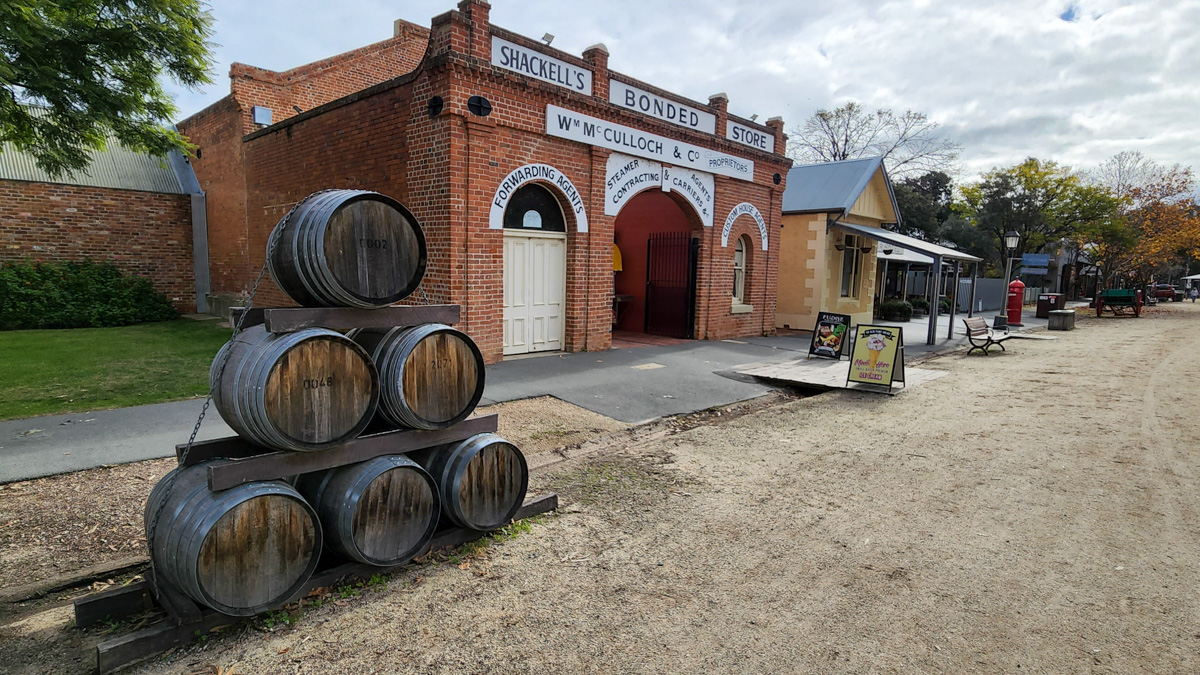
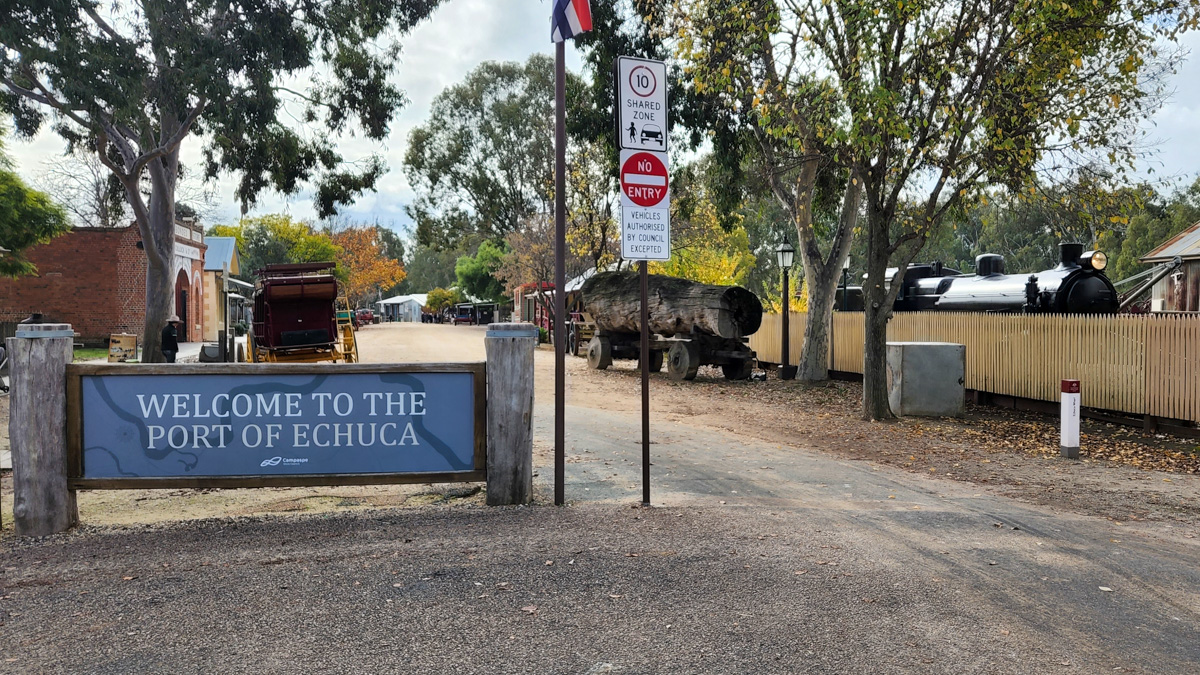
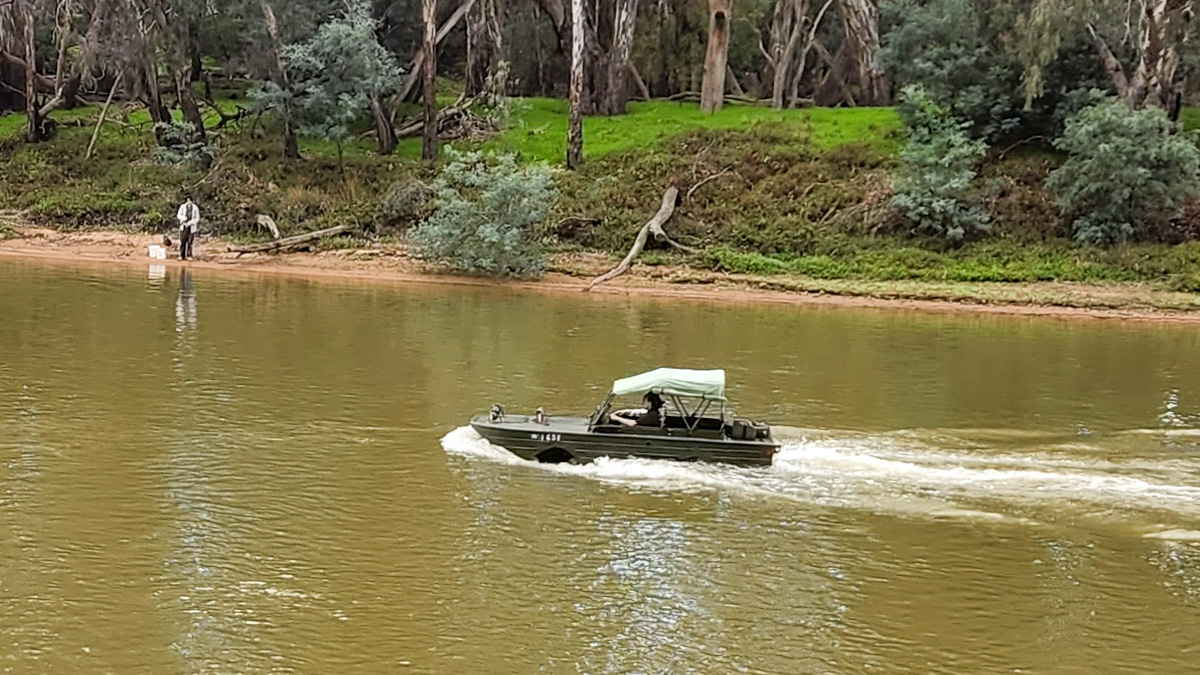
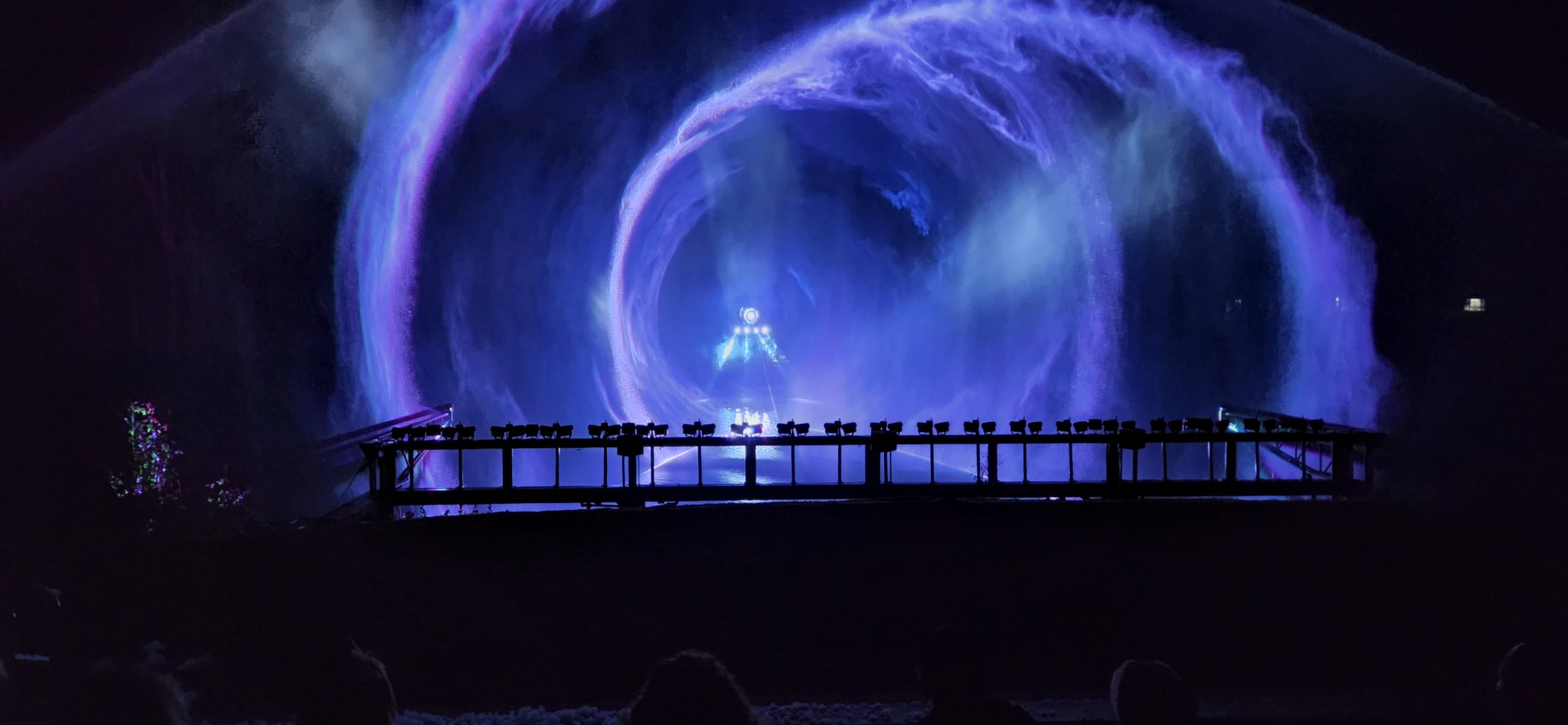
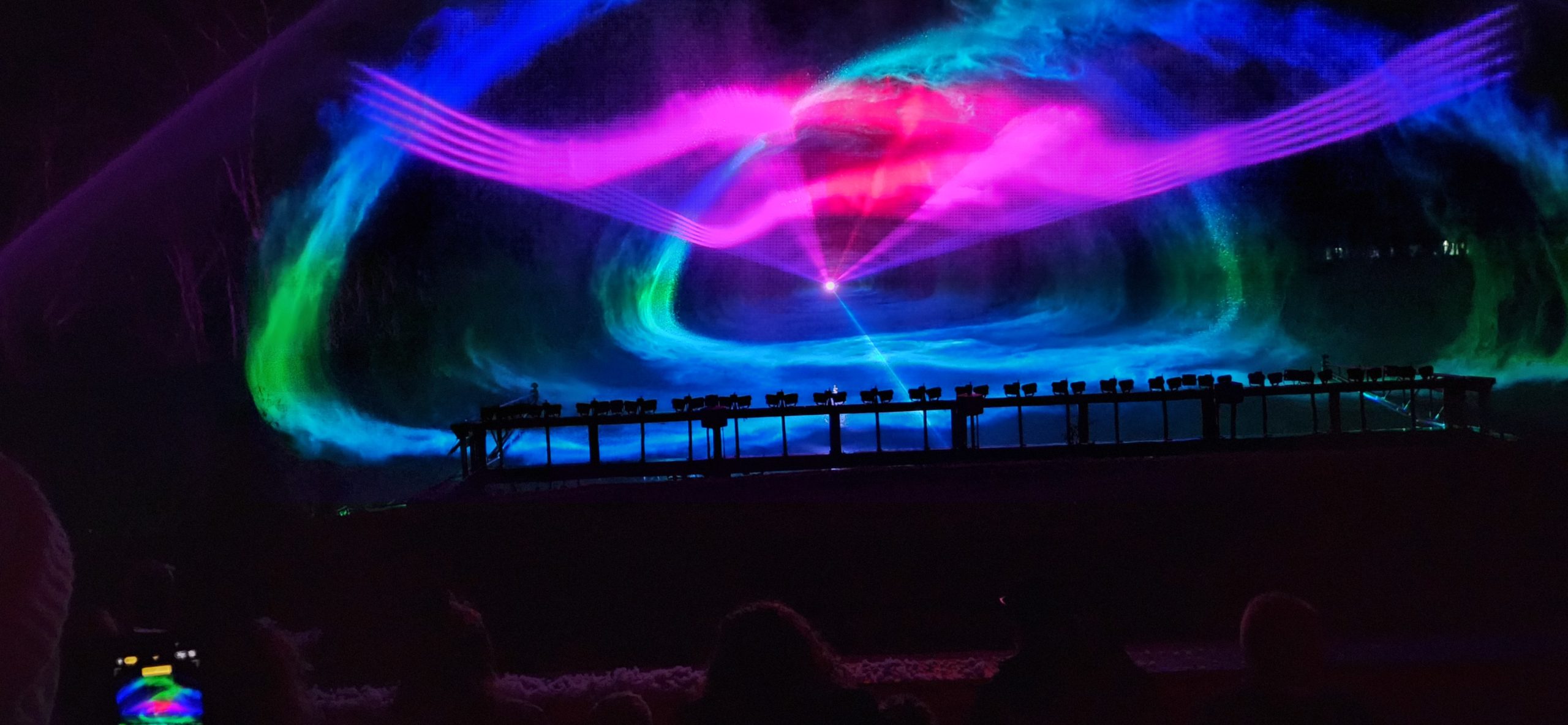
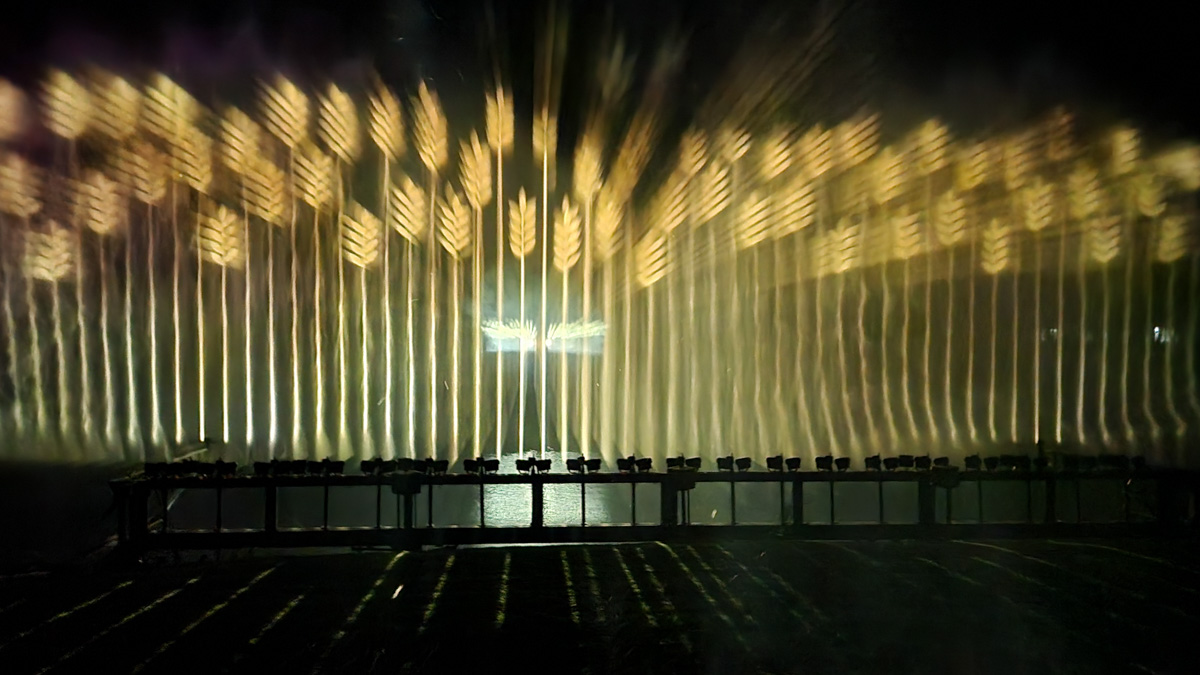
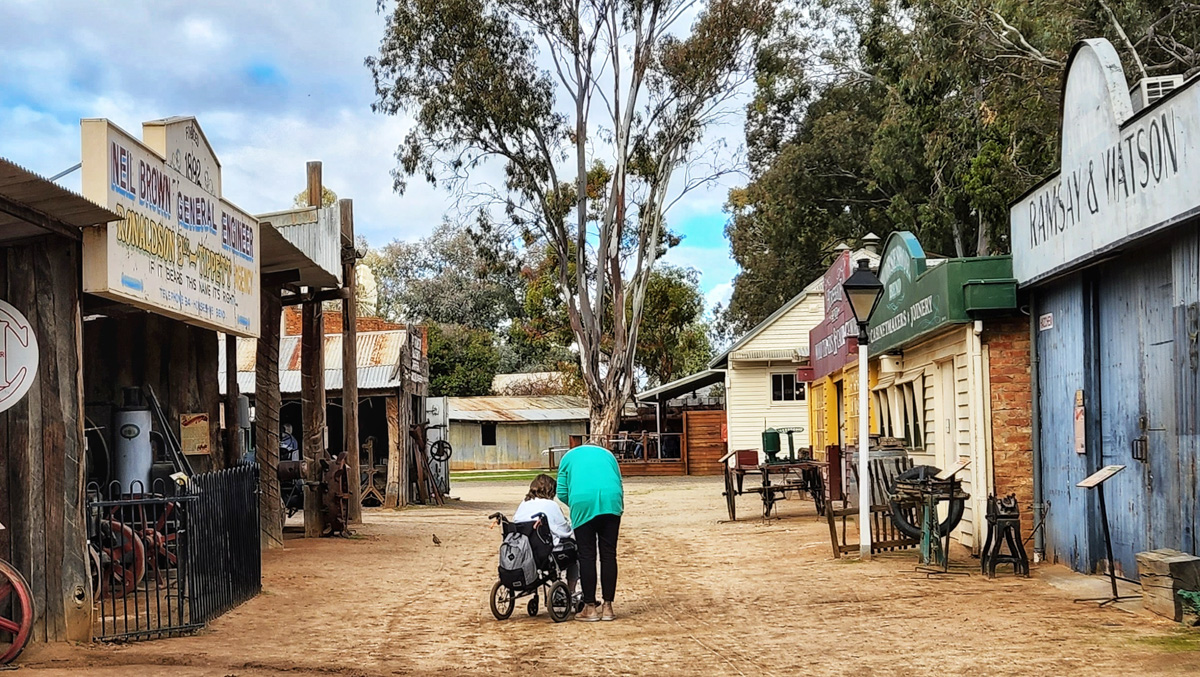
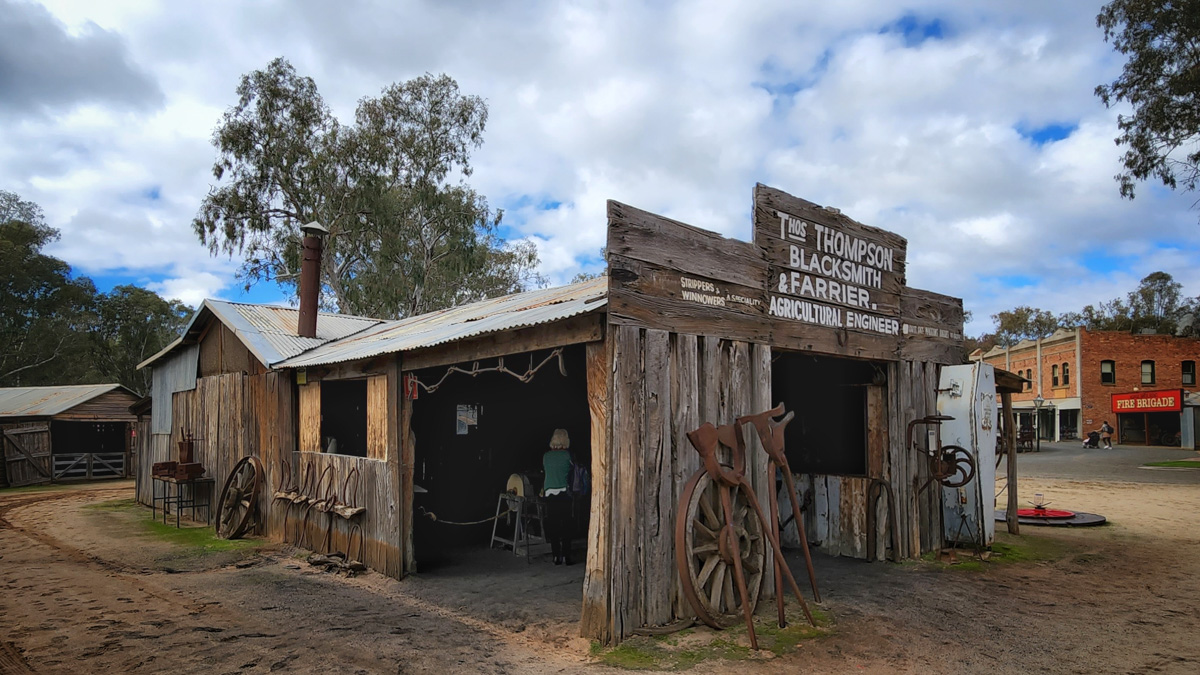
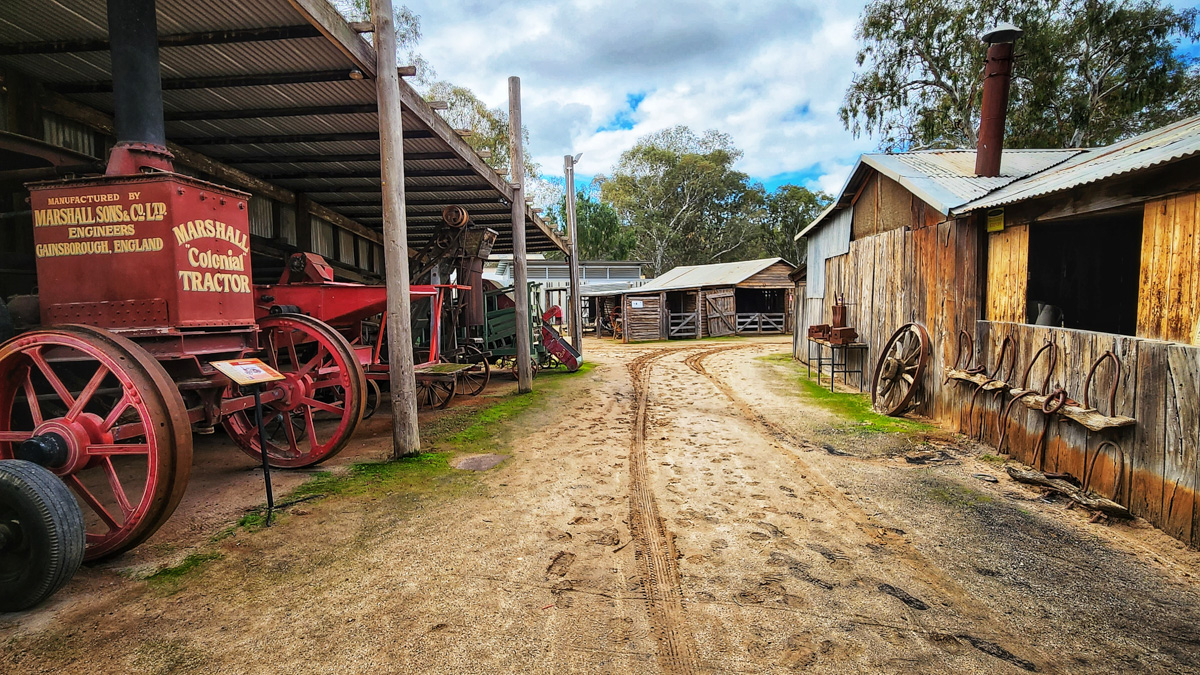
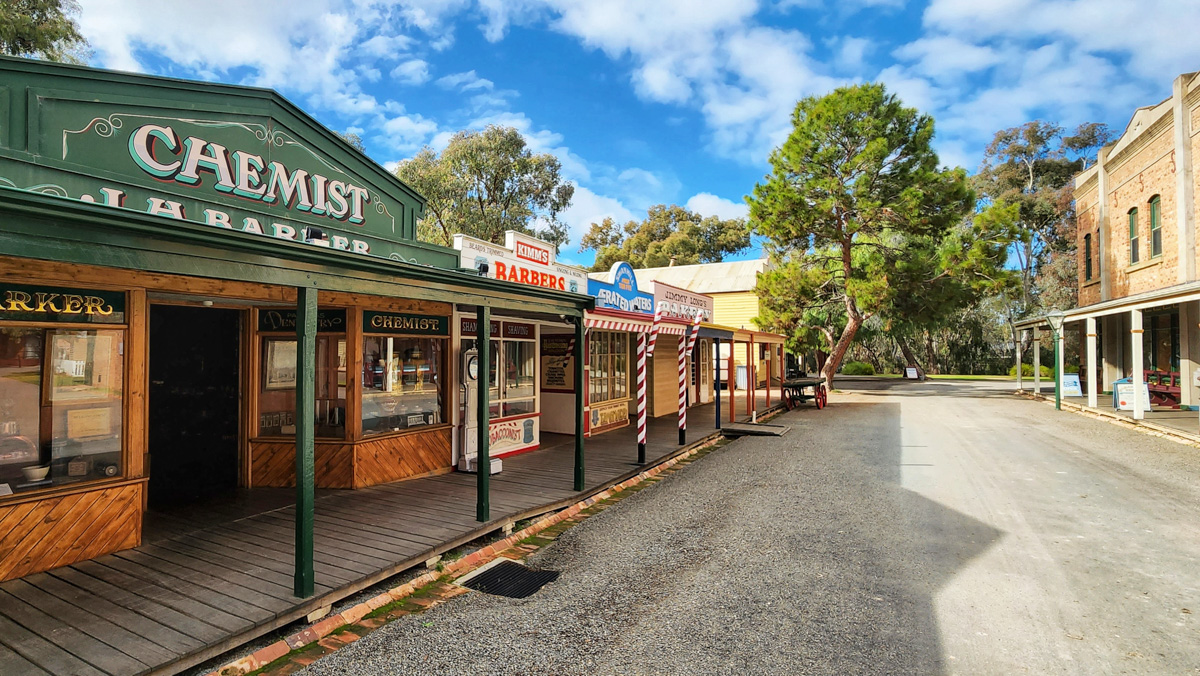
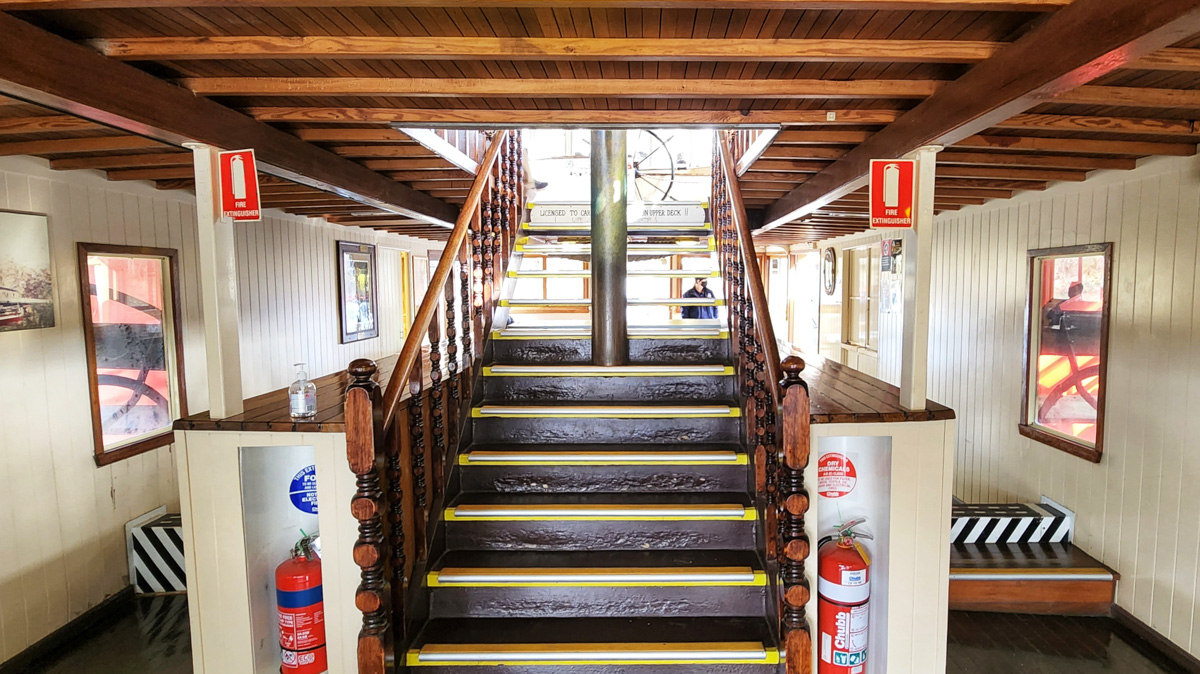
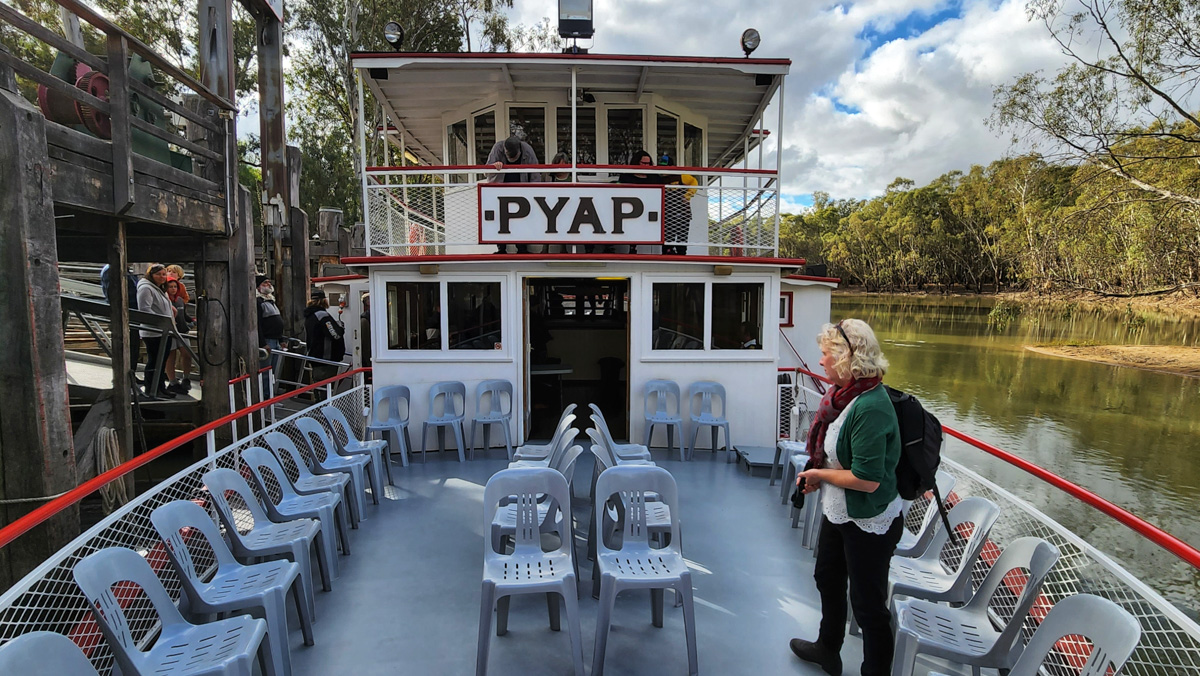
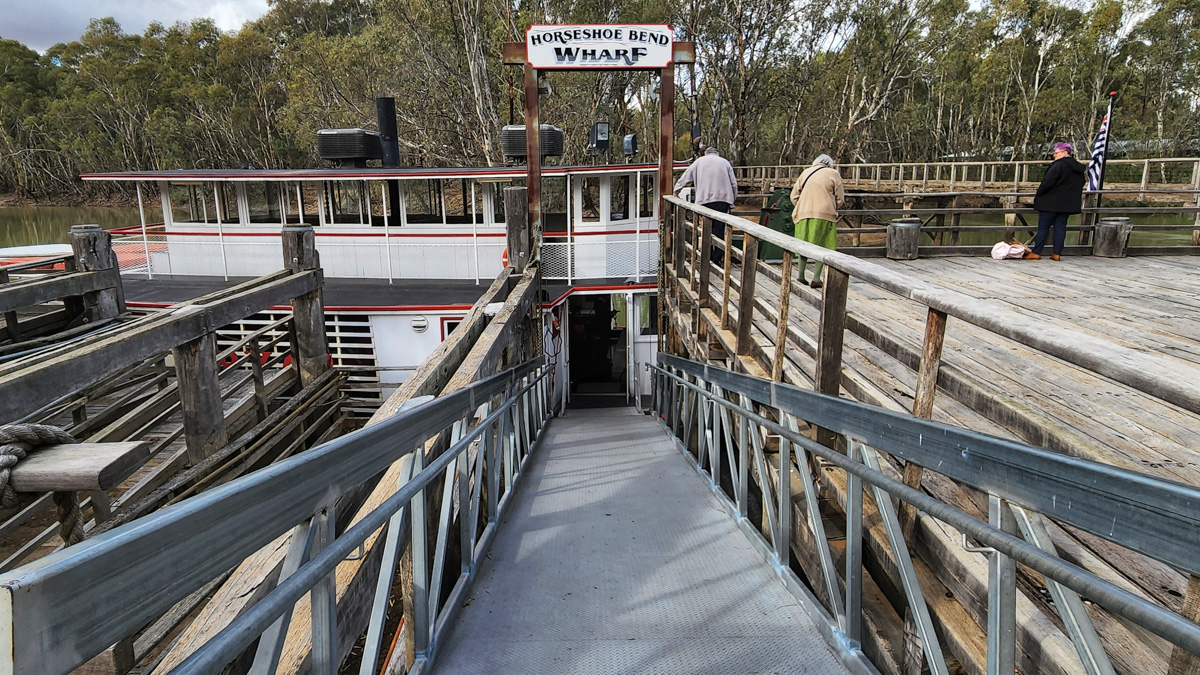
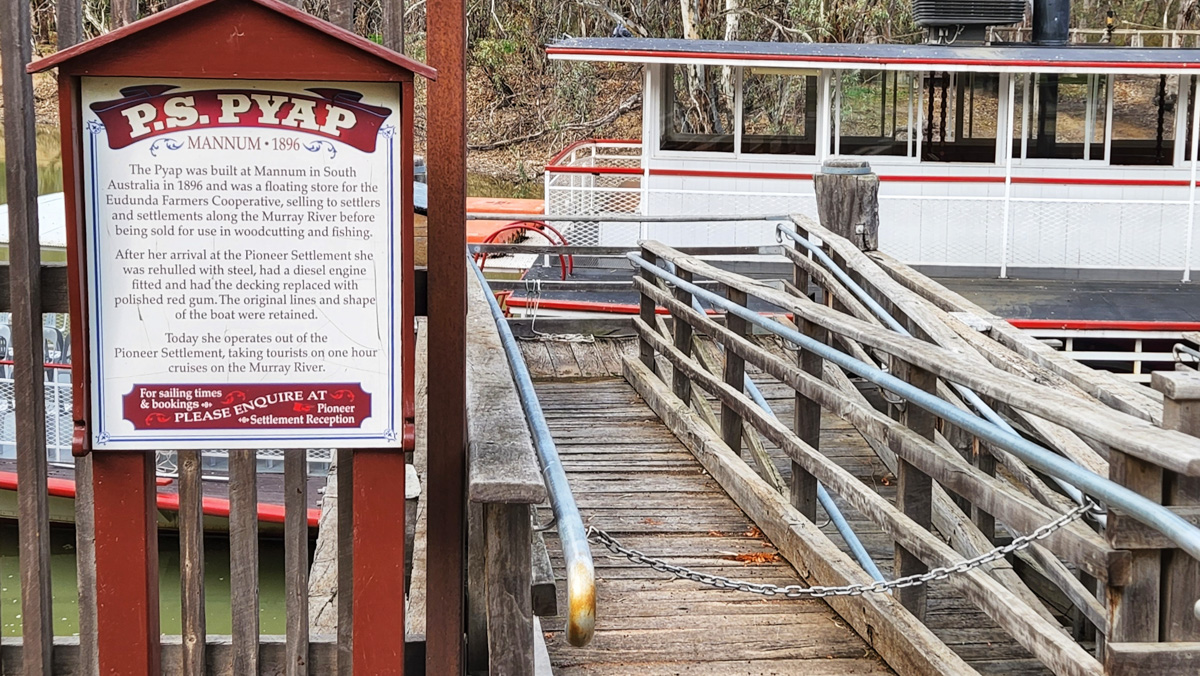
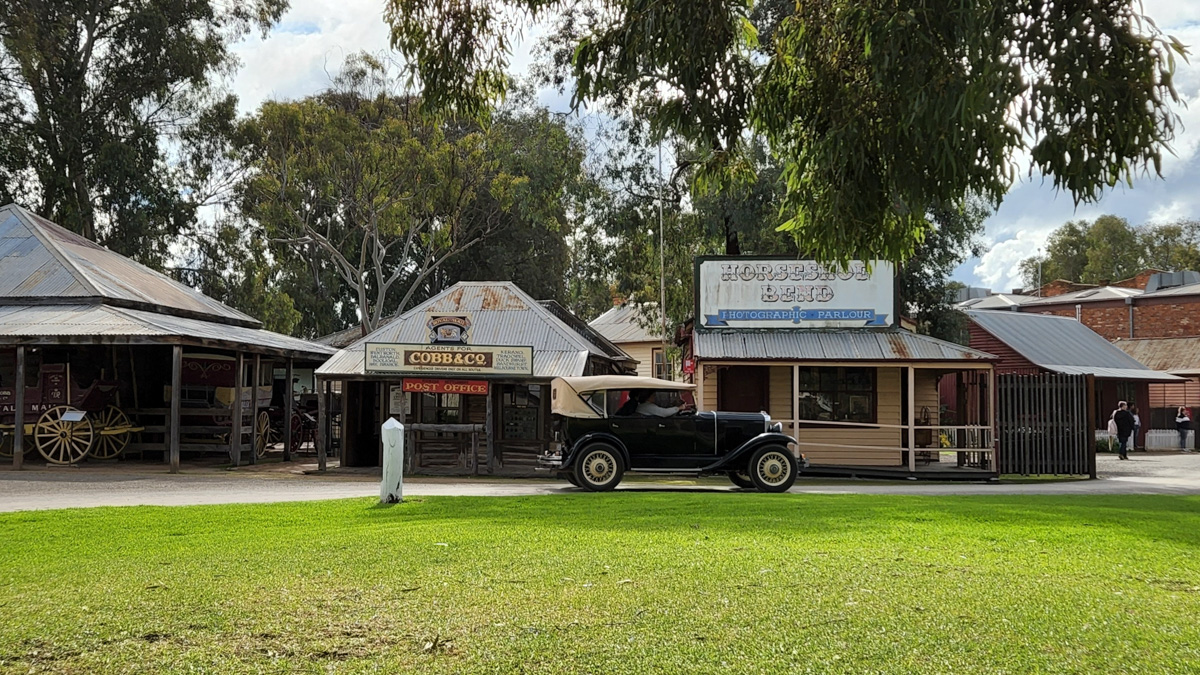
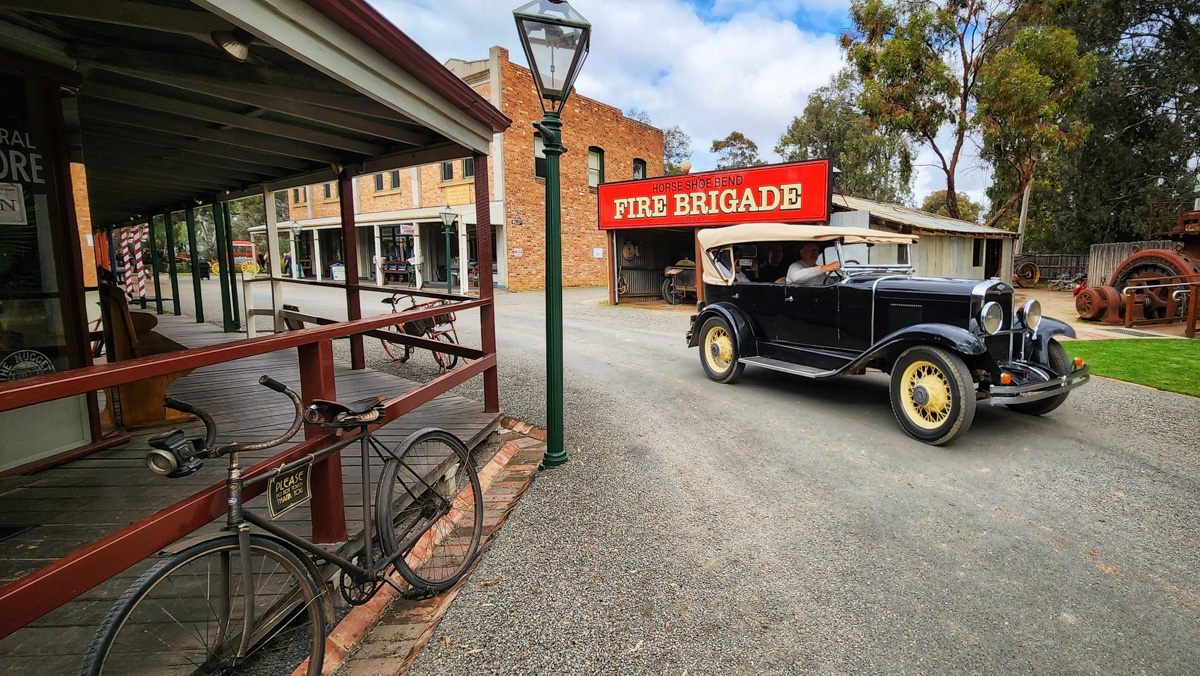
We only spent a few hours there but Deniliquin or Deni to the locals sure made an impression on us.
Waring Gardens in the middle of town was a beautiful setting to take a quick stroll and stretch the legs after the drive up from Echuca. Large grassy areas, a large pond full of birdlife and magnificent old trees make it an idyllic place for a picnic lunch.
Unfortunately it was wet so plan b was Red Rose Diner just up the road. Nothing b grade about this place though. Decked out like it was Arnold's Diner from Happy Days, we were greeted by Buddy Holly on the Juke Box and a menu straight from 1950's America plus a few local favourites.
Friendly service, generous portions of tasty food at surprisingly cheap prices almost put me into a food coma!
Naturally we were feeling pretty good about Deni by then. Those warm feelings grew into something way more meaningful once we got a look inside The Depot. Neville and Debbie Purtill and the Purtill family have run a local bus company since the 50's and are integral members of the Deniliquin community.. Avid historic car and memorabilia collectors, they have amassed a collection of vehicles and housed them in such a way that left me gobsmacked.
The building itself is impressive, but what it houses and the way it is presented is truly spectacular. A Delorean, Porsche Spyder, Lincoln and Pink Cadillac are a few of dozens of immaculate vehicles set amongst displays of memorabilia that compliment and augment the visual experience.
I walked in with a smile and walked out with a grin. Thanks to Steve as well who took the time to talk us through the history of some of the vehicles and The Depot itself.
Last on our list was viewing the water tower art on our way out of town. Almost anticlimactic compared to what we'd seen already but still impressive in it's own right.
If you are in this part of the world as Molly would say "Do yourself a Favour" give Deni a whirl, you won't be disappointed..
Accessibilty:
Waring Gardens has a disabled toilet available with ramps from the street down to the park, flat and level with concrete paths.
Red Rose Cafe may be a bit tight for a wheel chair but has easy entry with a small ramp off the footpath. No toilets
The Depot is fully accessible with a lift up to the second level, disabled toilet and parking. Flat, level access from the car park.
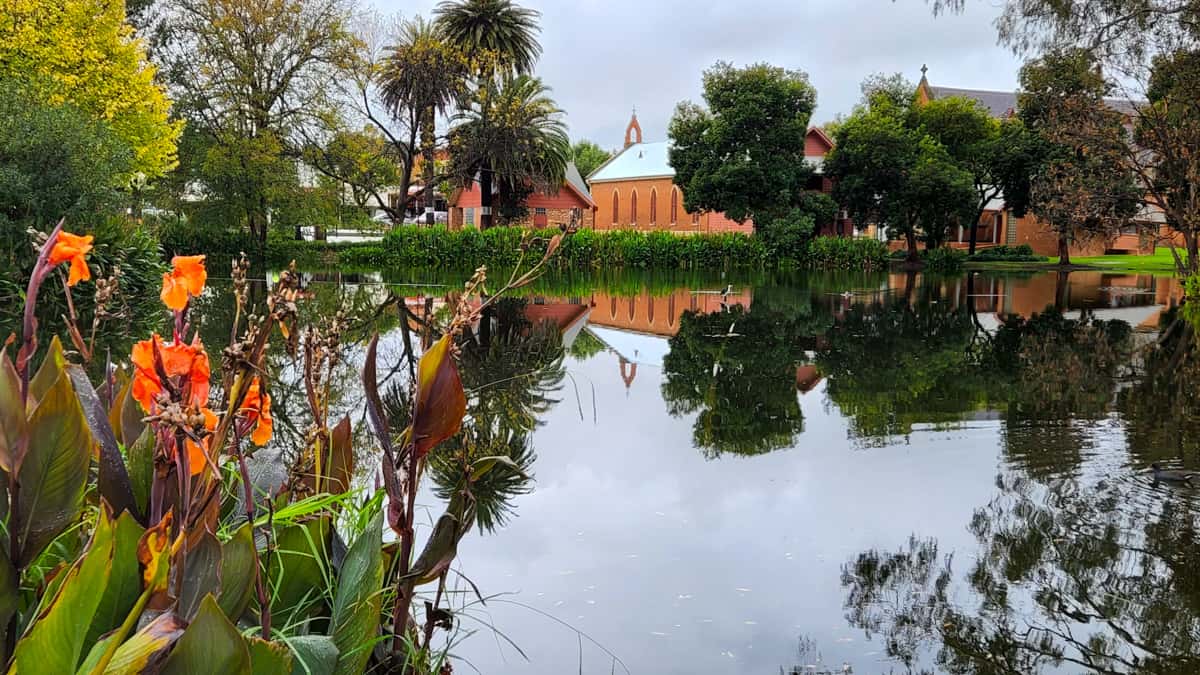
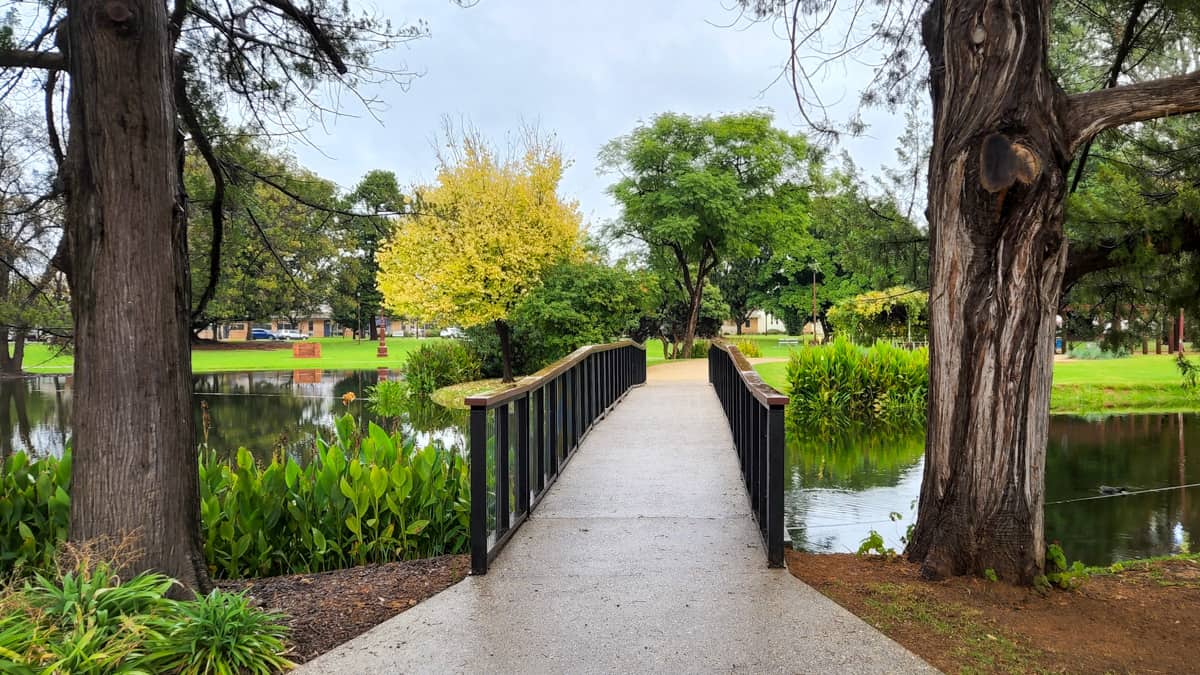
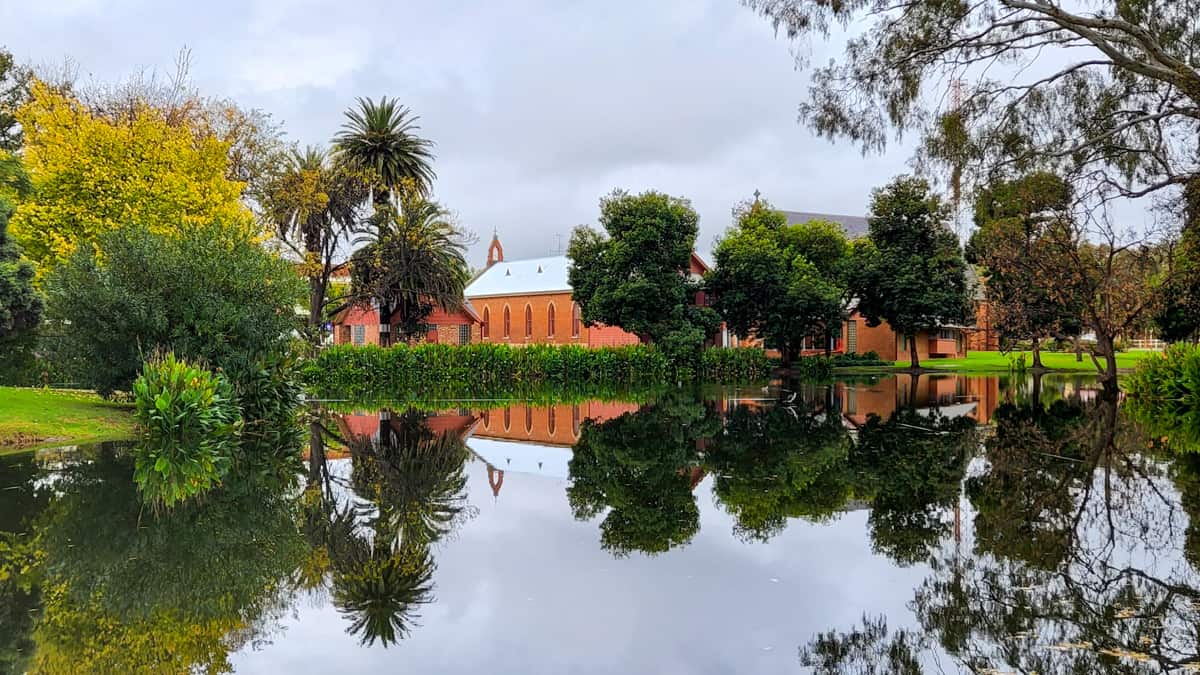
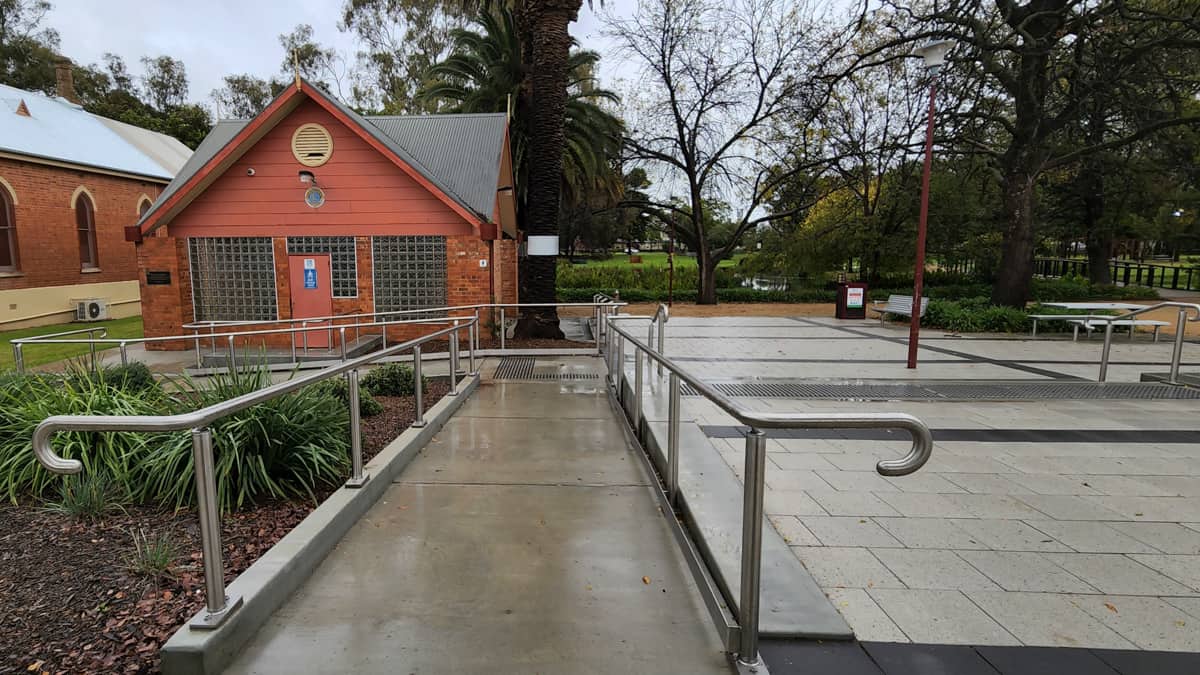
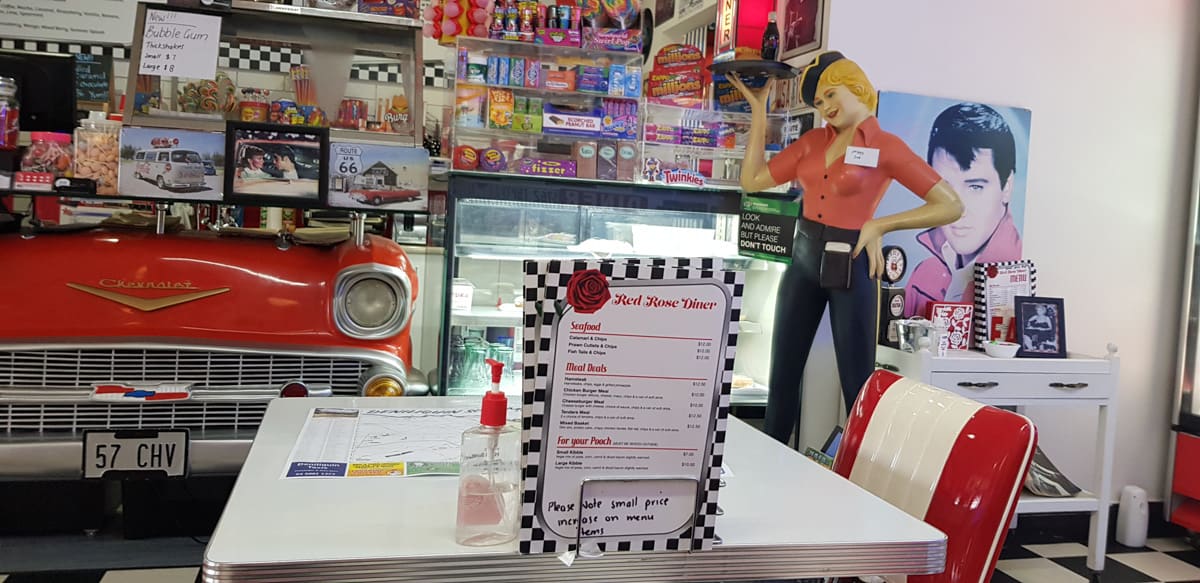
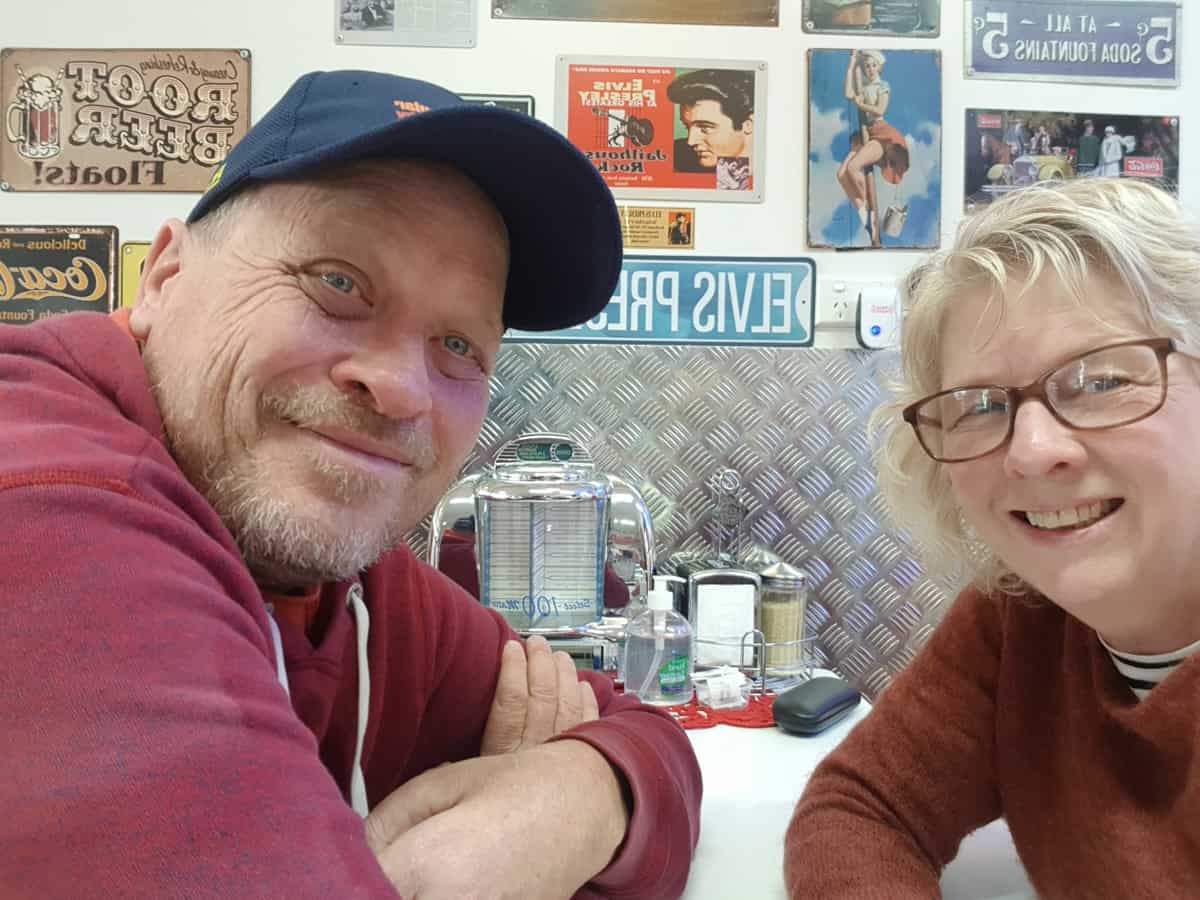
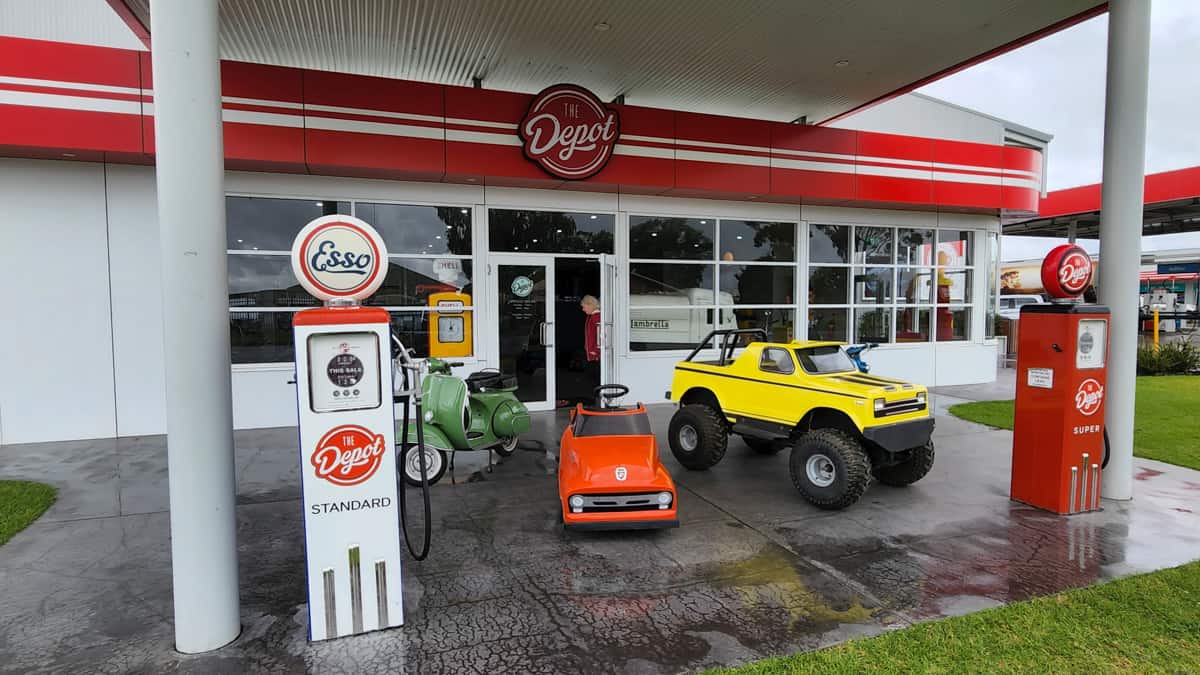
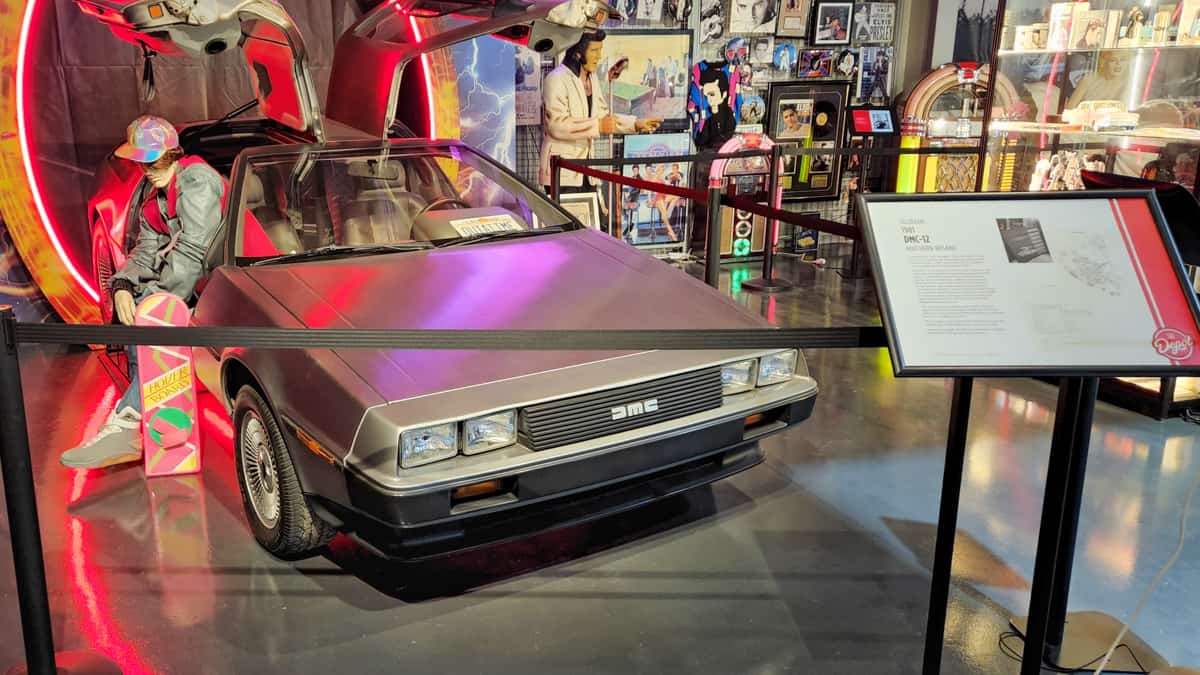
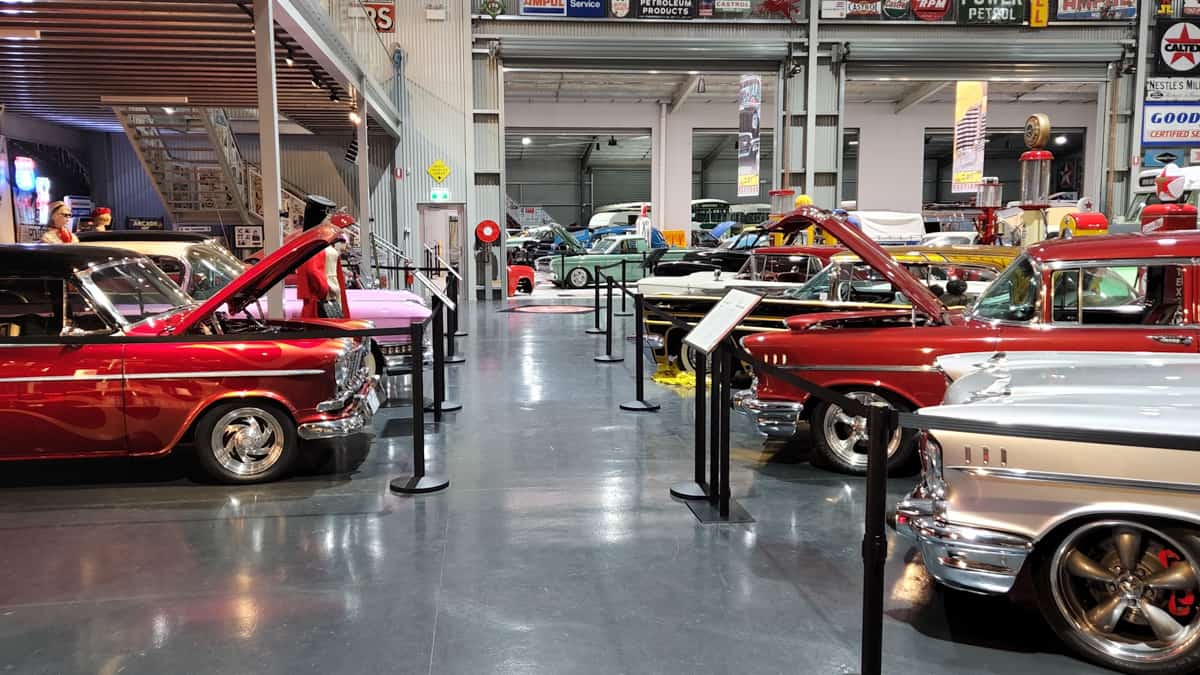
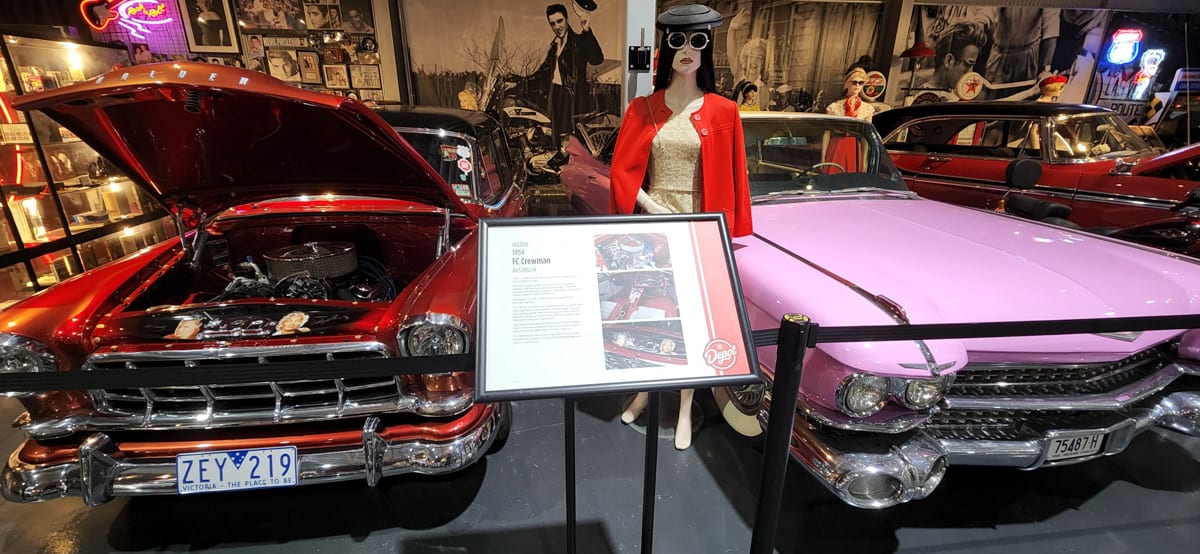
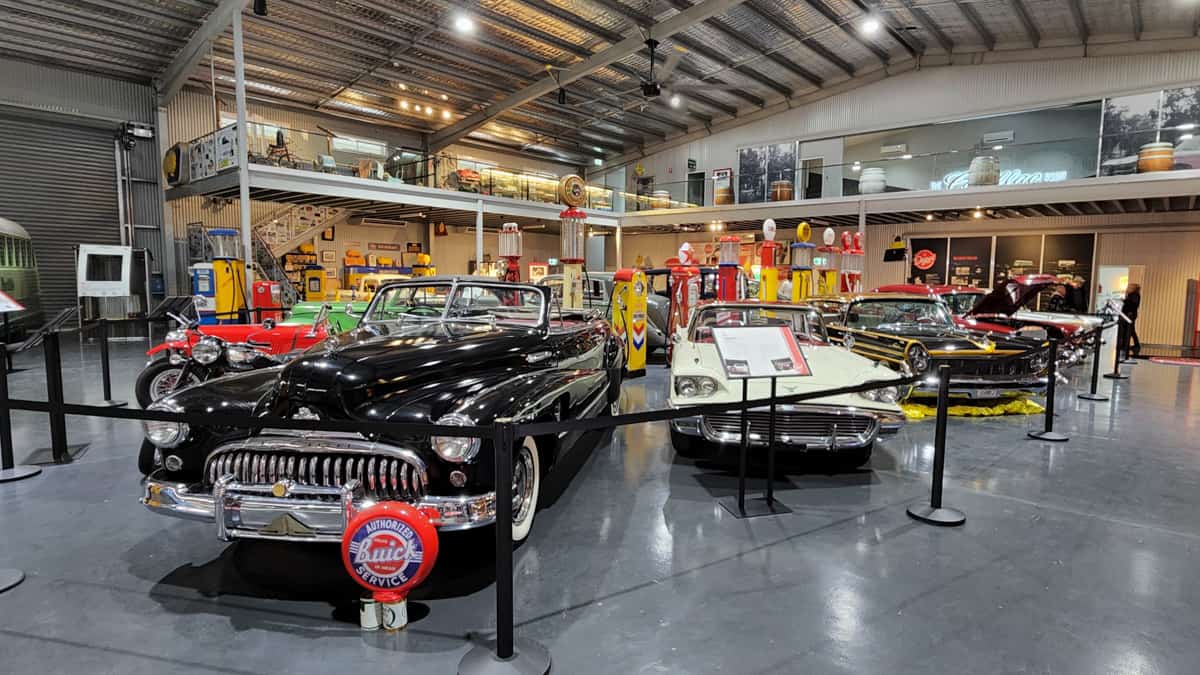
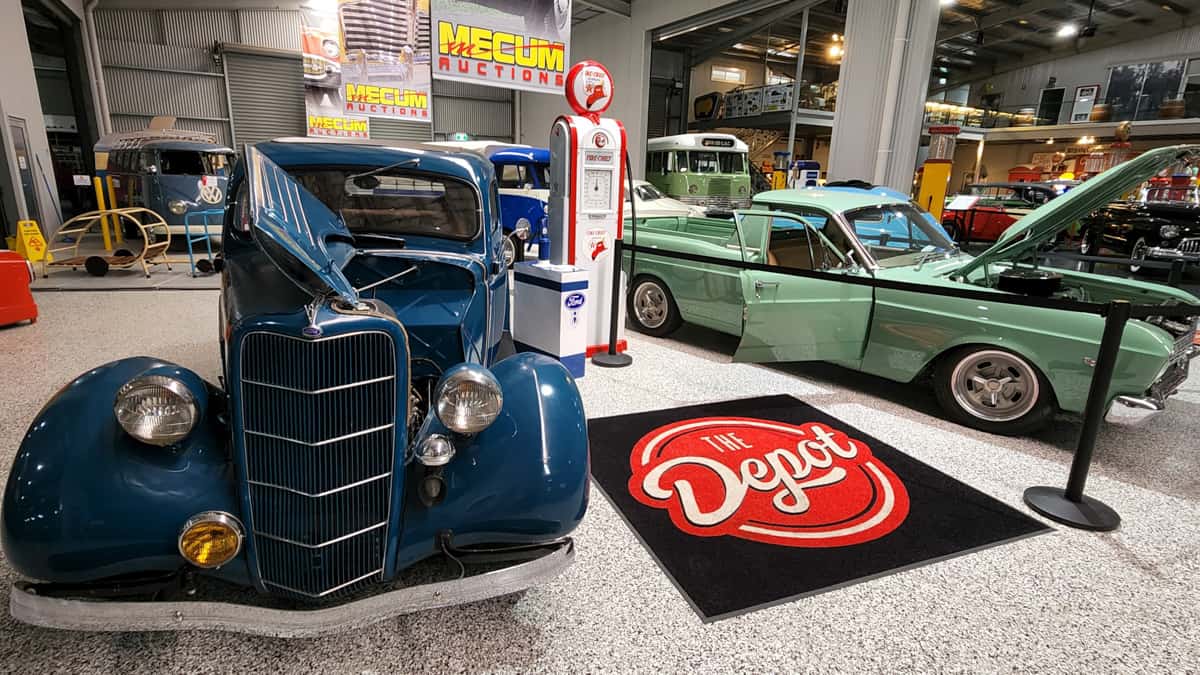
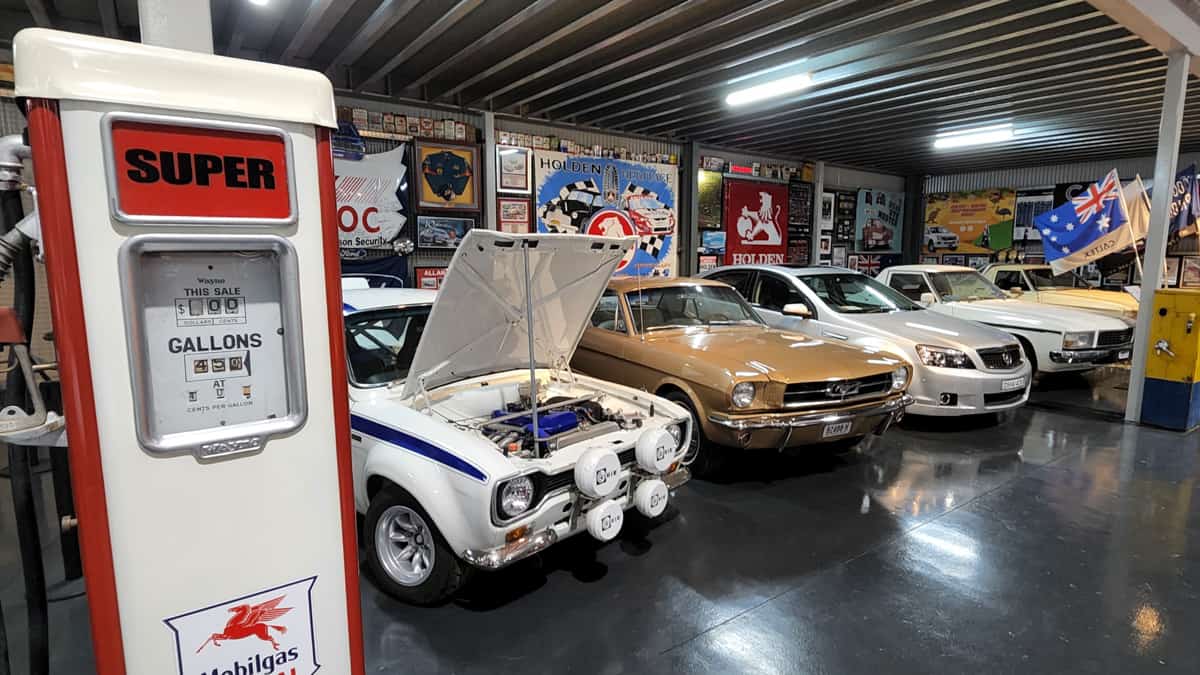
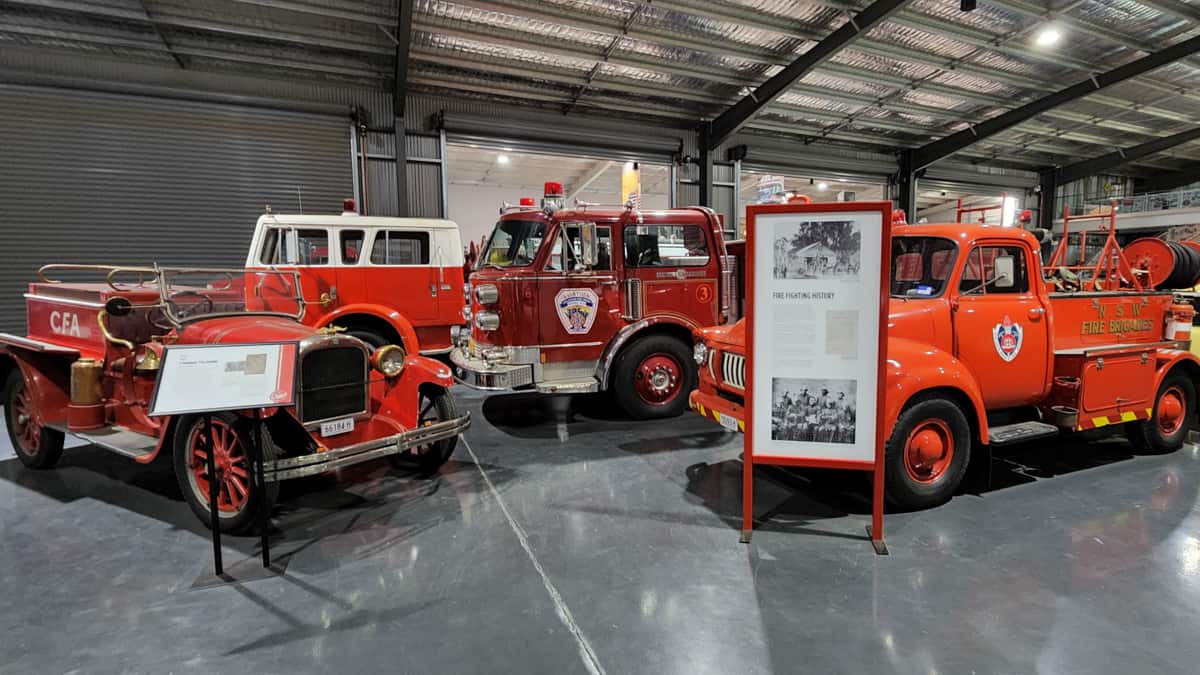
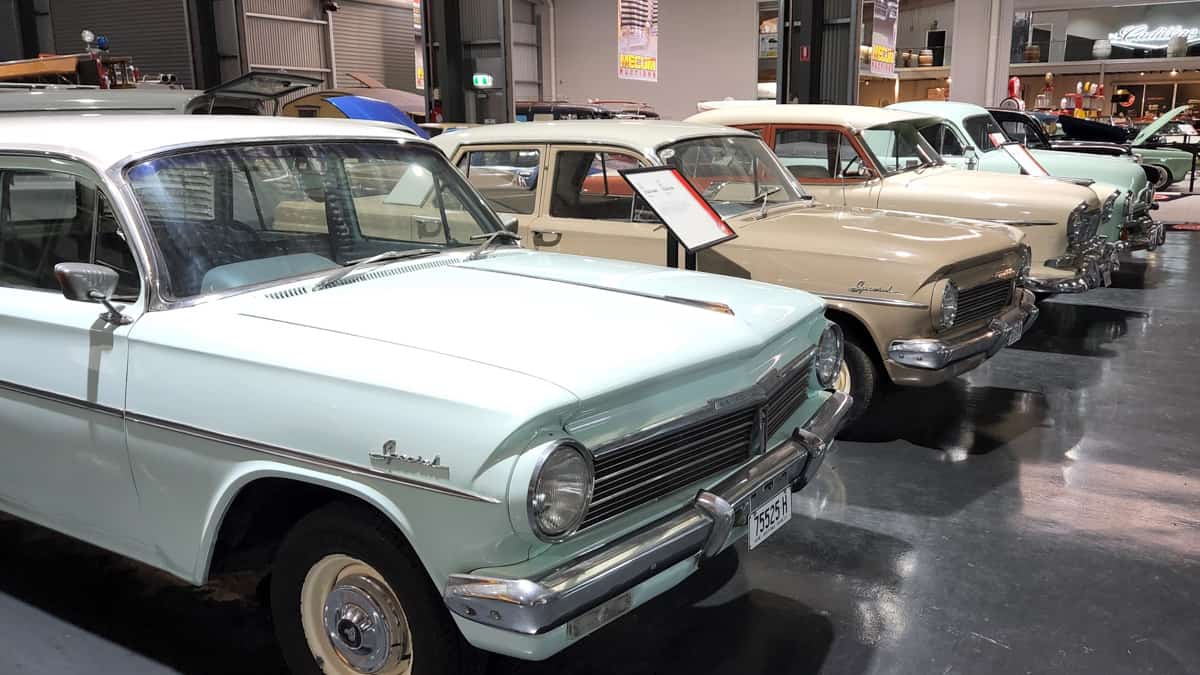
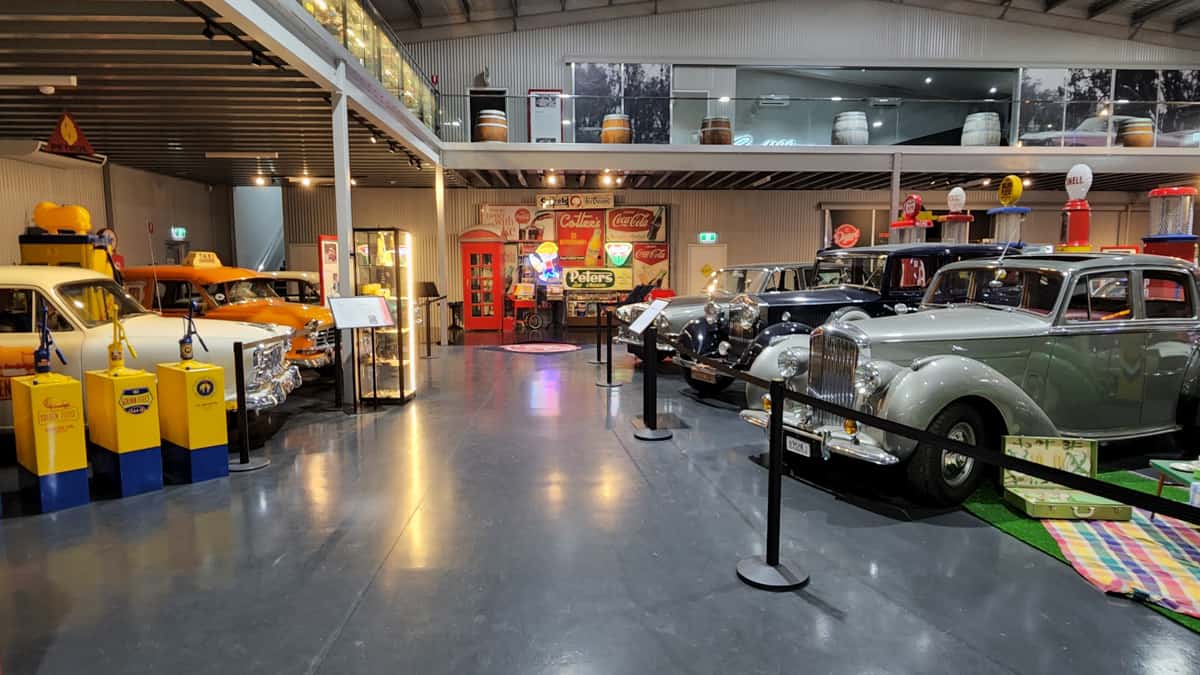
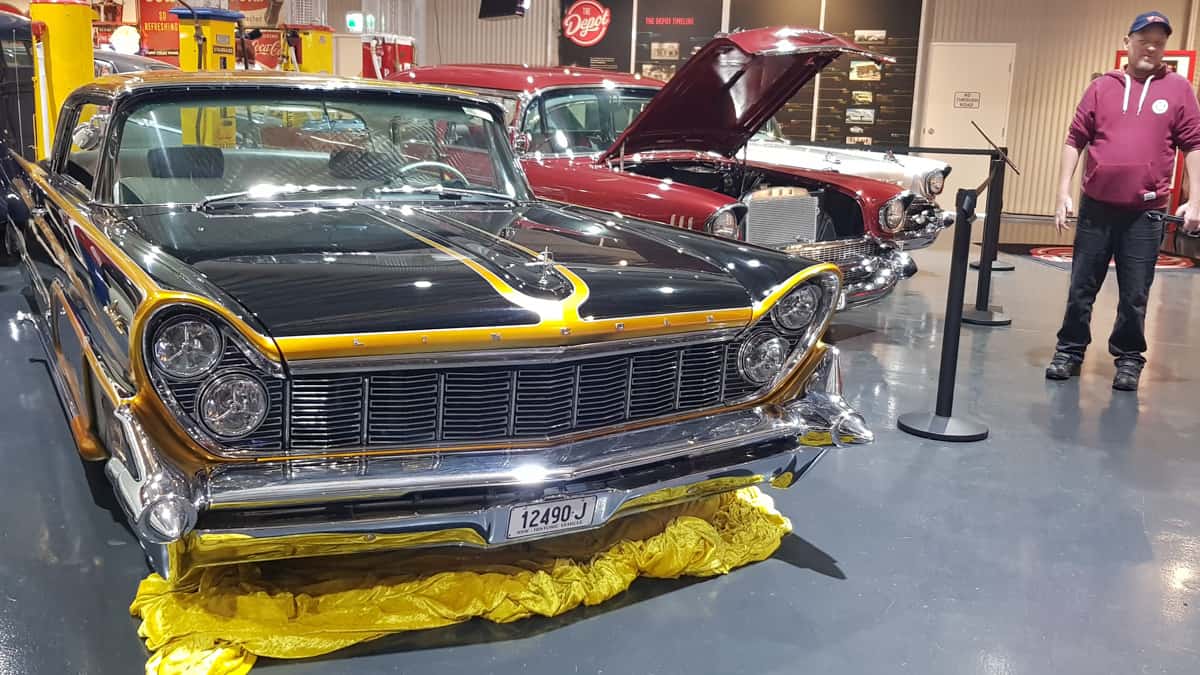
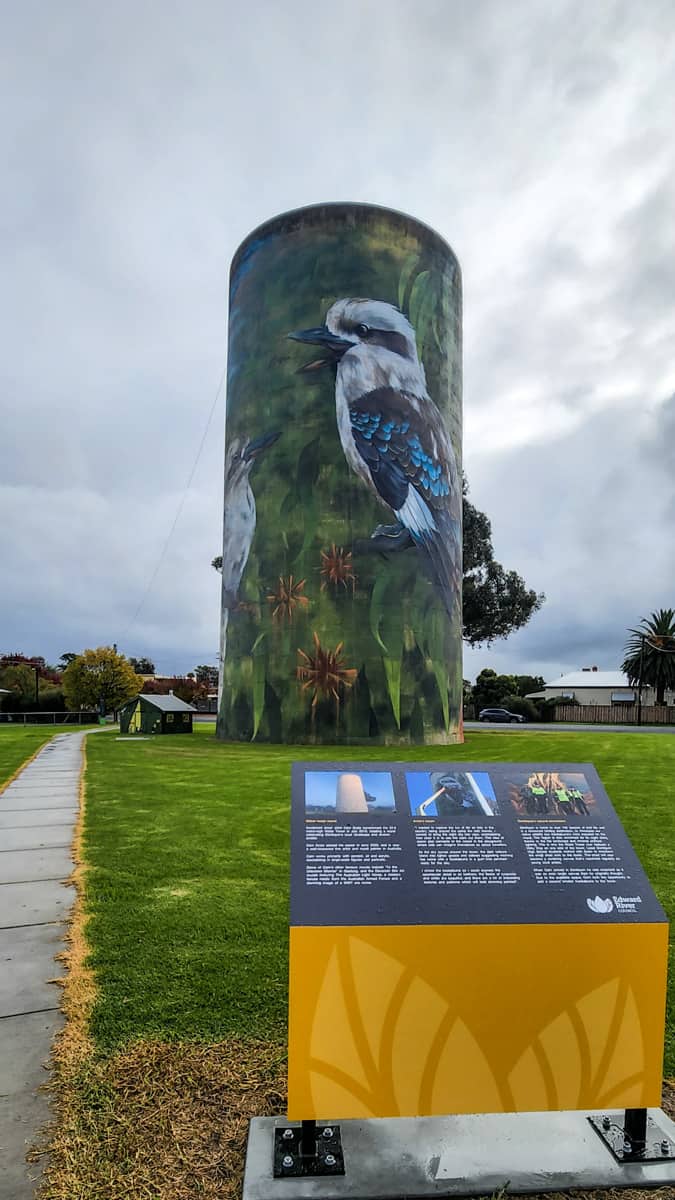
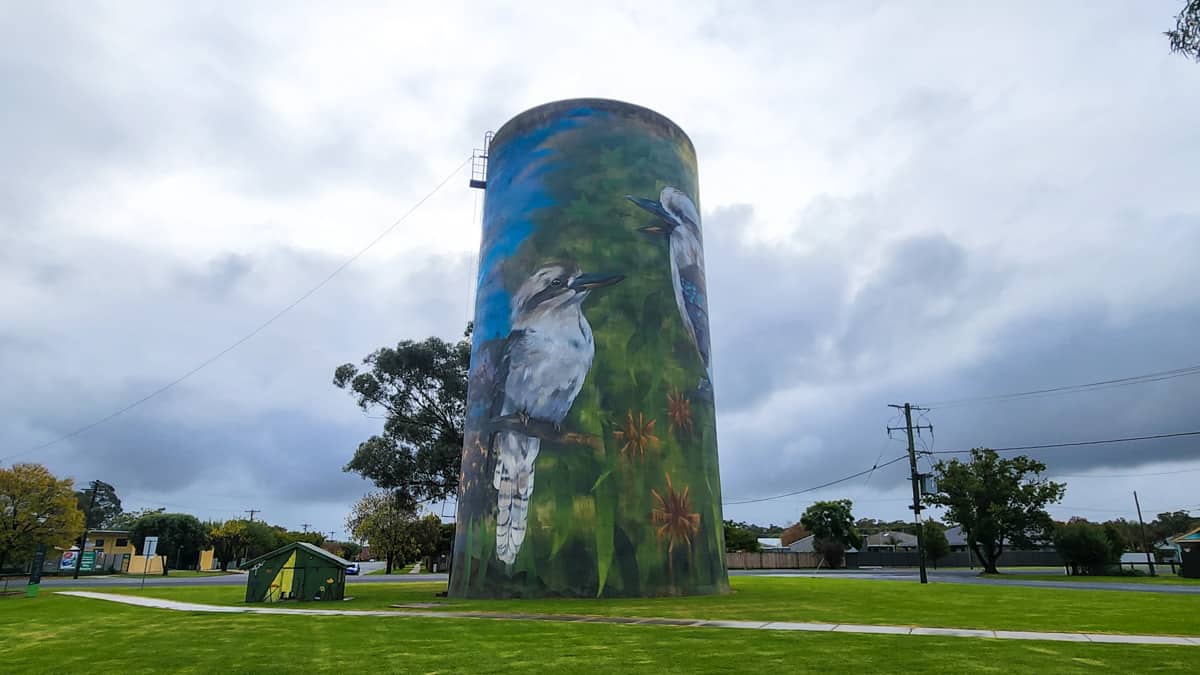
Journey Complete
Victoria's Silo Art Trail is, or was, a longstanding bucket list item for me. I have always been fascinated by the sheer scale of the artworks that have been created on these huge structures and the connection the artists have made with the people of the region they are situated in.
Our trail experience started in Horsham and meandered leisurely through the Wimmera region of Victoria, concluding in the wonderfully named Patchewollock in north west Victoria.
The official silo trail has expanded to more than a dozen individual works but due to time constraints we chose a path that allowed us to take in seven of them as well as the famed Stick Shed at Murtoa and the telegenic town of Minyip, home of Coopers Crossing and where the Eric Bana movie The Dry was filmed.
The star attractions, the silos, are spectacular. Not just in the obvious talent of the artists who created them but also for the tangible way you get a feel for and connect with the communities they depict.
This is a blog about disabled travelling so let me say from the outset that while none of the silos have toilets available, this is a very disability friendly travel experience. All of the silos are viewable from your vehicle or if you'd prefer to wander around them, as I did, they are all on flat, level ground. That being said, they don't call me Wobbly Boots for nothing and I did manage to falll over twice in two days!
Travelling through the Wimmera Region I was immediately struck by the wide open landscape, kilometre after kilometre of flat agricultural terrain, huge investment in farming infrastructure and big skies. The thing that stood out to me the most though was the contrast between the prosperity of the towns we visited.
All of them gave glimpses of what life would have been like when they were thriving communities in post war Australia, but few seem to have gone on to build on that. Minyip enjoys a brisk tourist trade thanks mainly to the fame that The Flying Doctors and The Dry have brought to the town and Ouyen is a bustling centre towards the northern end of the trail, but the rest of the towns are really struggling despite the thousands of Silo Art gazers literally driving through their streets every month.,
Murtoa, Rupanyup and Patchewollock in particular whilst having wonderful names, seem to be in the words of Roger Waters, hanging on in quiet desperation. Empty main sreets with boarded up derelict buildings might make for good photos for passing tourists but you get the feeling that these towns in particular are not benefitting from the very things that are bringing people to their region.
This trail is an experience. Emotive, visually spectacular, full of unique experiences and memorable characters and well beyond my most optimistic expectatiions.
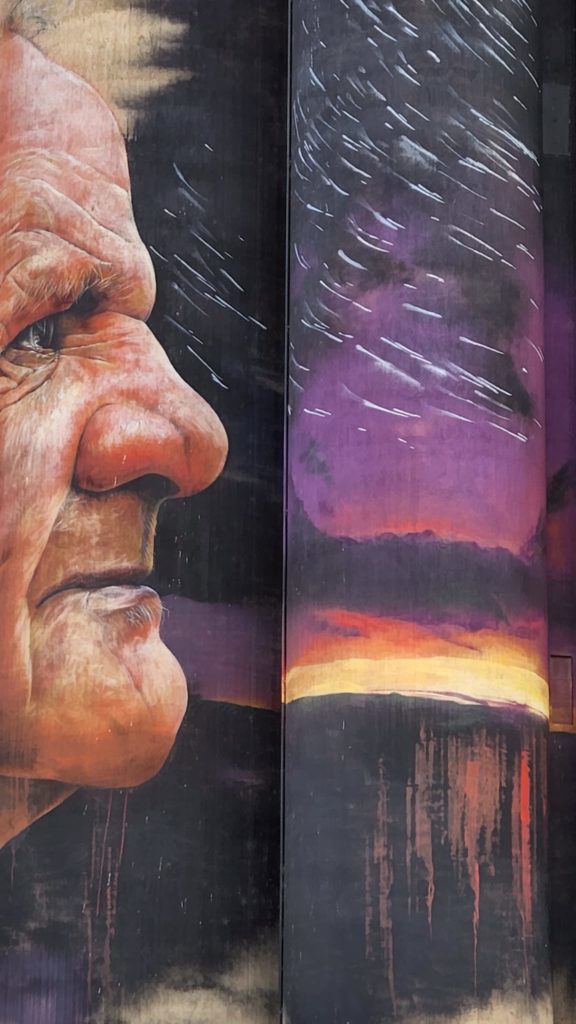
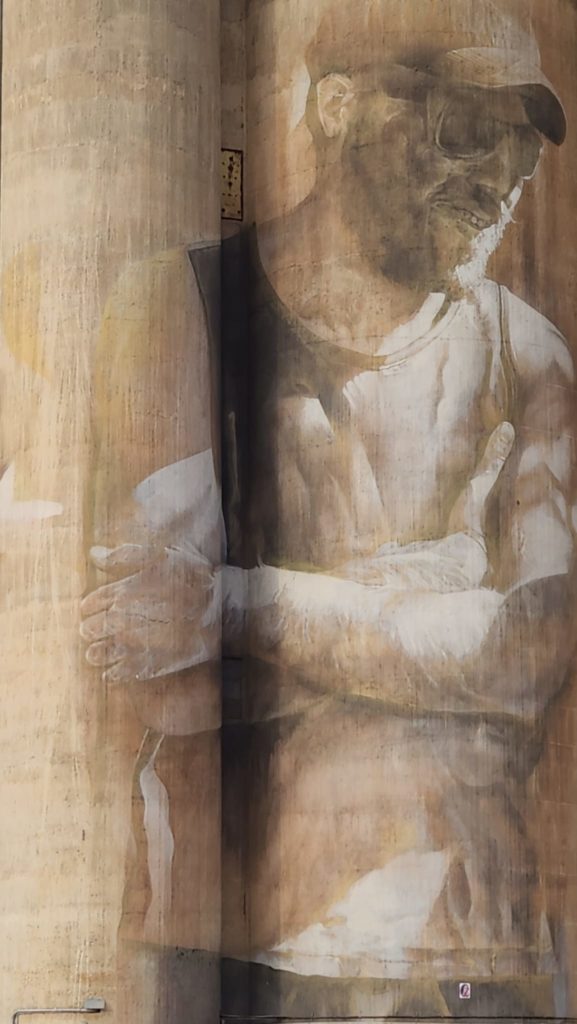
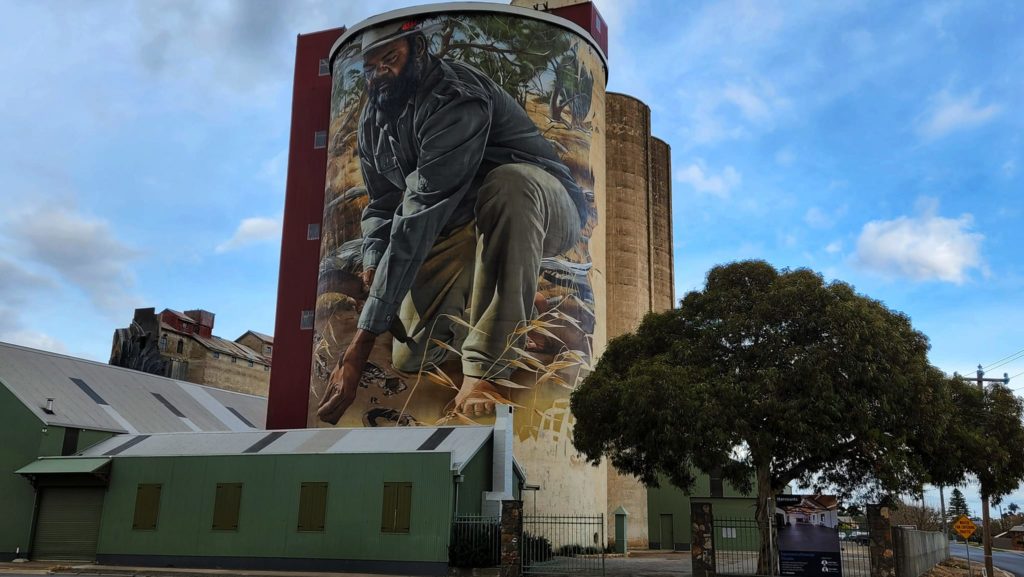
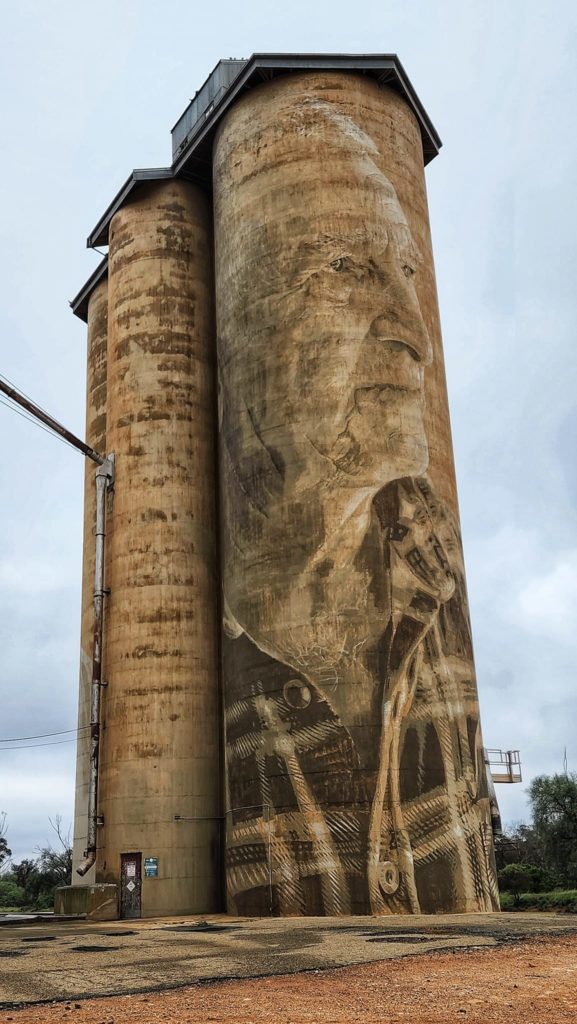
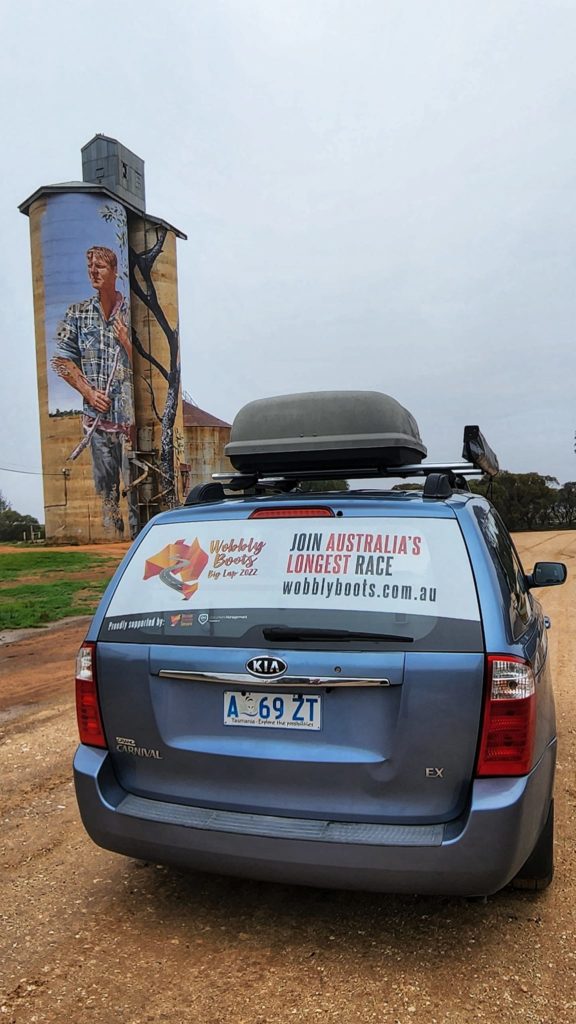
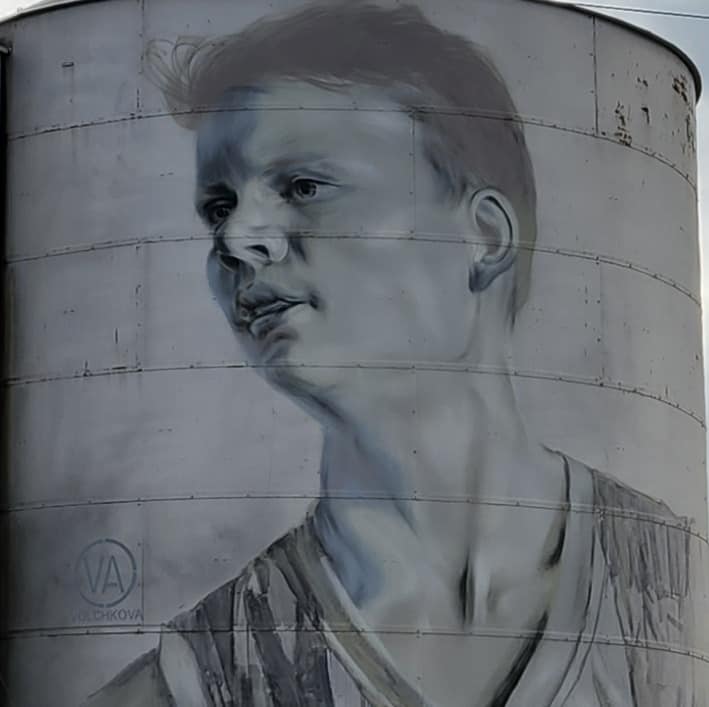
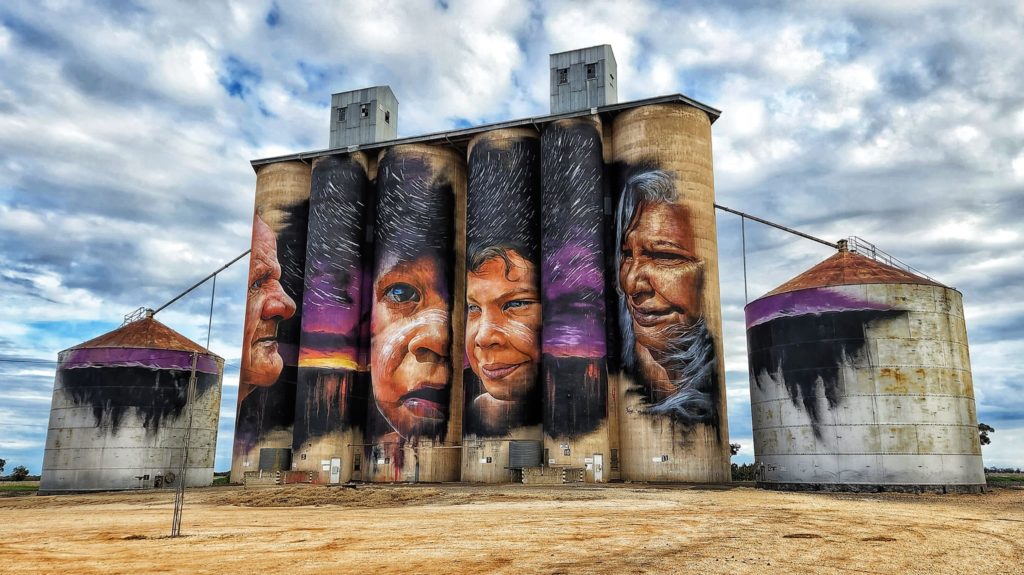
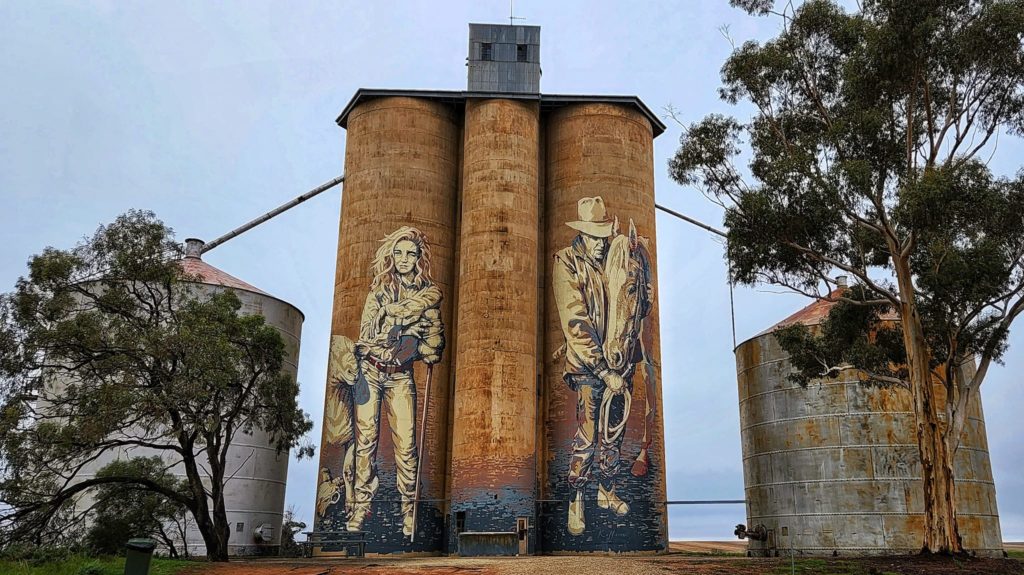
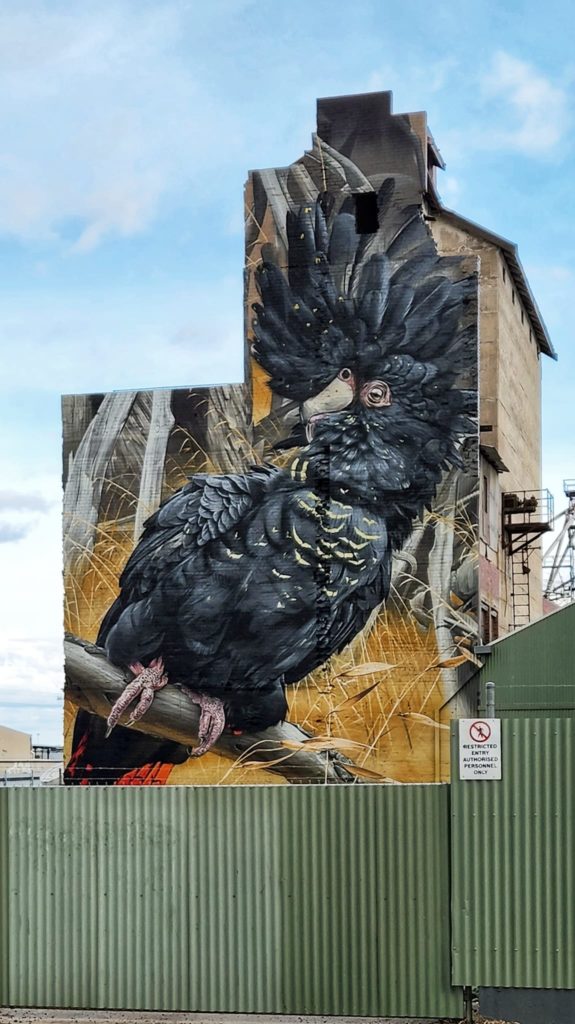

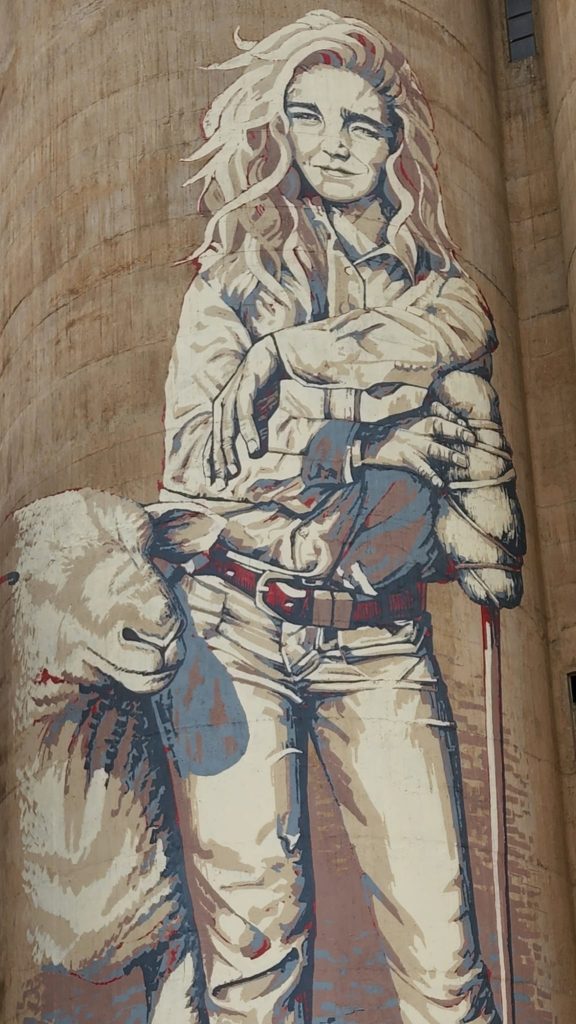
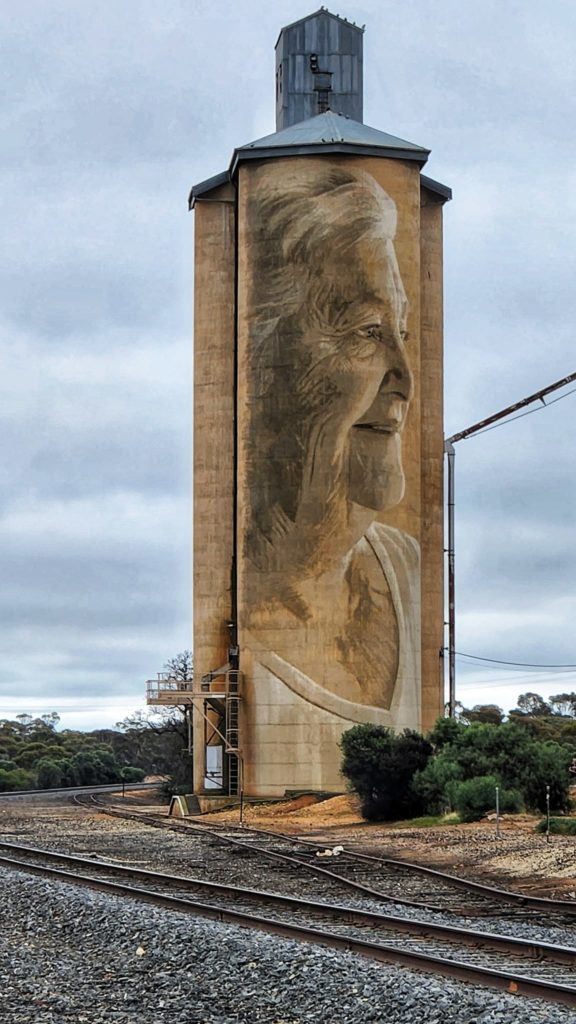
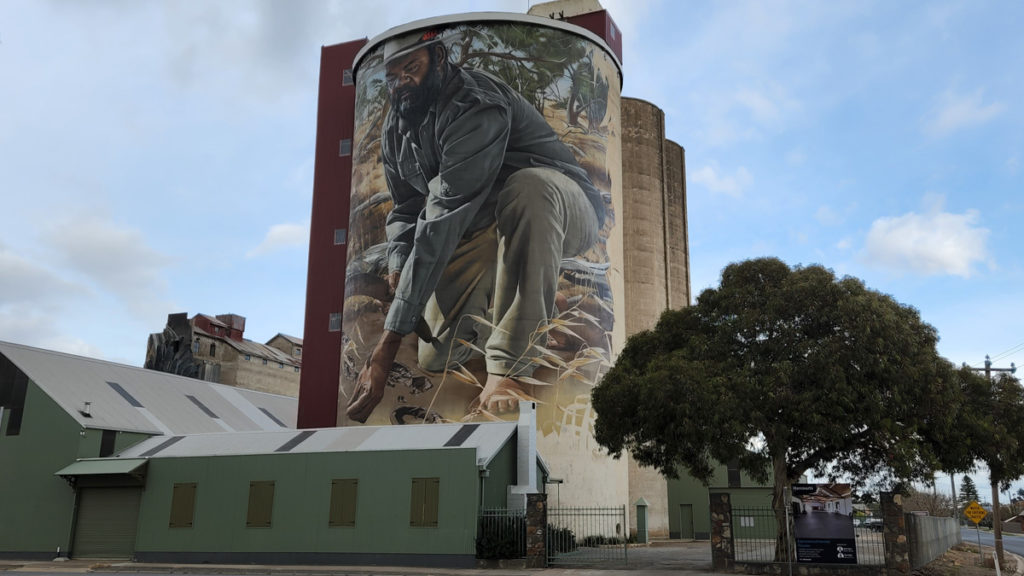
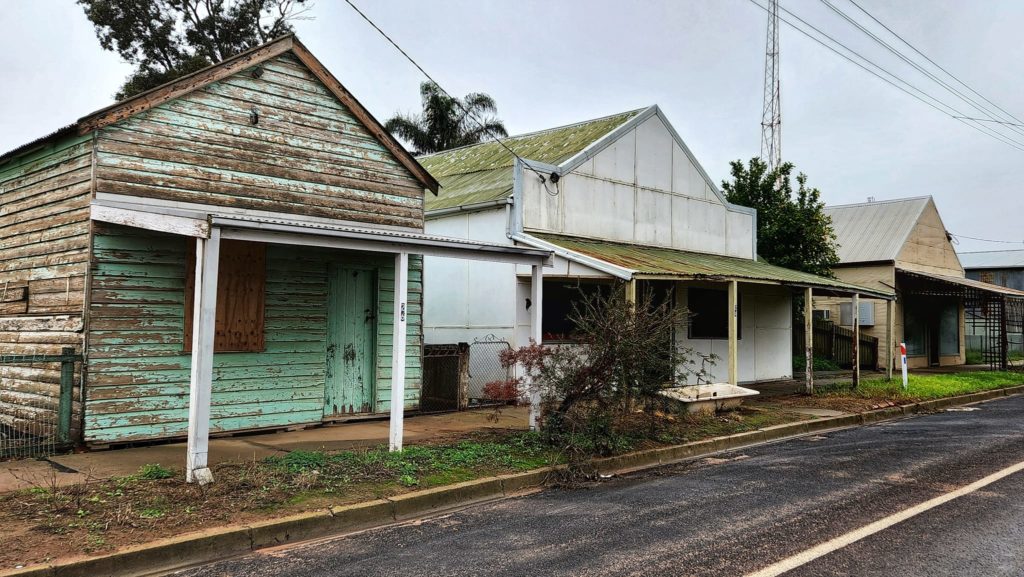
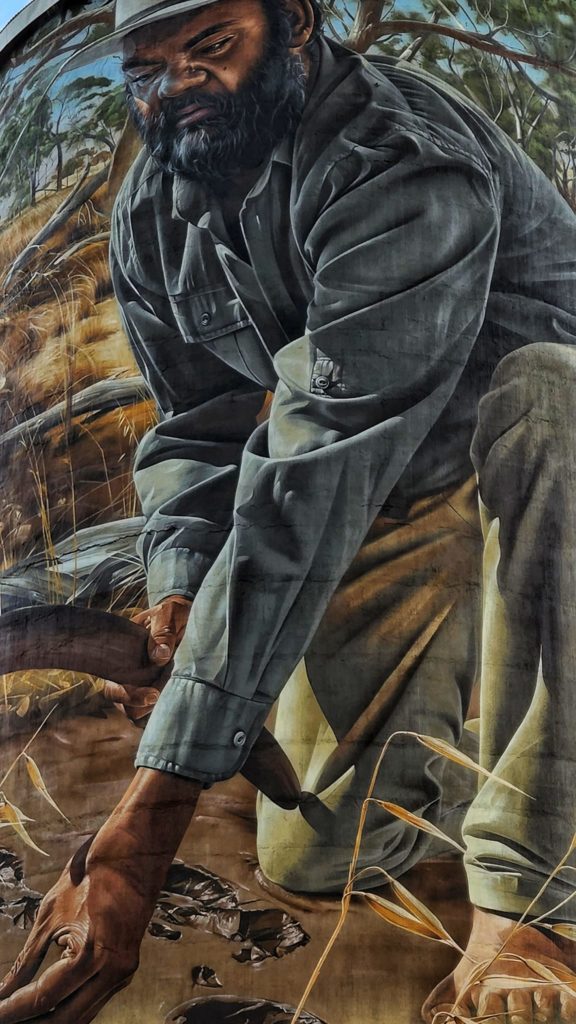
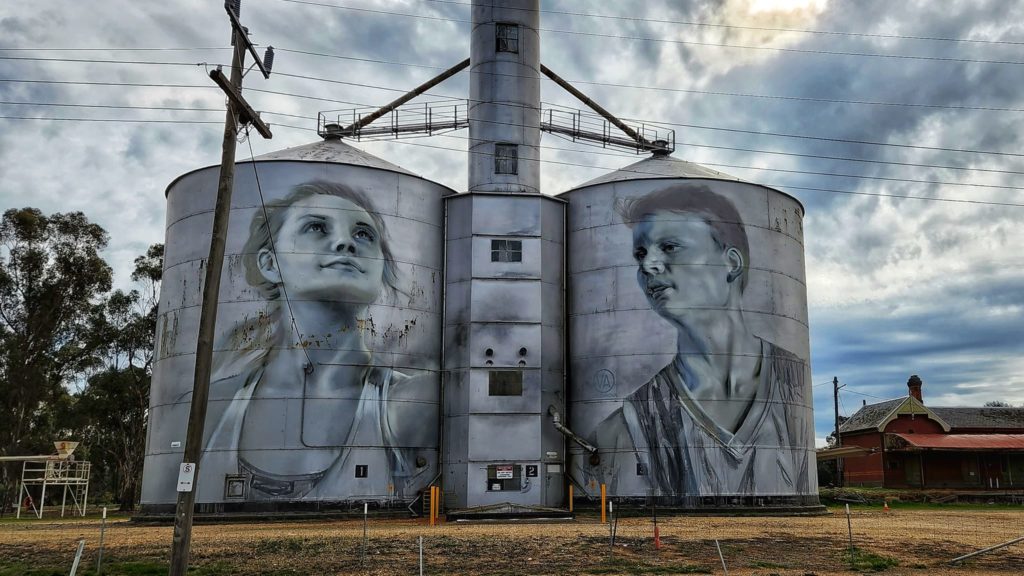
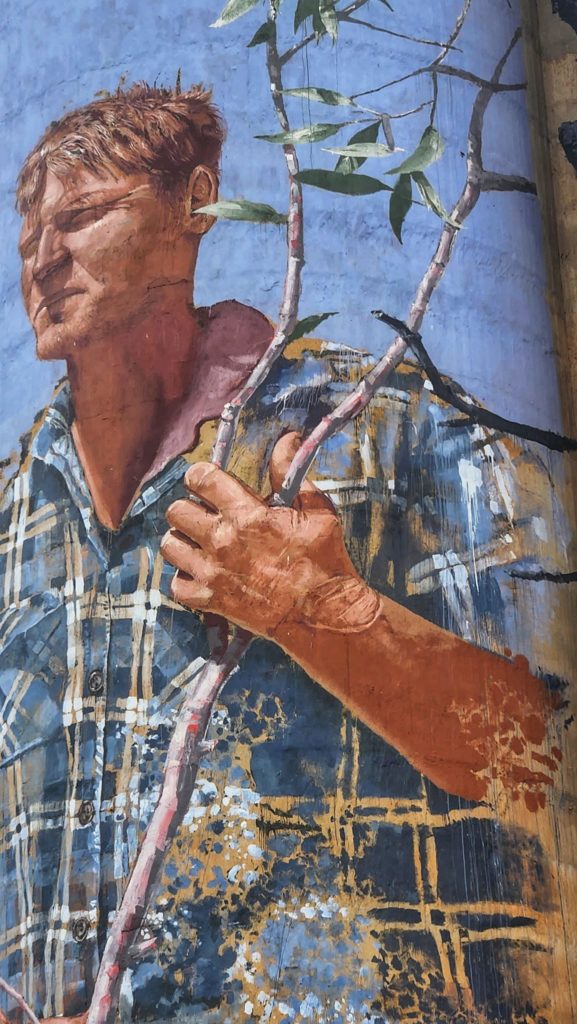
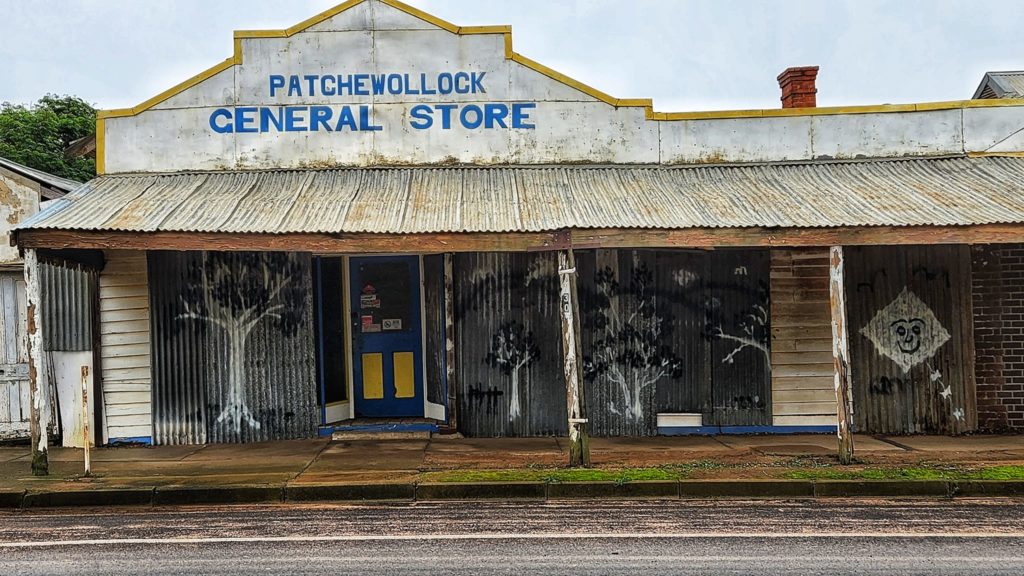
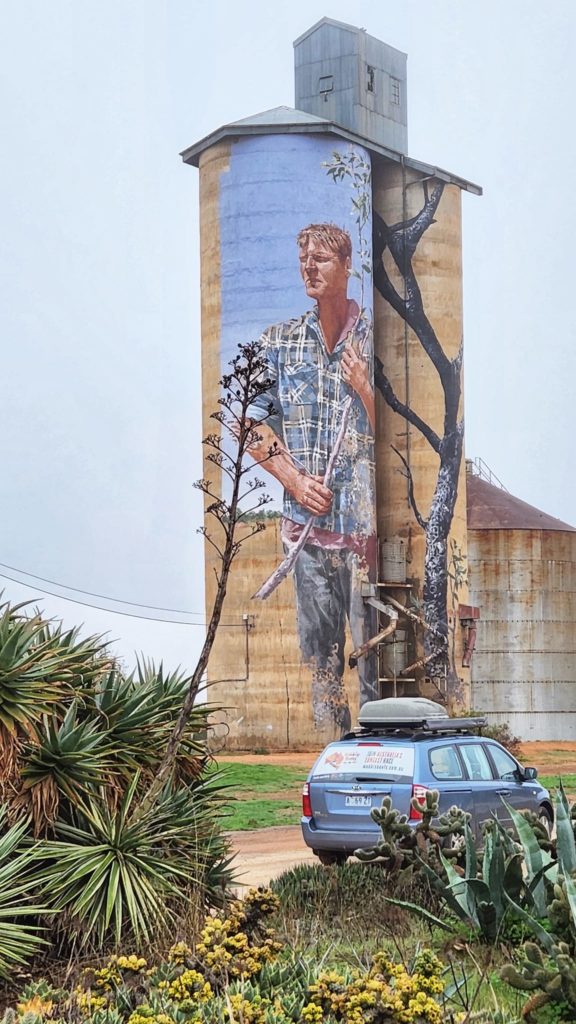
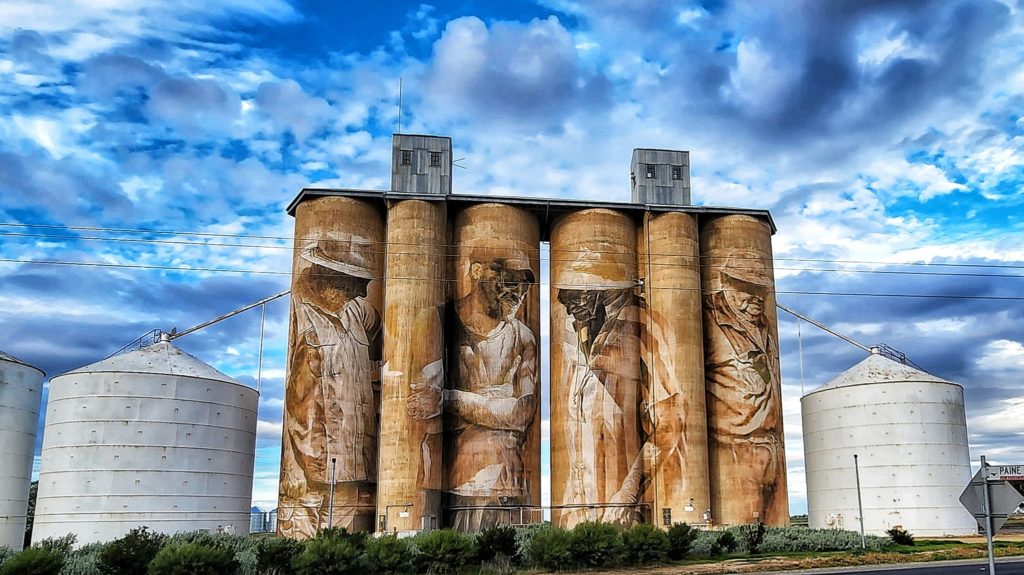
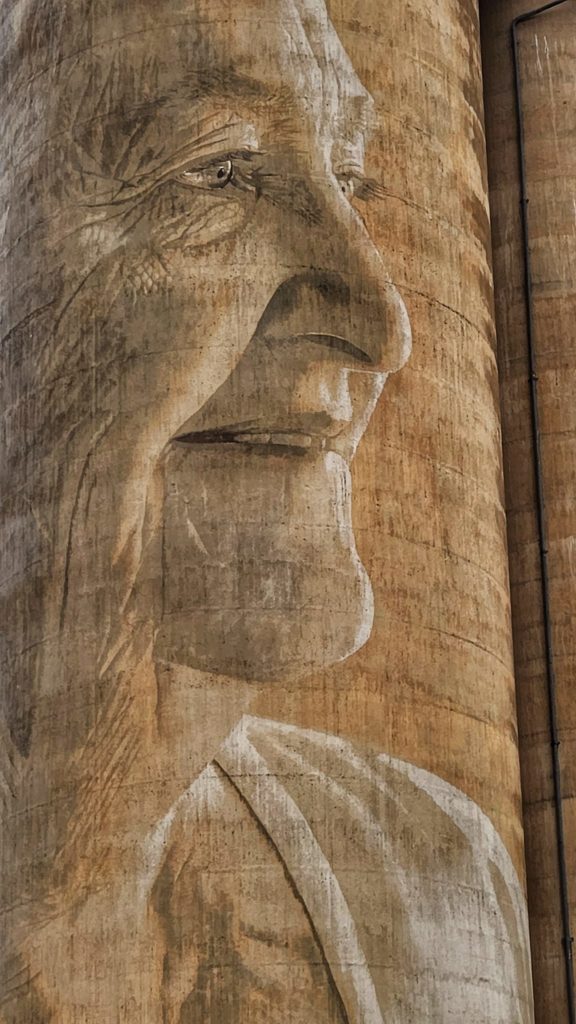
Our visibility on the road just increased 1000 fold thanks to a very generous donation from Document Management Tasmania and their signage division Hobart Signage.
The rear window signage is sure to attract attention as we make our way around our big and beautiful country and is sure to start many conversations about disability awareness in the travel industry.
To Keirran Downham, Paul Fallon, Phil Hoskinson and the entire DM Tasmania team our heartfelt thanks to you all for your contribution to the Wobbly Boots Big Lap.
